
Day 2, from Thimphu to Gangtey
The next day, we woke up to a soft morning. A dreamy glow shrouded the courtyard, the air refreshing with a faint smell of pine. It all looked very inviting, but unfortunately we didn’t have much time to linger. We only had a total of 7 nights in Bhutan and were eager to get to the more remote parts of the country, so we had to let go of some very interesting attractions here in the capital – The National Library, The Heritage Museum, National Memorial Chorten…
第二天醒來,一片寧靜。清新空氣中隱約飄著松樹的香氣,中庭石板上籠罩著一層薄紗般的光輝。可惜我們並沒有太多時間在 Thimphu 逗留 – 不丹旅程總共只有7晚,比起待在城市,我們更想去偏遠的鄉下探一探,這次只好跳過位於首都的國家圖書館、博物館、紀念佛塔等景點。
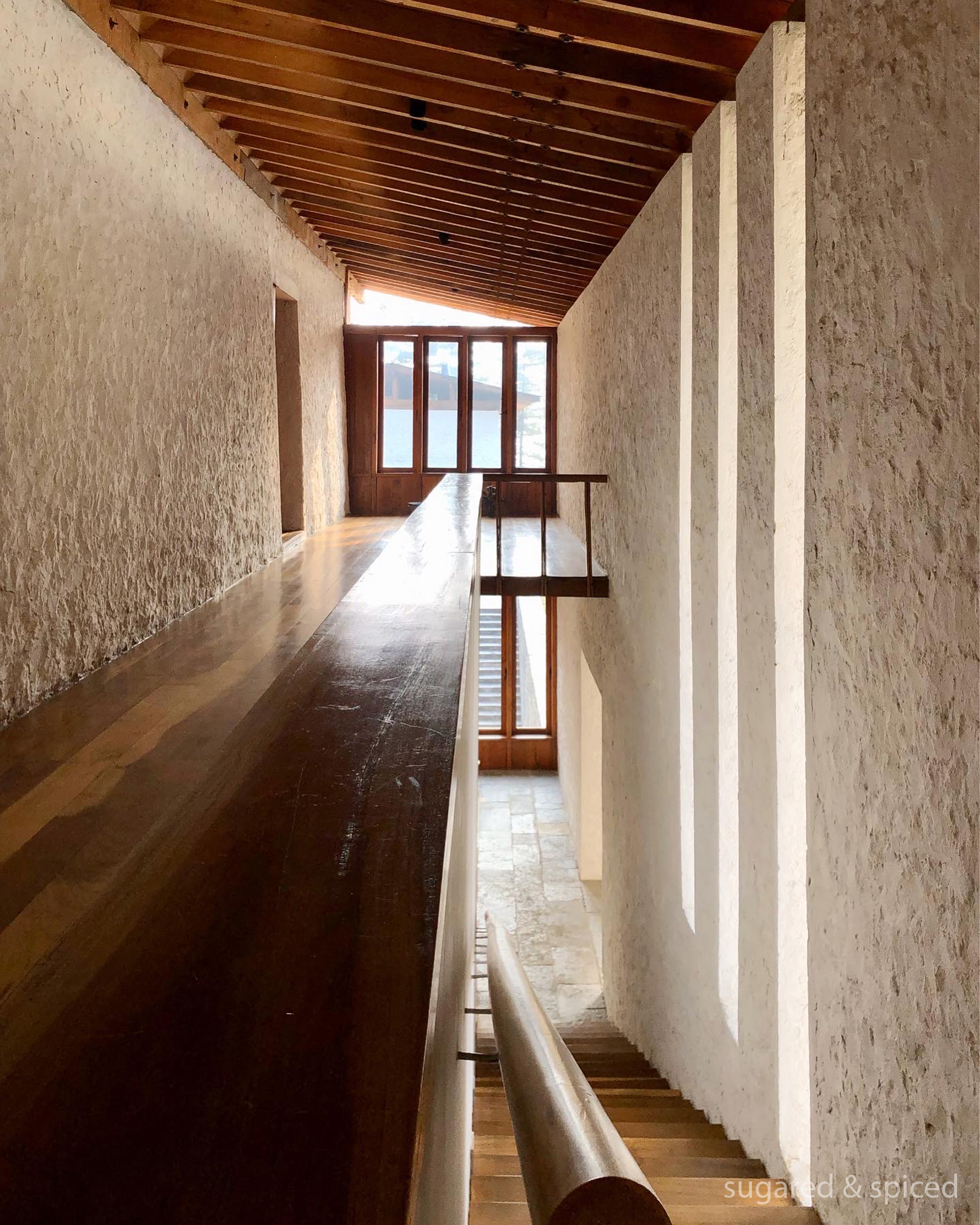
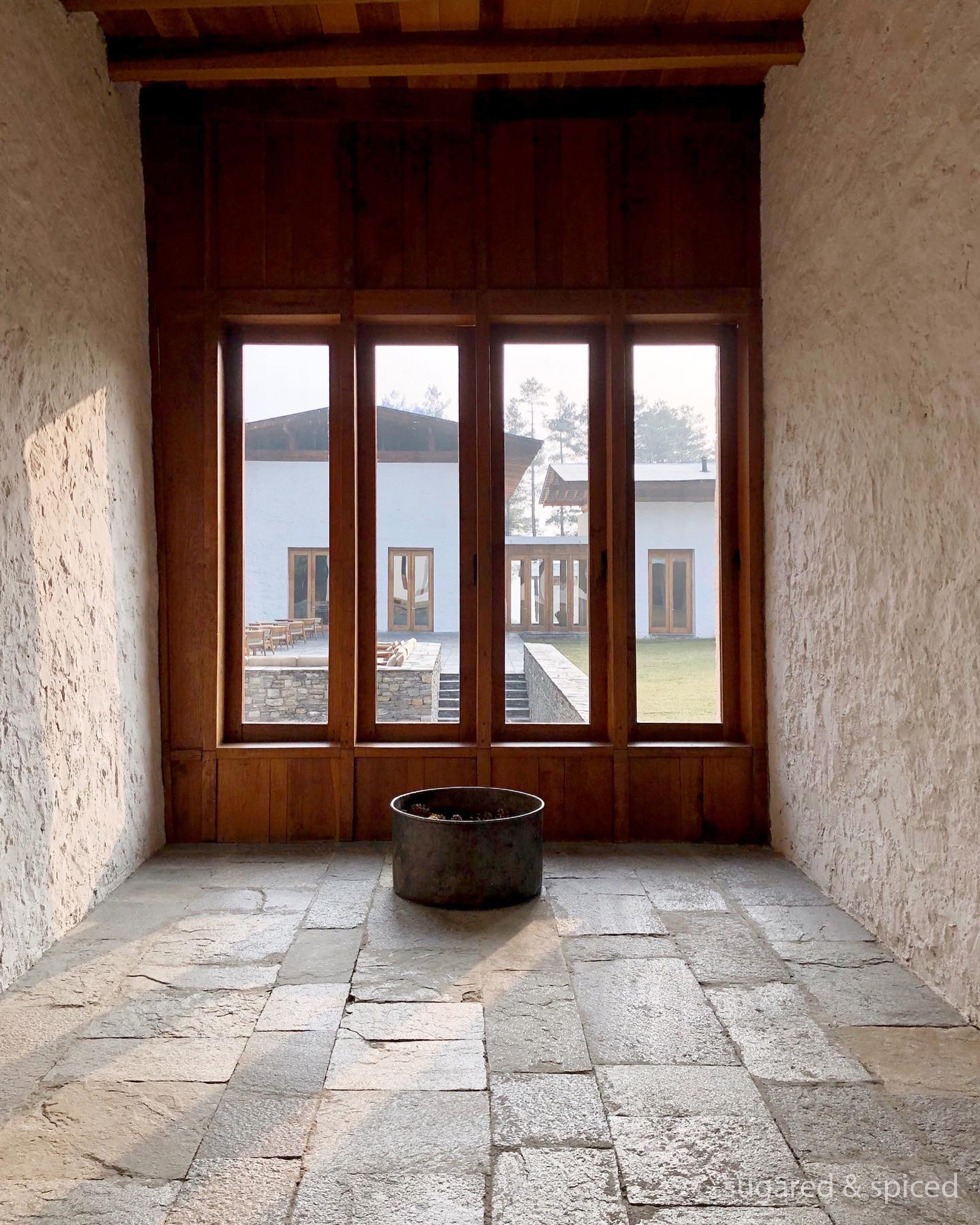
As scheduled, we were to do a 5-hour drive from Thimphu to Gangtey today. But first, a heart-warming Bhutanese breakfast at the lodge.
我們今天要從 Thimphu 開5小時的車前往 Gangtey,不過首先,得吃份熱騰騰的早餐再上路。
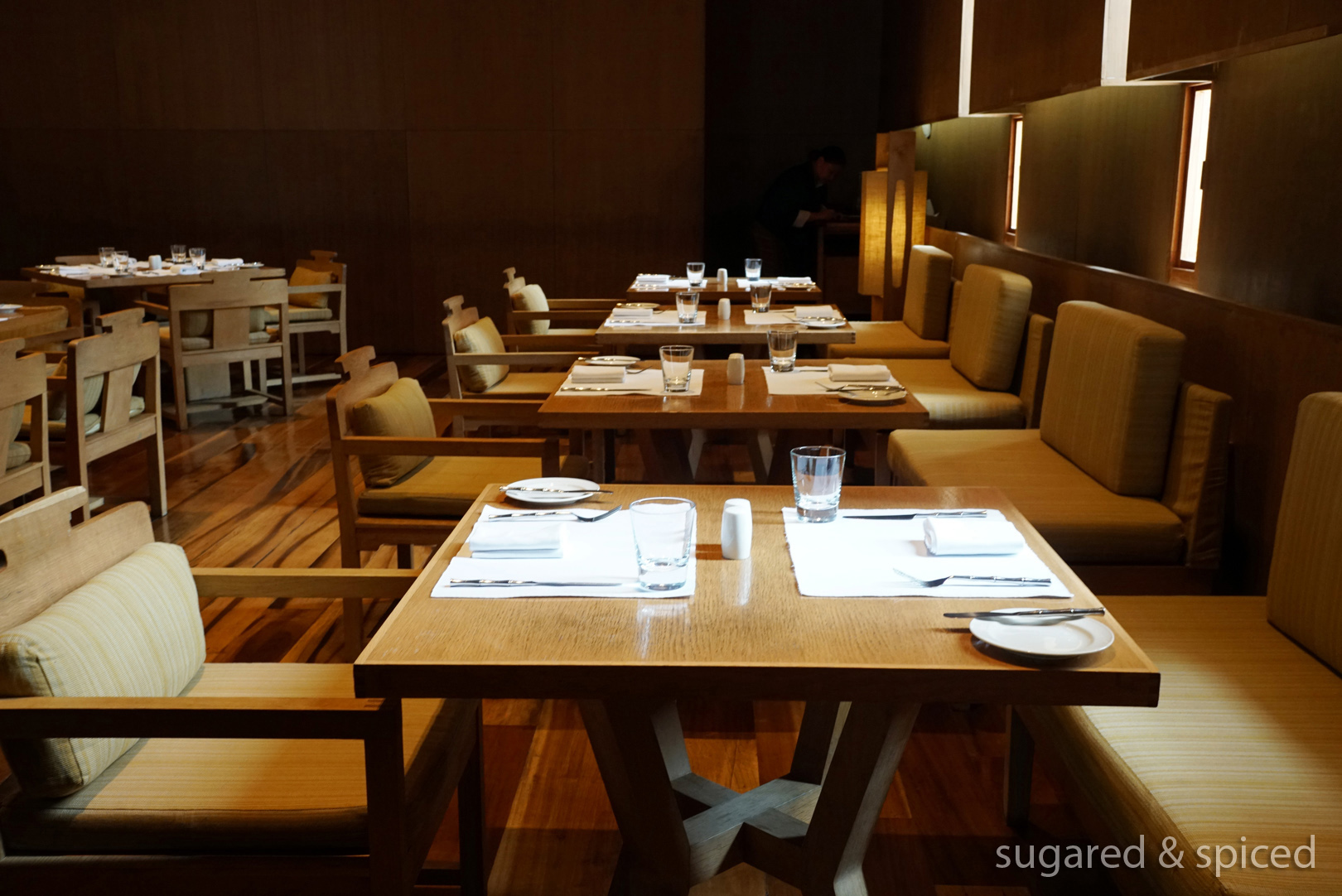
(Regardless of breakfast choice, fresh pastries and house-made jams are always offered.)
(無論是西式還是不丹式早餐,酒店都會先送上一籃新鮮烘焙的西點和自製果醬。)
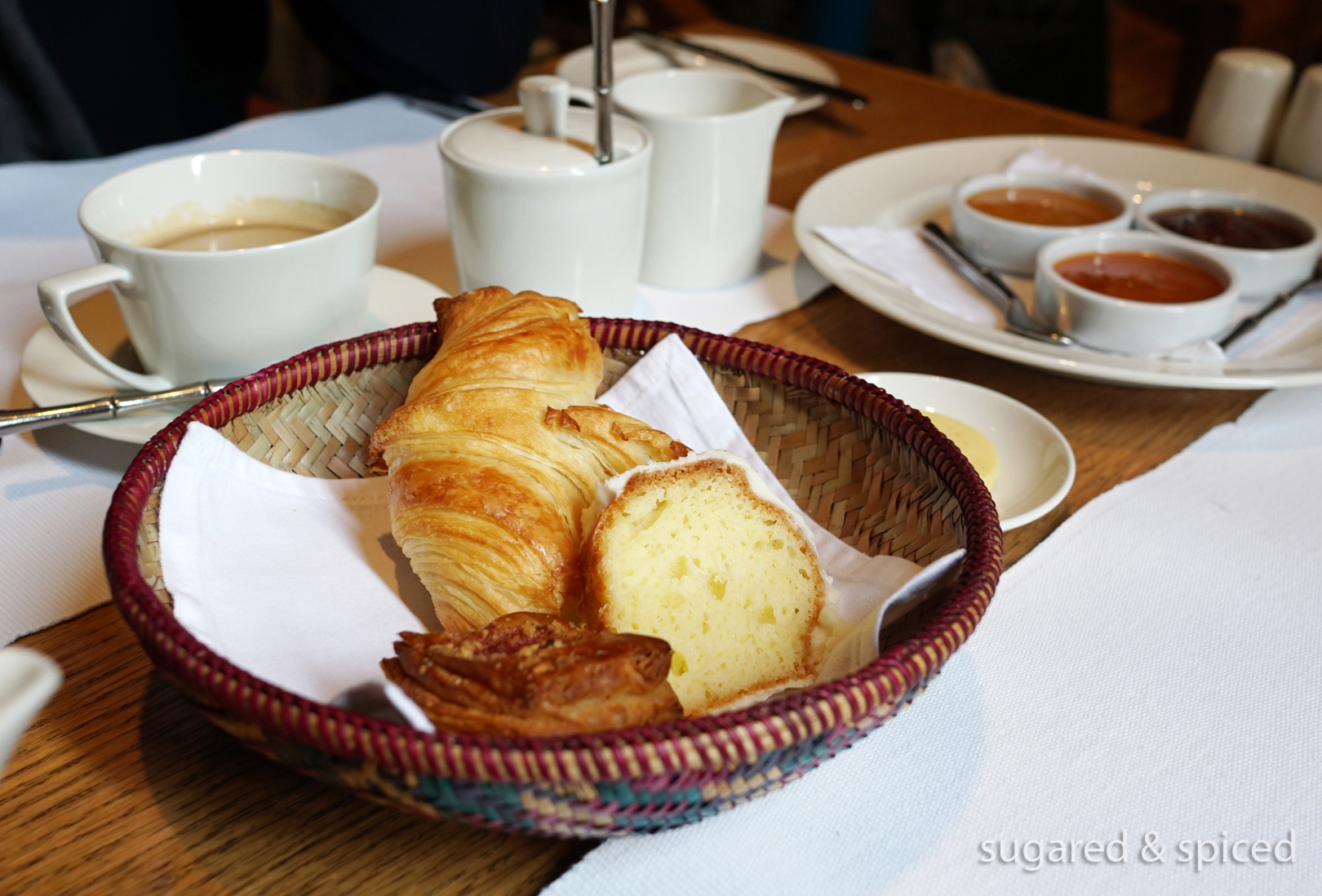
I absolutely loved the thupka, a traditional rice porridge with pork belly, ginger, onion, garlic, tomato, and coriander. Slightly spicy, totally warmed me up from the inside out.
“Thupka” 是不丹人的稀飯,裡面放了豬肉、薑、洋蔥、大蒜、番茄和少許香菜做調味,稍微帶一點辣,一碗下肚後,馬上從內到外暖起來,真是讓人極度舒服的美味早餐。
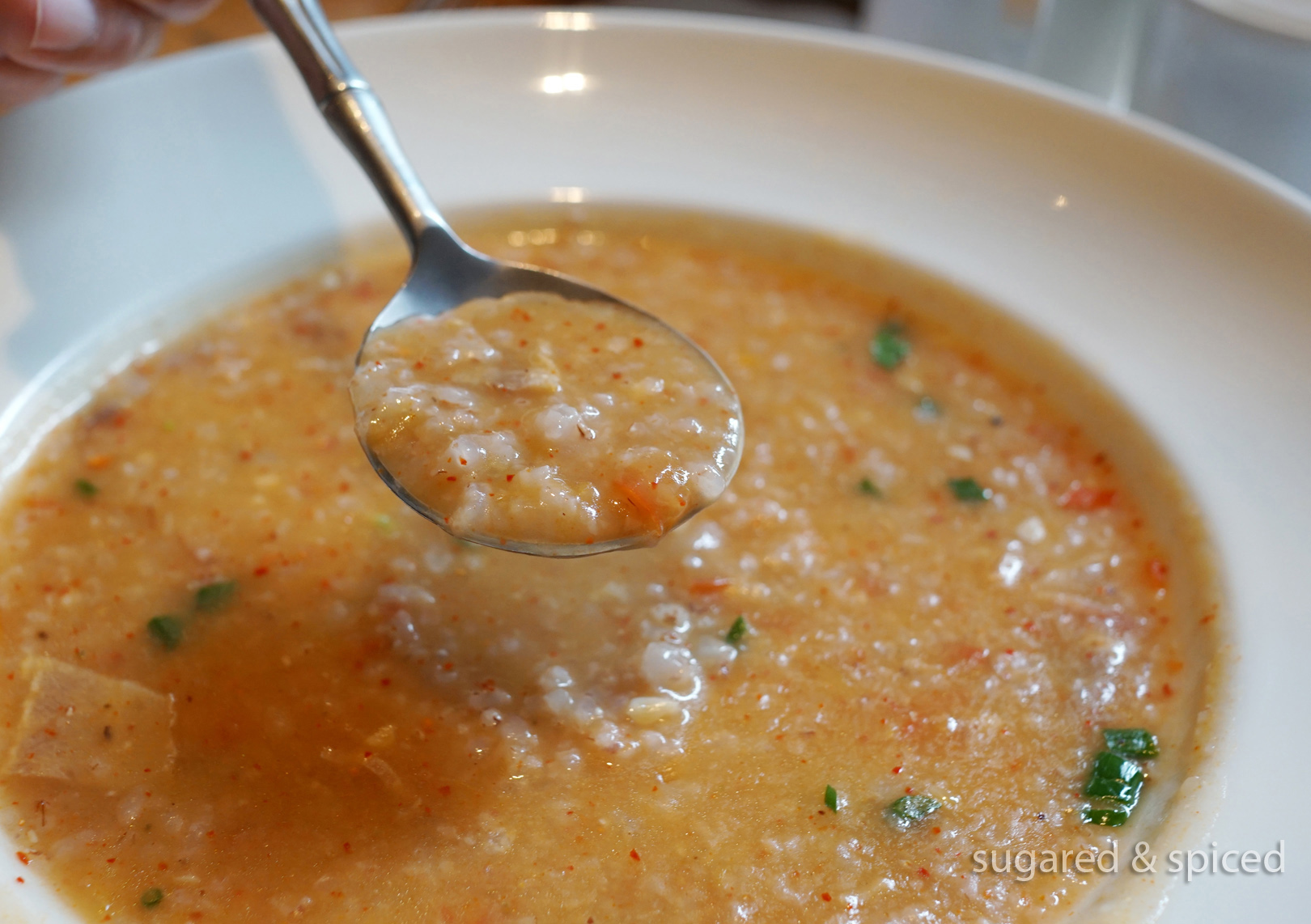
The bhatup was equally appetizing, comprised of traditional broth, braised beef, handmade noodles, spinach, local pepper. This was one of the very few occasions where we got to have noodles in Bhutan, as rice is the main staple food.
我也很愛 “bhatup”,濃郁的傳統牛肉湯裡有手工麵條(帶有像麵疙瘩那樣充滿嚼勁的口感)、菠菜、辣椒。不丹人大多以米飯為主食,這是我們在當地吃到的少數麵條之一。
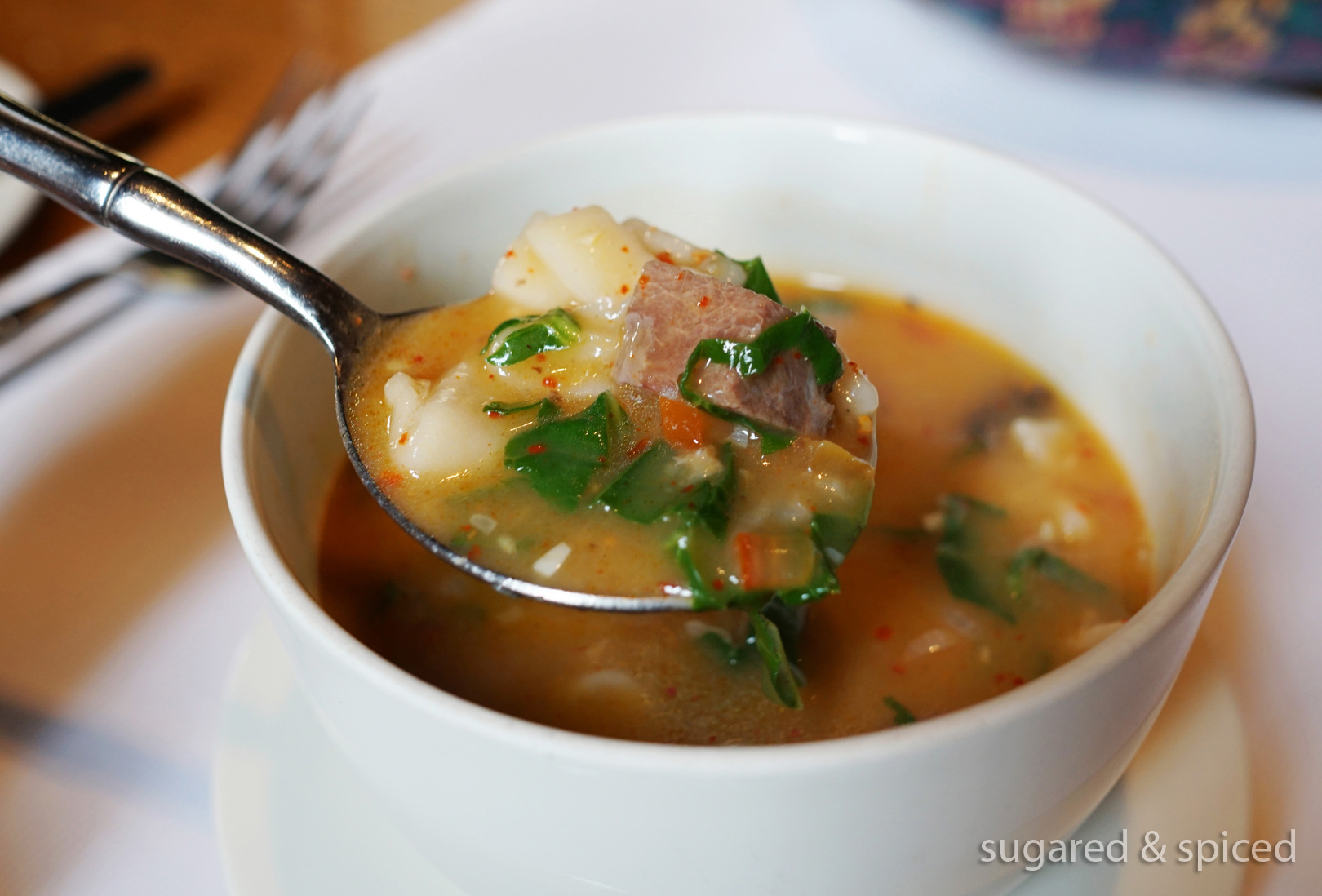
Ngaja is a milk tea that Bhutanese people enjoy drinking in the morning (or anytime they fancy). I happily adopted the habit since morning #1 – this was the first of many pots that I were to consume on this journey.
不丹人習慣在早晨喝 “ngaja” 奶茶,我也入境隨俗,在這里幾乎每天都喝上一壺。
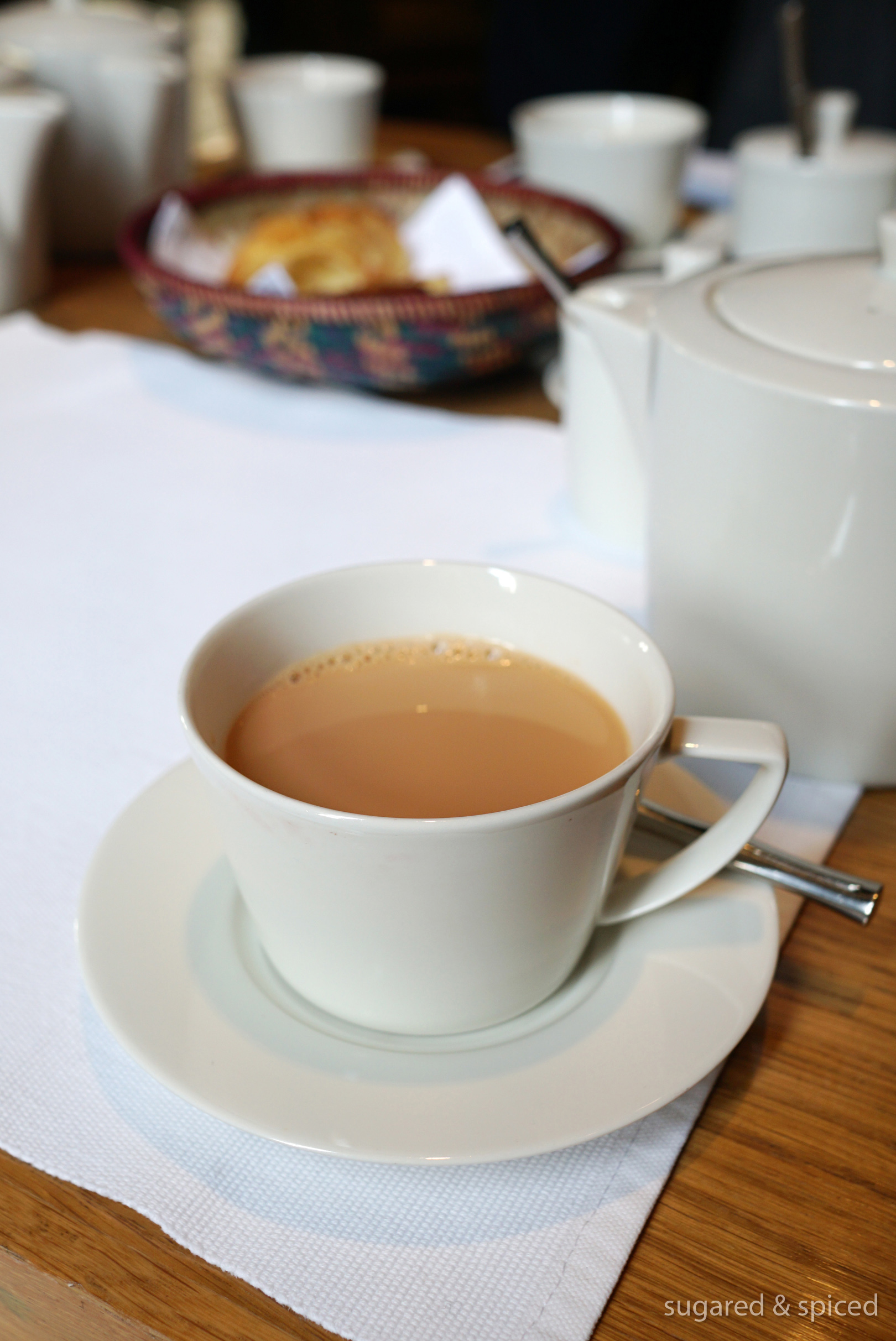
Then, just before we embarked on our journey, a young monk gave us a blessing, involving a short but intense chant, some holy water, and the tying of sungkay, a piece of blessed thread to keep us safe on the road.
啟程之前,一位年輕的和尚特地前來給我們誦經祈福。他在我們手掌心裡倒了聖水(喝一點之後撒在頭上),並在手腕上綁了加持過的彩繩 “sungkay”,保佑我們一路平安。
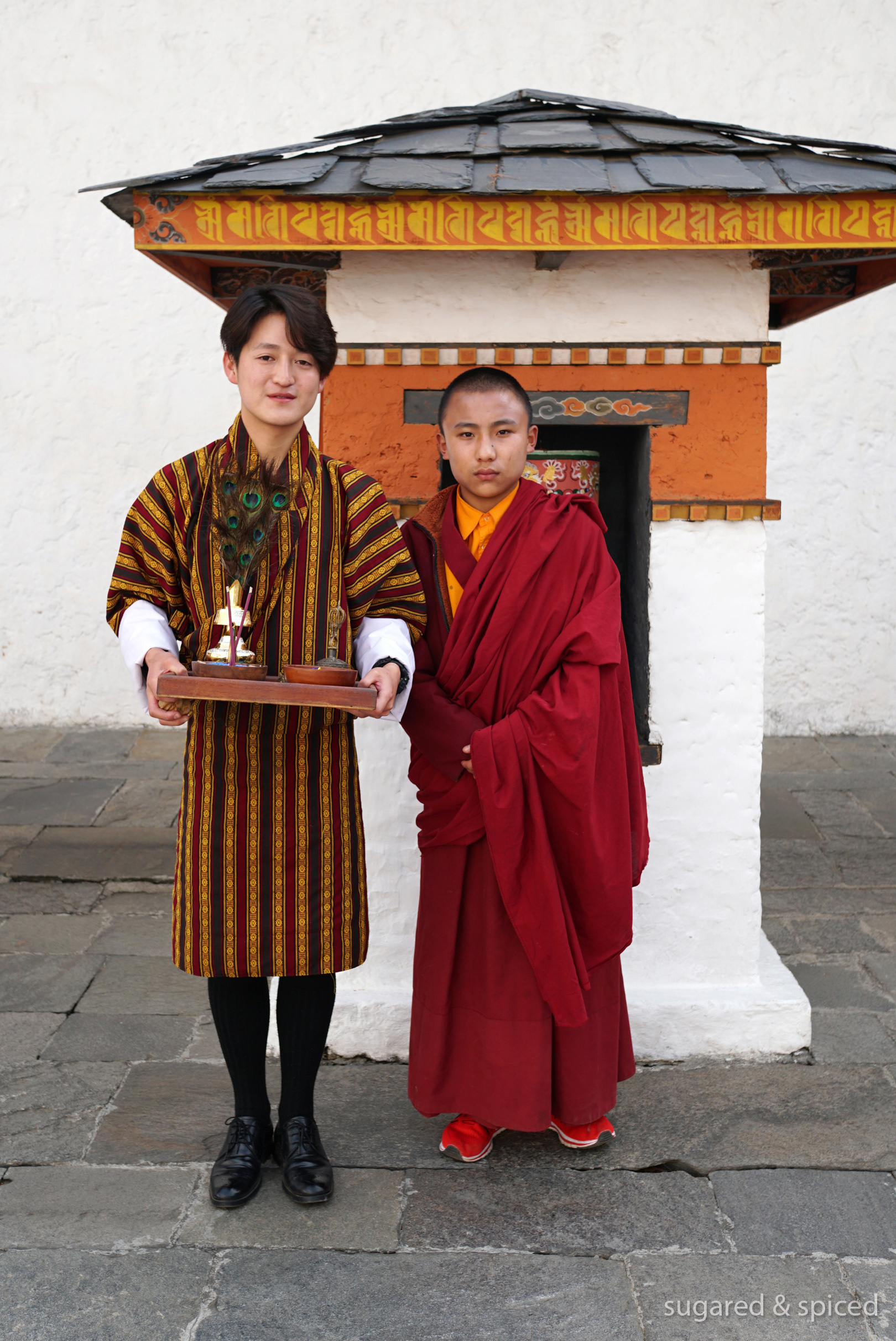
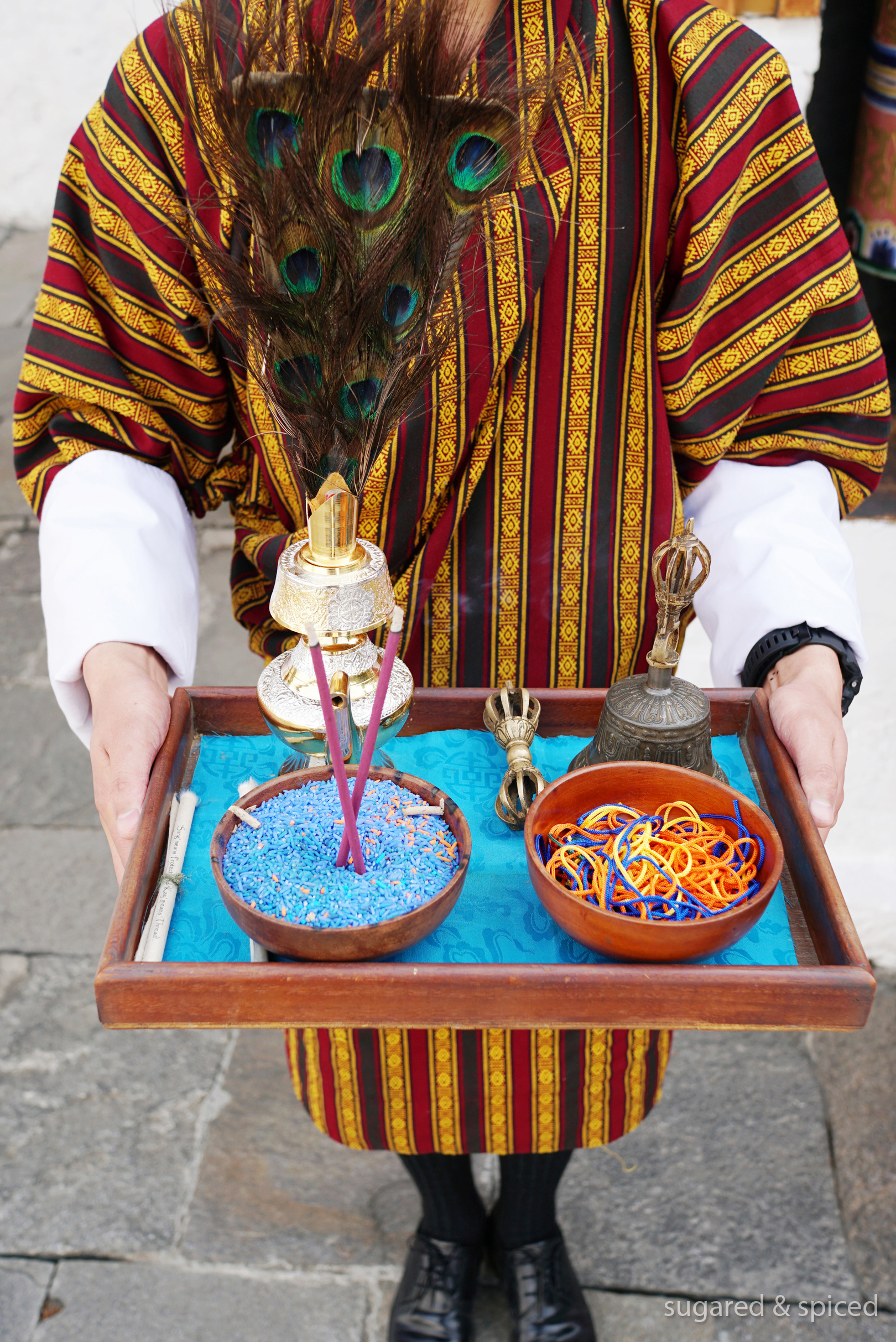
Feeling fortified by the blessing, off we went.
We soon learned that roads in Bhutan can be fickle. Sometimes they are wide, about a lane and a half, and nicely paved; sometimes they are pocked with potholes, and occasionally they narrow to a dirt track. But we were safe in the hands of Kinley, who has been driving at Amankora for 10 years. He knows every turn and nook of the roads, ensuring that the drive is as smooth as can be, even on occasions where he was overtaking other cars or giving way to cows.
And yes, the roads in Bhutan belong to everyone and everything: people, cars, trucks, buses, dogs, cows, yaks…
帶著如此美好的祝福,出發吧!
不丹的路只能用變化多端來形容 – 有時寬敞平順、有時坑坑窪窪、有時根本是泥土小徑。不過 Kinley 在 Amankora 已經有十年駕駛經驗,似乎對道路的每一個轉彎,每一個凹洞都瞭若指掌,連在超車或減速讓牛隻先行時都非常順暢,讓人放心。(話雖如此,容易暈車的人還是要帶暈車藥。)
如你所見,不丹的路是給大家共用的:人、小車、大卡車、公車、狗、乳牛、氂牛…
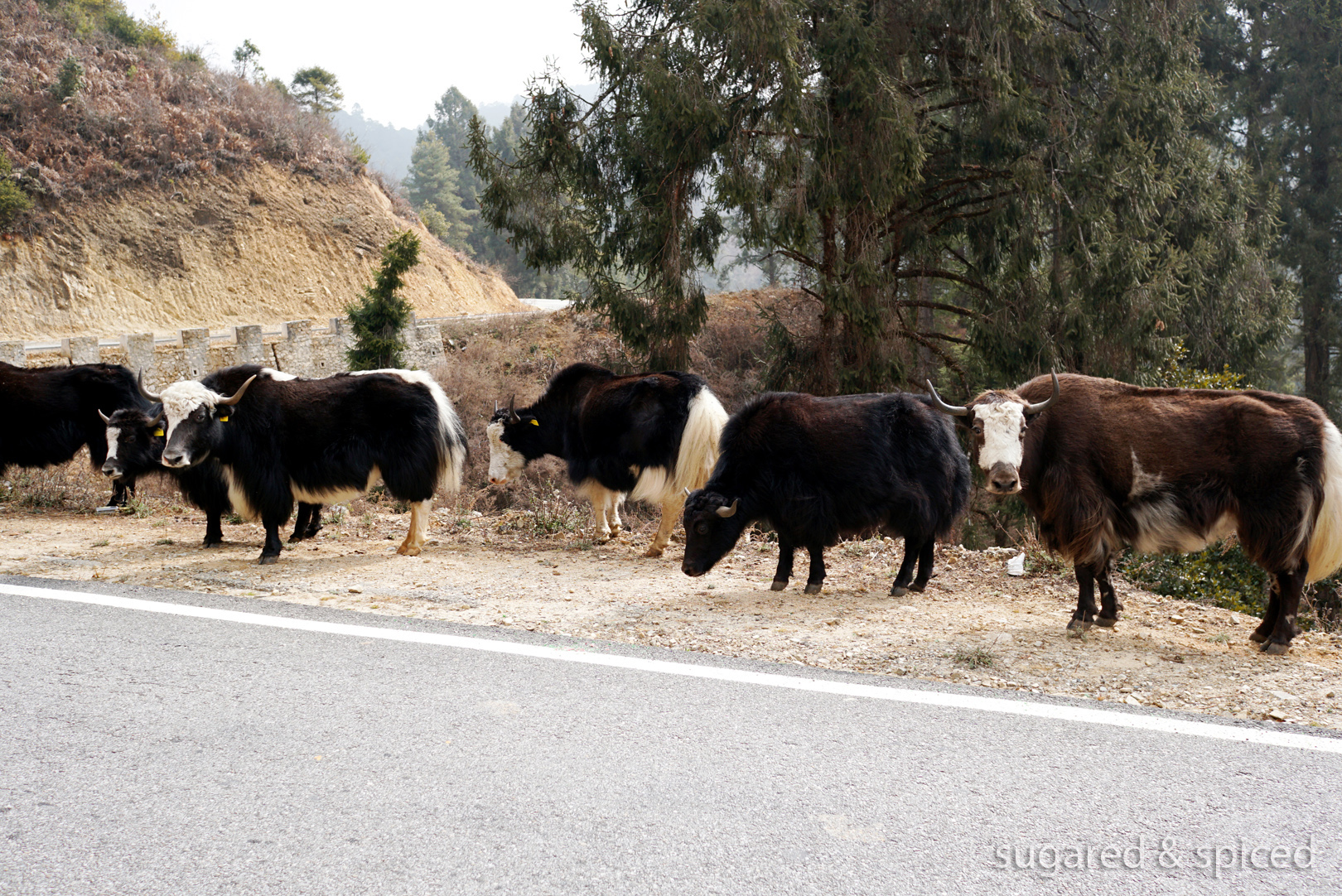
On the way, we reached the Dochula Pass at an elevation of 3,100m. Here, Ashi Dorji Wangmo Wangchuck, the eldest Queen Mother, has built 108 stupas on a knoll at the top of the pass in honor of the fourth king, her husband, who in 2003 led the Bhutanese army in ousting several thousand Indian insurgents hiding in the jungles of Southern Bhutan. These white structures stand erect like proud soldiers, their red-and-gold roofs glistening in the crisp and clean mountain air.
前往 Gangtey 路上必經的 Dochula Pass(多楚拉山口)是著名景點。不丹第四任國王曾在2003年親自領軍鎮壓南方邊境的印度反叛份子,戰爭結束後,皇后 Ashi Dorji Wangmo Wangchuck 在 Dochula Pass 為國王建立了108個佛塔,紀念在戰爭中殉難的不丹士兵,同時也祈求世界和平。一座座白色佛塔像勇敢計程車兵一樣在風中直挺挺地矗立著,紅色、金色的裝飾在太陽下閃閃發光。
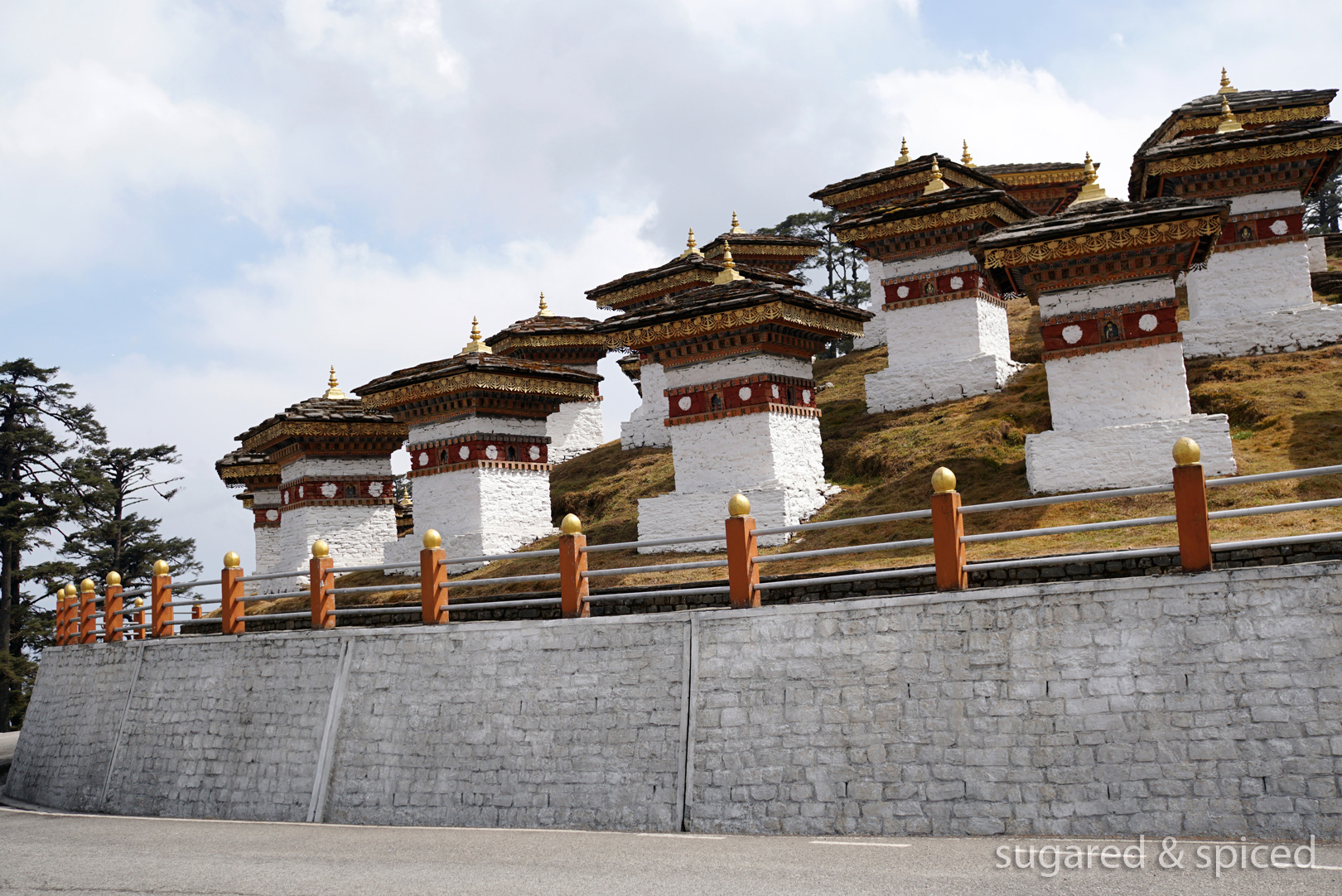
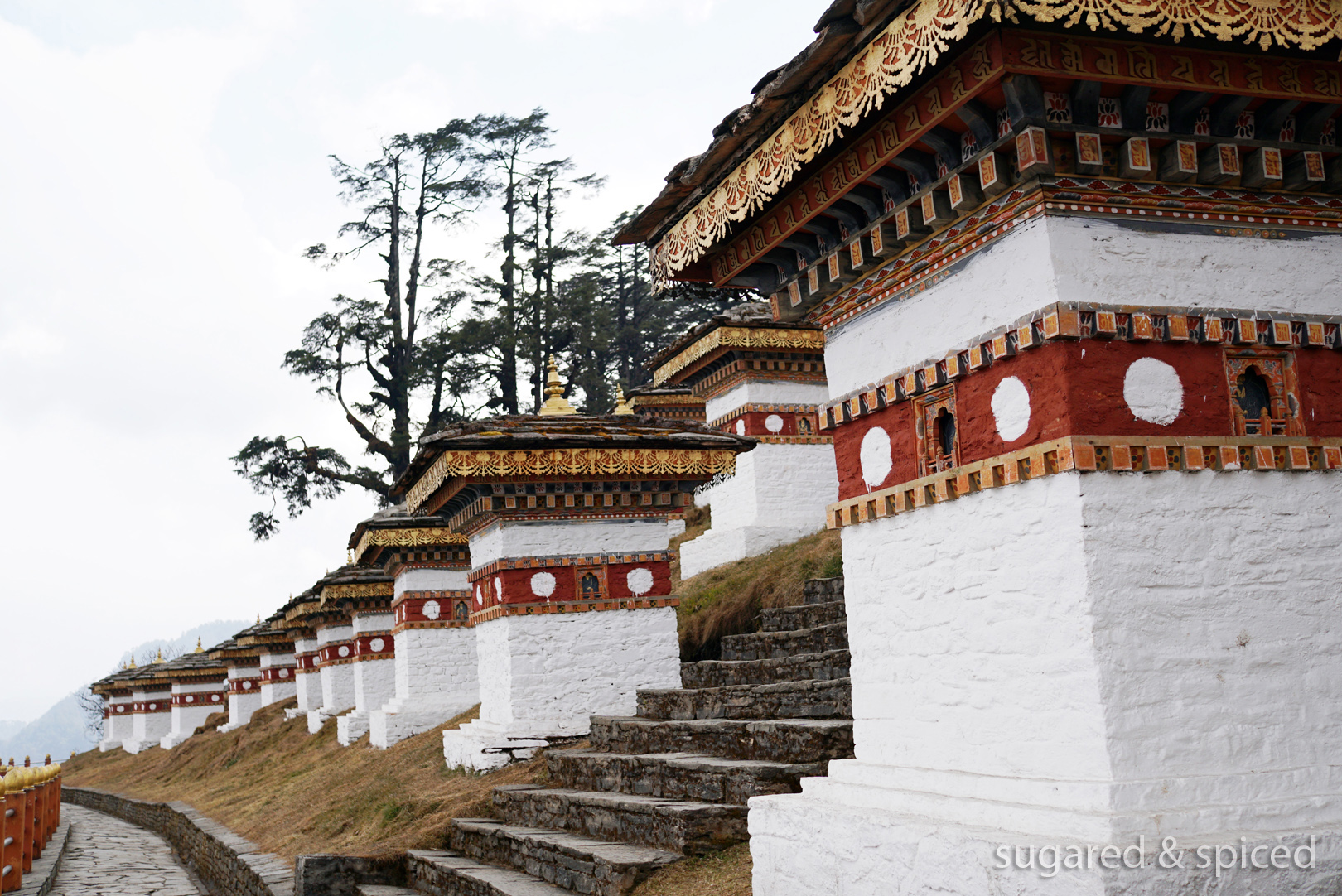
On a clear day, one should be able to see the Himalayas from this high point, but unfortunately the weather wasn’t on our side. A good reason to come back, we told ourselves.
海拔3150米高的 Dochula Pass 是眺望喜馬拉雅山脈的好所在,可惜當日天氣不佳,只看到一片霧茫茫。下次,再回來吧。
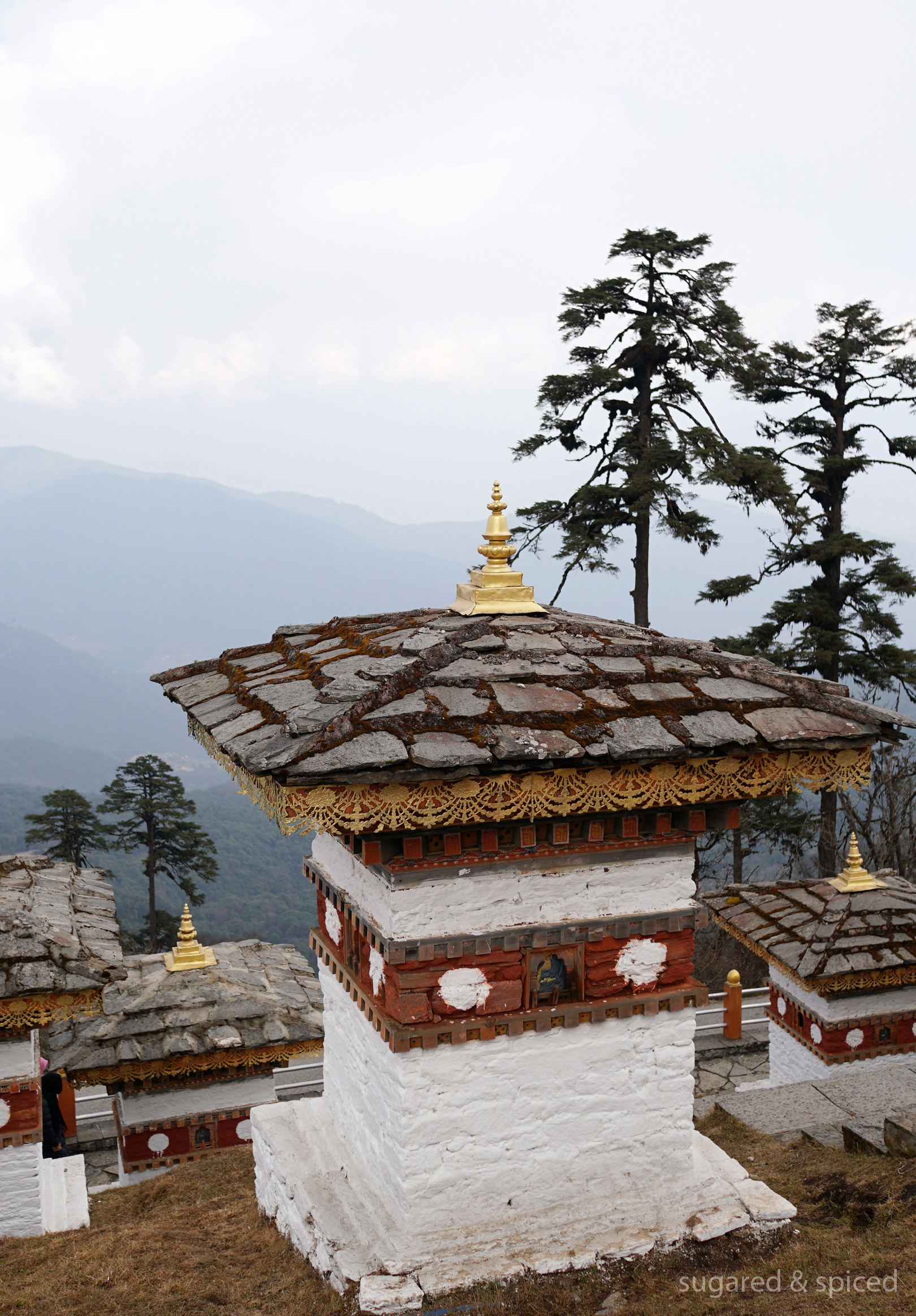
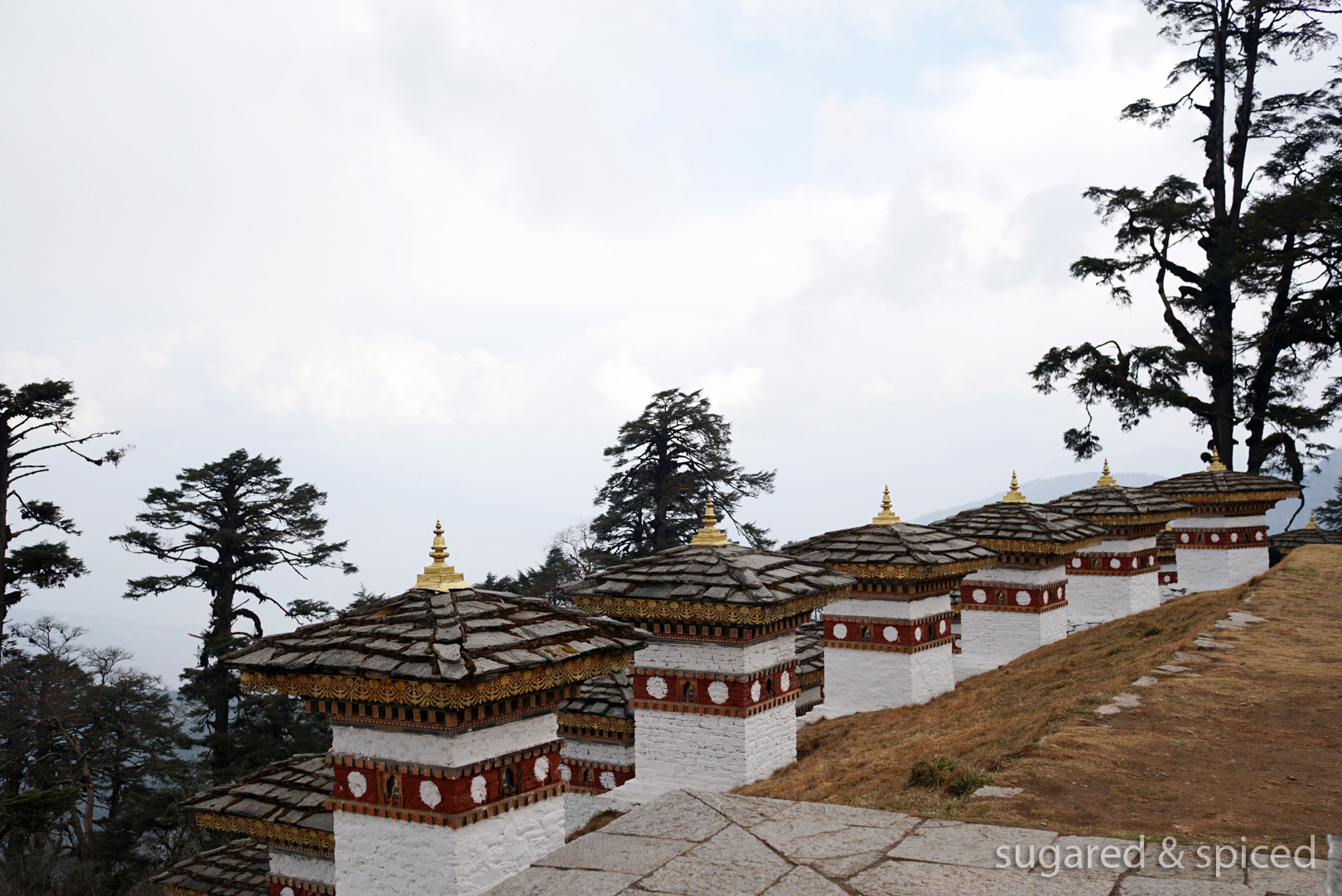
Somewhere along our route from Thimphu to Gangtey, Kinley took a side turn on to a rather steep and bumpy dirt path leading up a hill. My heart beat faster as I threw sideway glances, judging how bad it would be if we slip. But of course our seasoned driver wouldn’t put us through any danger, and once we arrived at the top, we were greeted with the most unexpected but charming lunch spot – a private temple overlooking the valley and terraced fields below.
一路無事往東開,Kinley 突然岔上一條小徑,爬上一個又陡又窄的小坡。我忍不住朝窗外瞥了兩眼,心裏評估著若車子真的掉下去會有多糟糕…不過經驗豐富的司機先生當然不會讓我們有任何危險。他穩穩地開上山坡,眼前出現了一座私家管理的小寺廟。從高處向下望,一邊是峽谷、一邊是梯田…這裡,居然是我們今日的午餐地點。
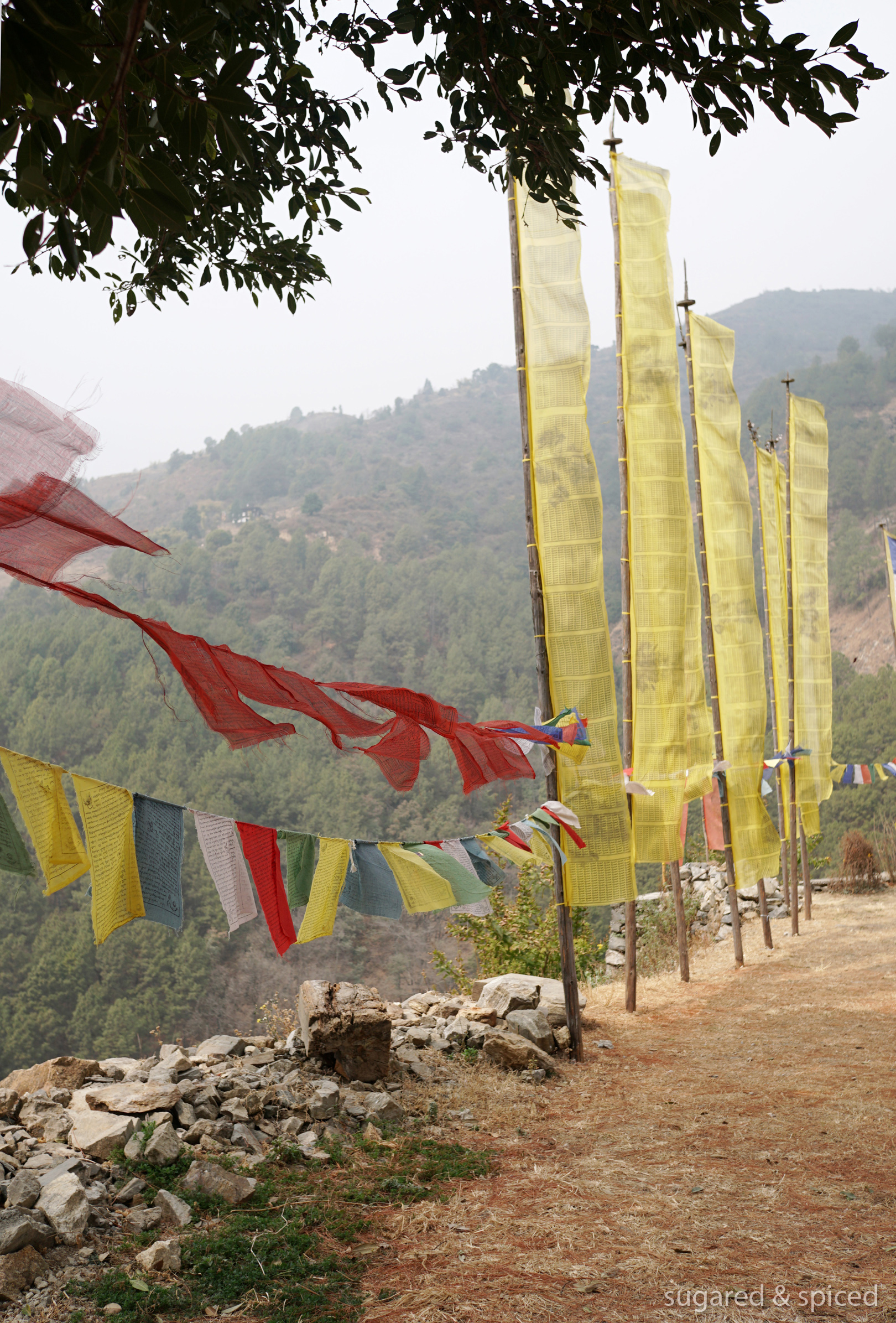
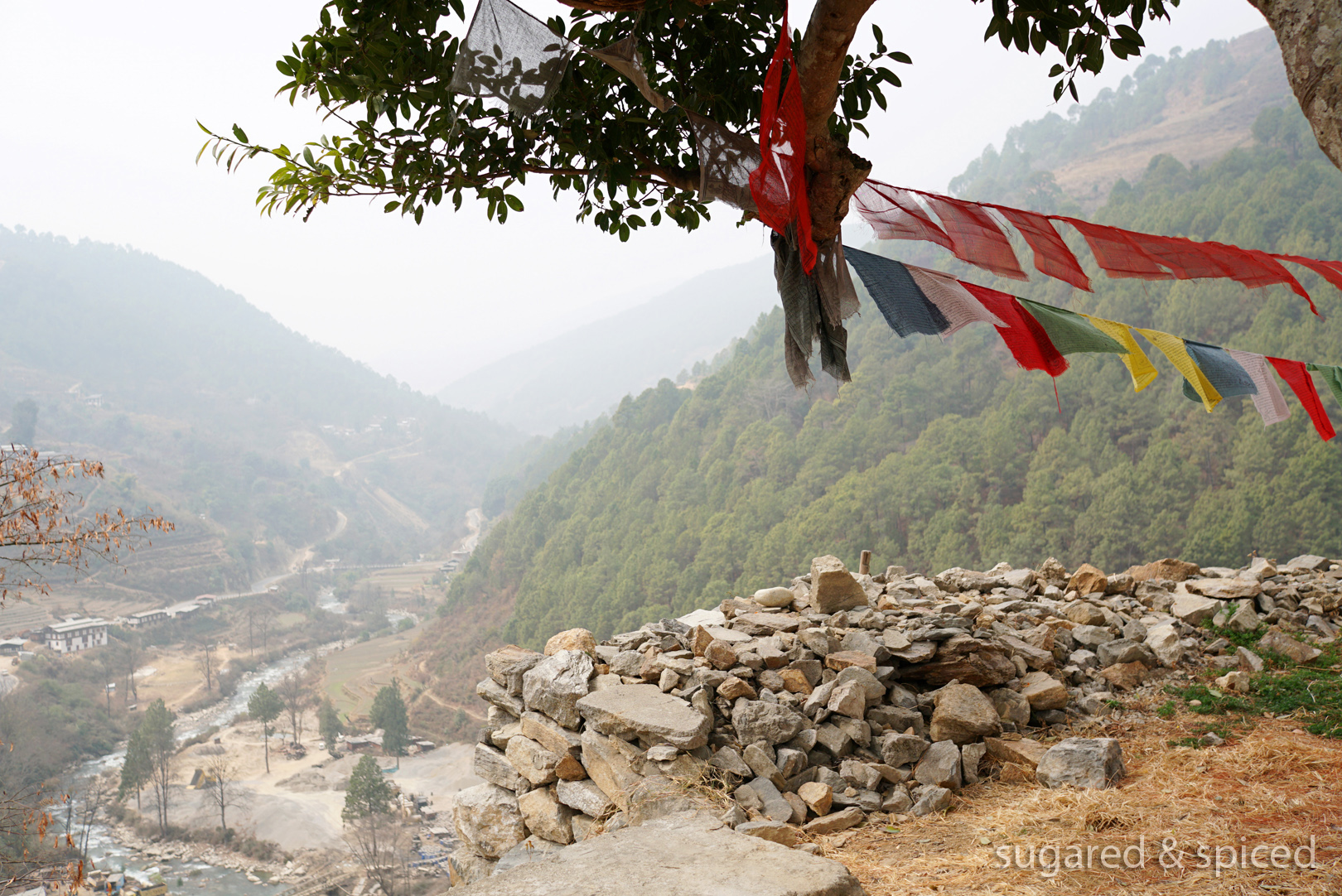
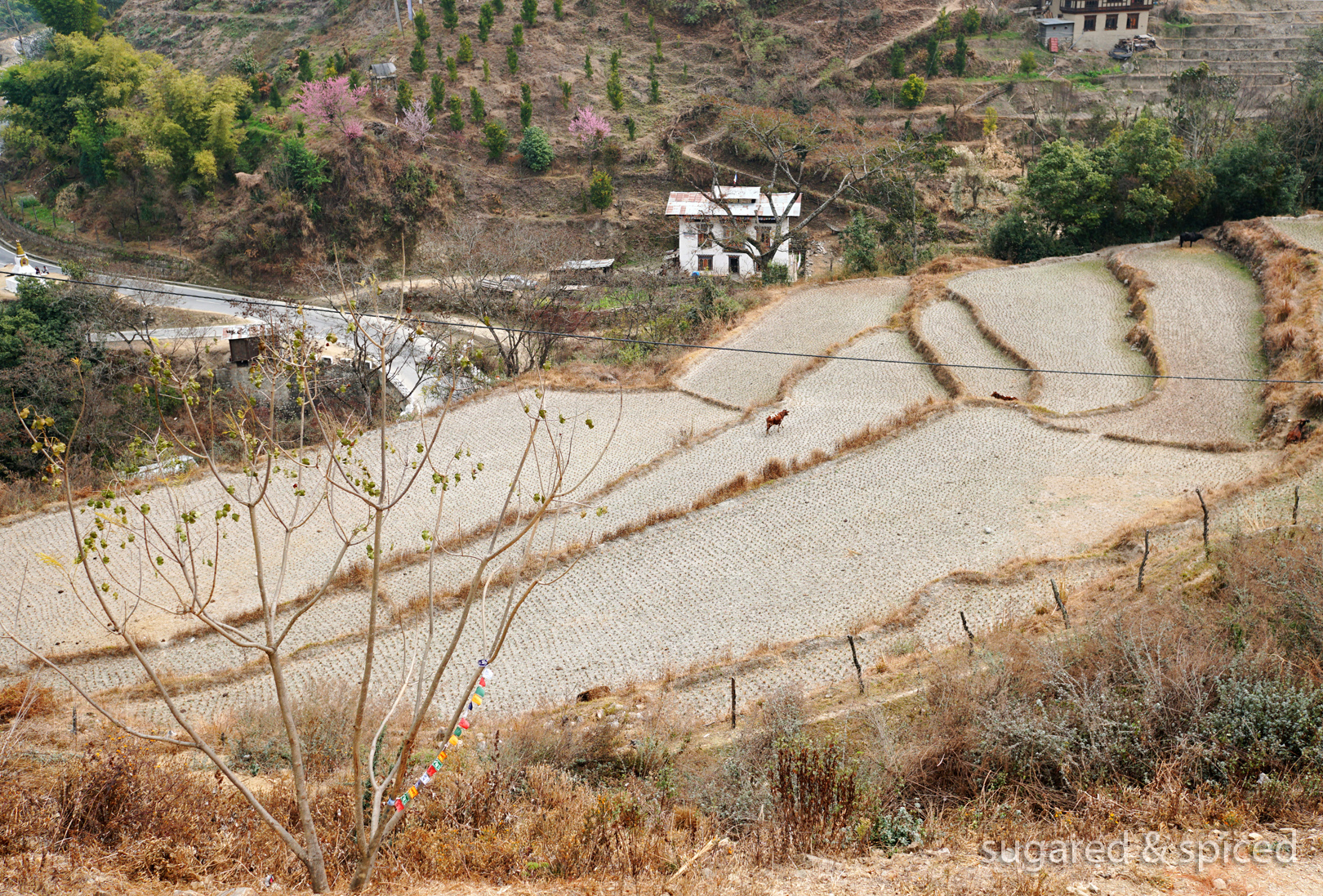
Here, Dawa and Kinley proceeded to set up a picnic for us. We delighted in the mix of Bhutanese and western dishes, prepared in advance by Amankora kitchen staff, as the February sun fell softly on our faces, and a cool breeze caressed the prayer flags.
在寺廟旁的木桌上,Dawa 和 Kinley 攤開了豐盛野餐,有西式三明治、水果沙拉等,也有不丹傳統料理。二月淡淡的陽光撒在臉上,徐來清風輕柔地撫摸著五色風馬旗…一切都美得令人難以置信。後來才發現不丹人非常喜歡野餐,經常會一家大小先到佛寺參拜,之後在田野間、草地上、樹林下、團團席地而坐,吃吃喝喝、說說笑笑。這就是不丹的生活步調吧。
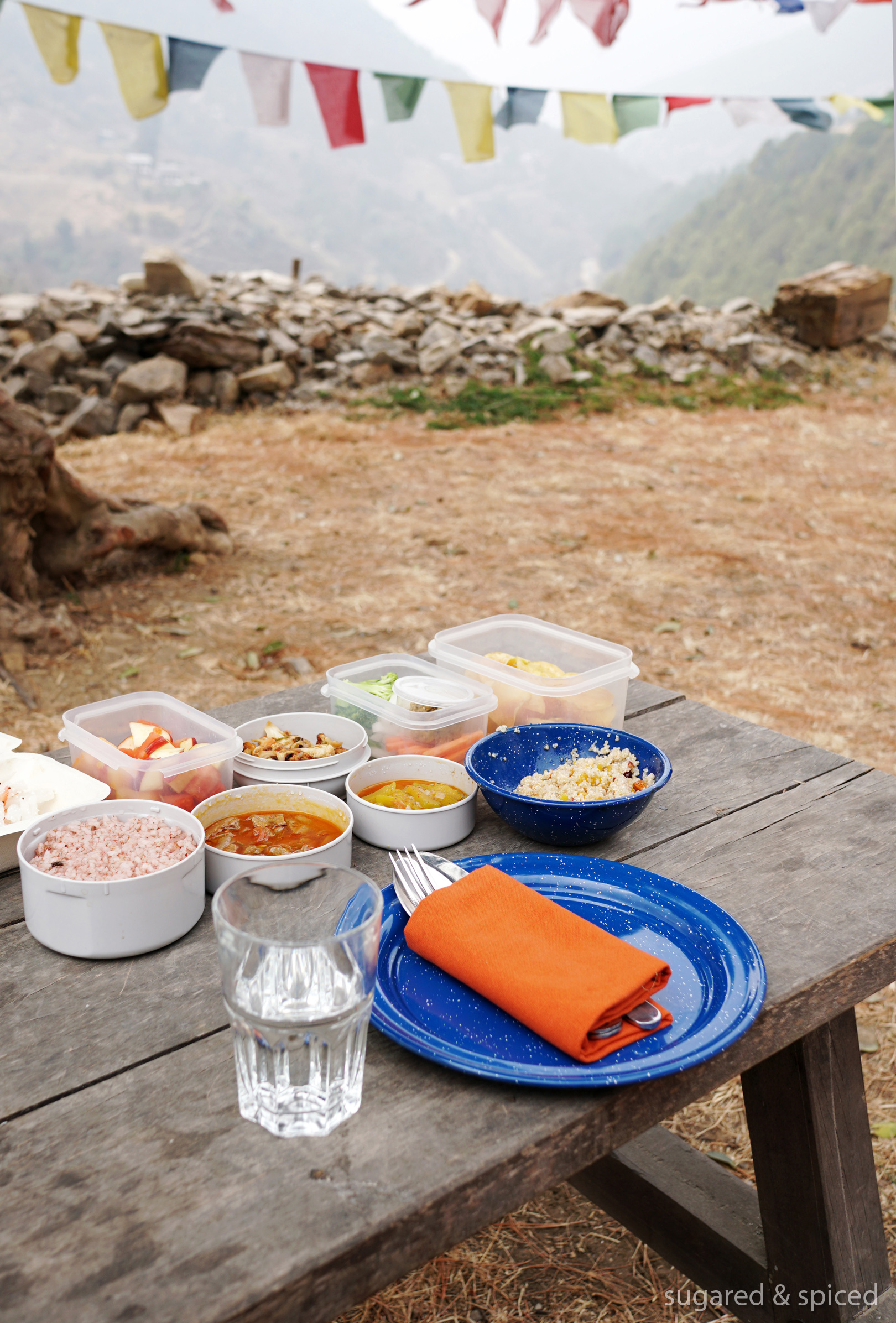
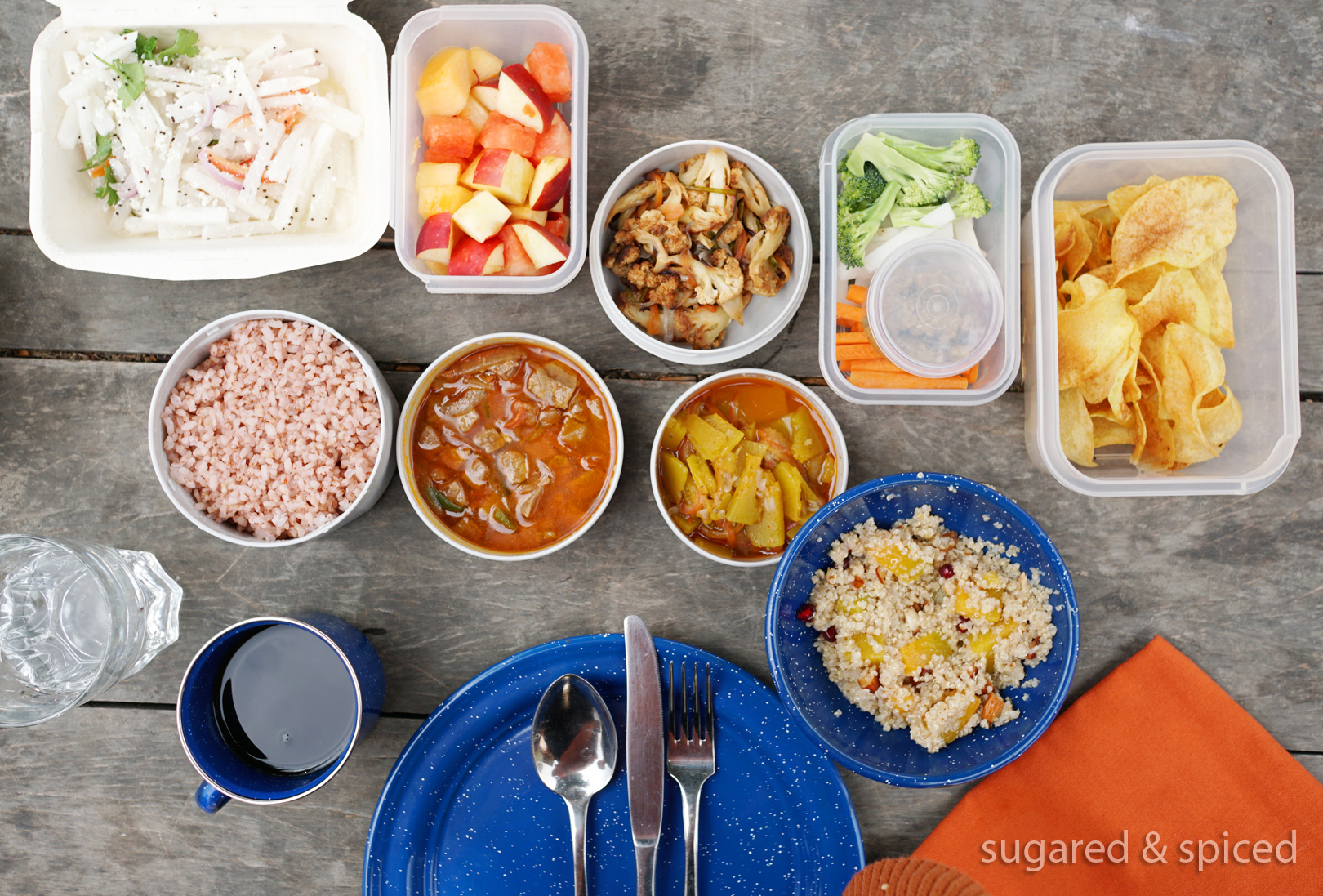
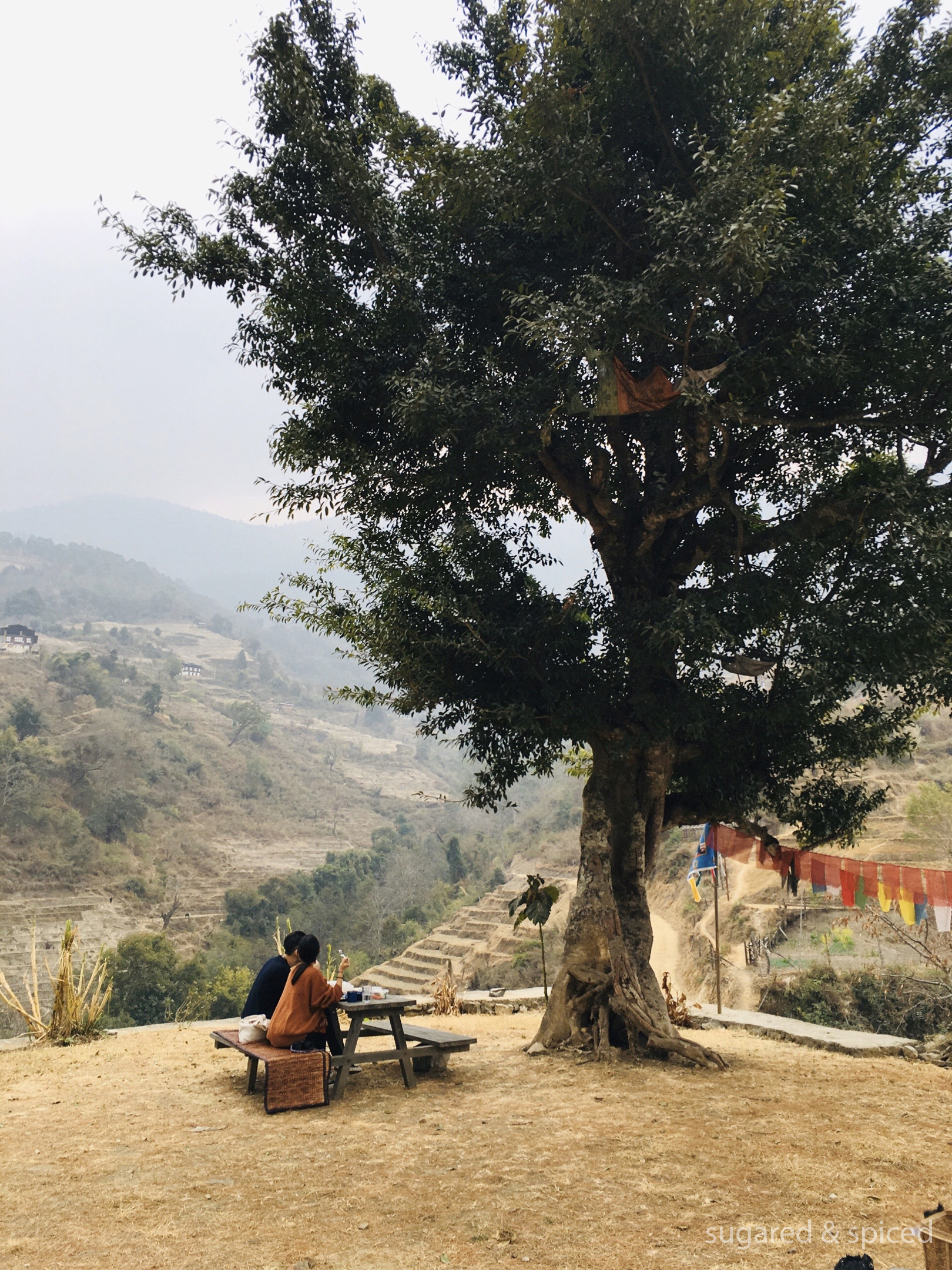
A local villager was chanting as he circled the temple clock-wise, each time placing a stone in a neat row to keep his count.
一旁,有位村民正虔誠地圍著寺廟繞行,看到我還特意停下來鞠躬微笑,笑容真誠而燦爛。
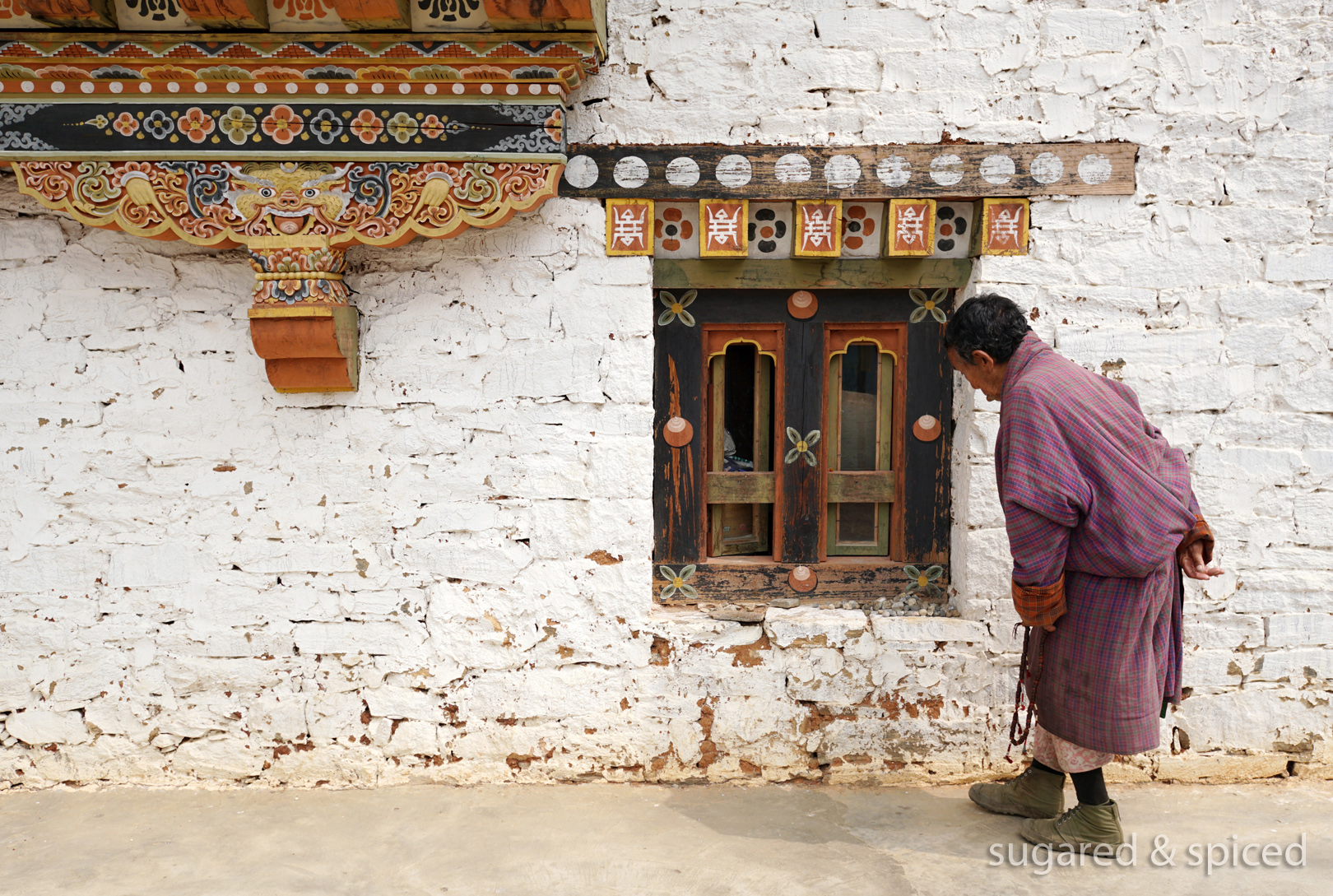
The goal was to circle the temple 108 times, an auspicious number in Buddhism.
每繞一圈,就擺一顆小石子做紀錄(總共要繞108圈)。
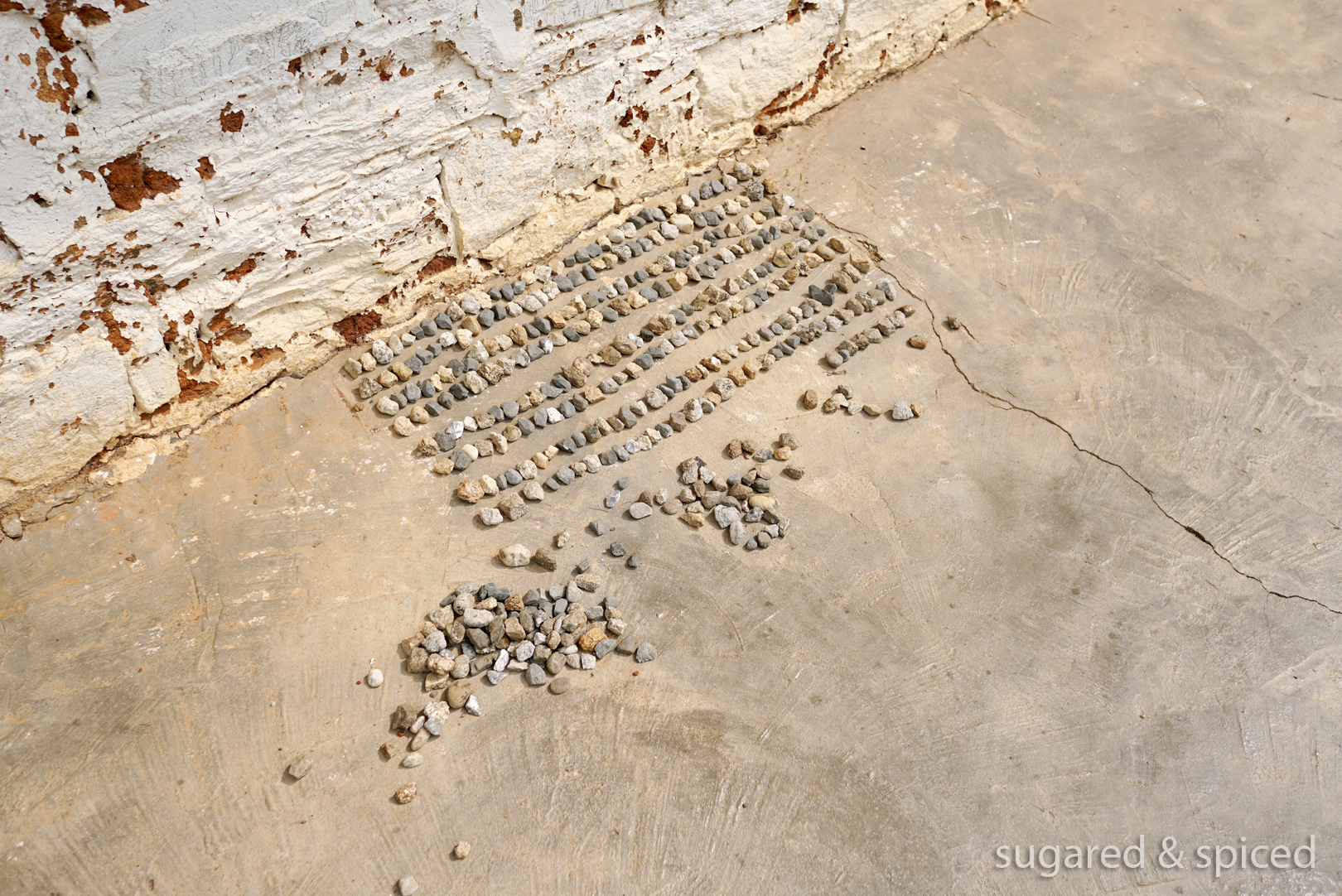
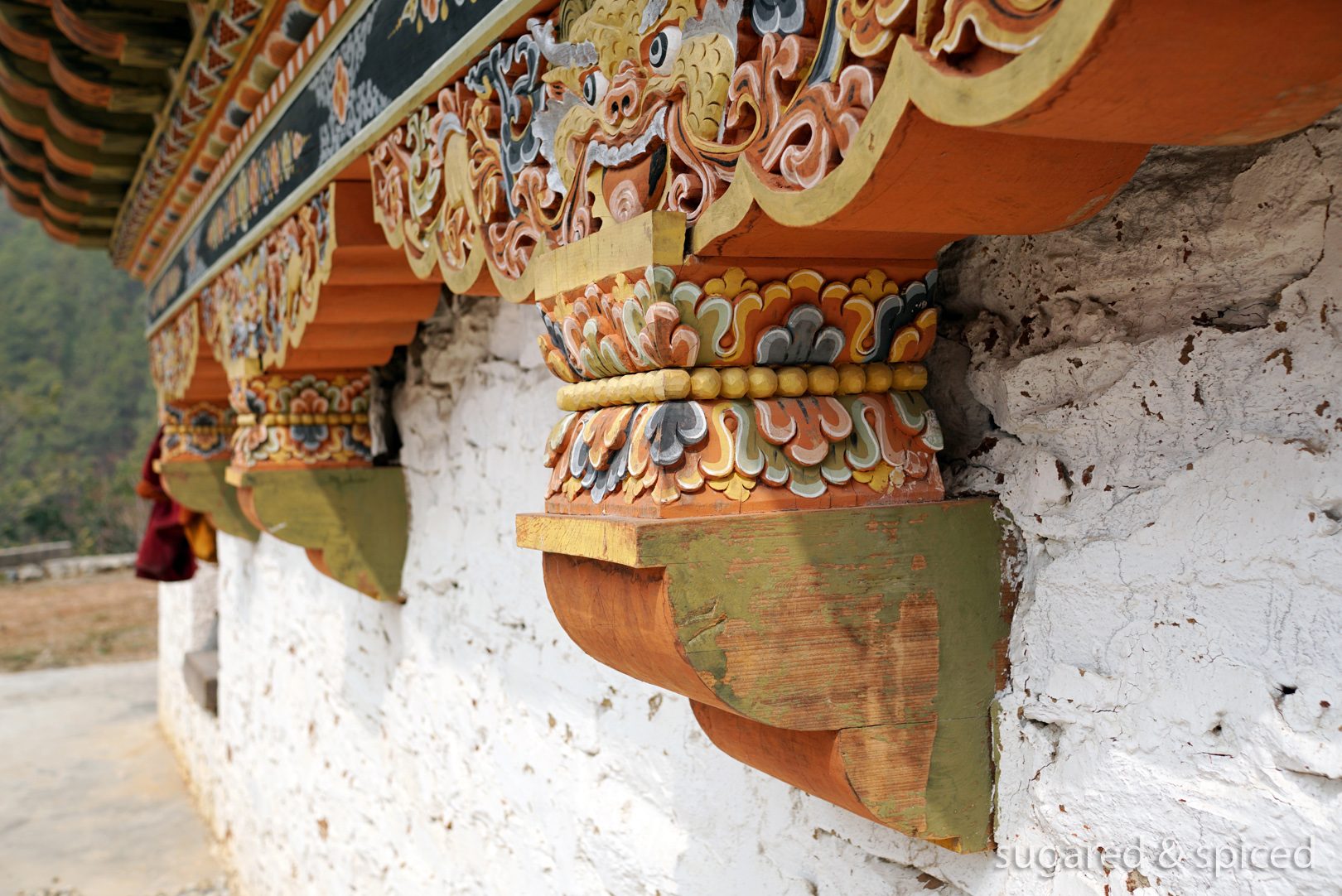
Hit by a food coma, I drifted in and out of sleep for the rest of our drive. On one occasion of opening my eyes, I saw nothing but a field of green, and, high up above, far beyond reach, monasteries and temples dotting the cliffs and mountainsides like resting birds. The next time I opened my eyes, it was snowing heavily, and through the white flakes I could make out silhouettes of yaks, and not too far away, tents of the nomadic yak-herders.
And then we arrived at Amankora Gangtey. After the long and sometimes bumpy ride, it was so lovely to step on a thick layer of green pine needles. Nice and soft, like walking on marshmallows.
吃飽飯忍不住犯睏,以至於在接下來的車程中,我一直在半睡半醒的狀態之間游移。某次睜開雙眼,觸目所及皆是蓊鬱綠意,往上一瞥,能看見那些落在遠方山頂,像休憩中的鳥兒似的美麗寺廟。下一次睜眼,車外居然下起了雪,依稀在飄雪之中看見幾頭氂牛,和在不遠處扎營的游牧民族。
經過了大半天的奔波,終於抵達 Amankora Gangtey。話說回來,安縵在世界各地的選址大多隱身在人跡罕至的地方,免不了一段跋山涉水才能抵達。我們這點路程,也不稀奇了。

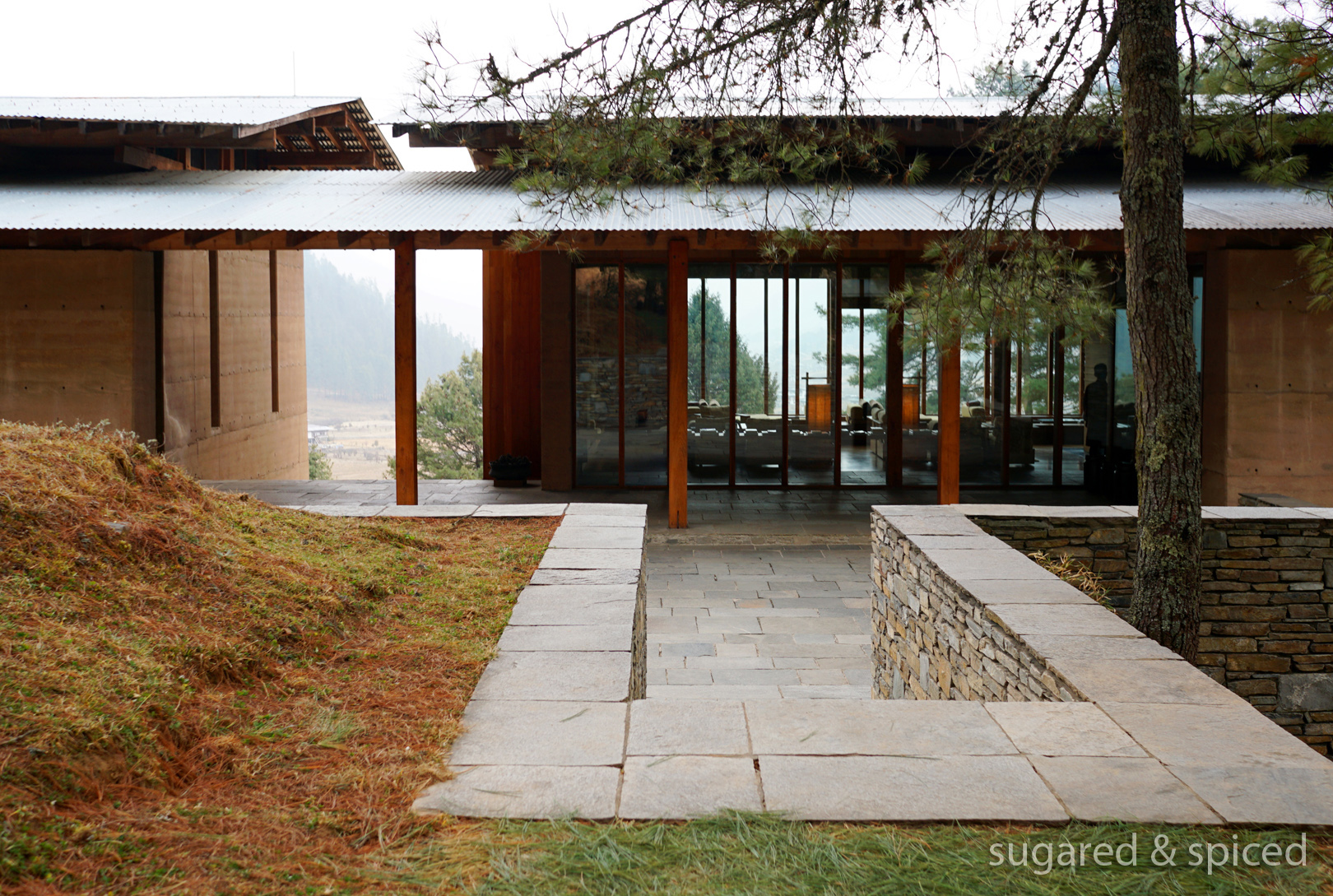
Hot honey ginger tea was promptly served, both as a cure for the cold and a relief for high altitude sickness, for we are now at an elevation of close to 3000m. With the thinner air, I felt a shortness of breath even after climbing just a few steps of stairs, but thankfully no headaches.
通往 lodge 的路鋪滿綠色松針,踩起來像棉花糖般軟綿綿。服務人員為我們倒上暖暖的蜂蜜薑茶,不但能禦寒,聽說也可以稍微緩解高山症。這裡海拔3000米,難怪稍稍爬坡就感覺喘,不過倒沒有頭痛或其他症狀。
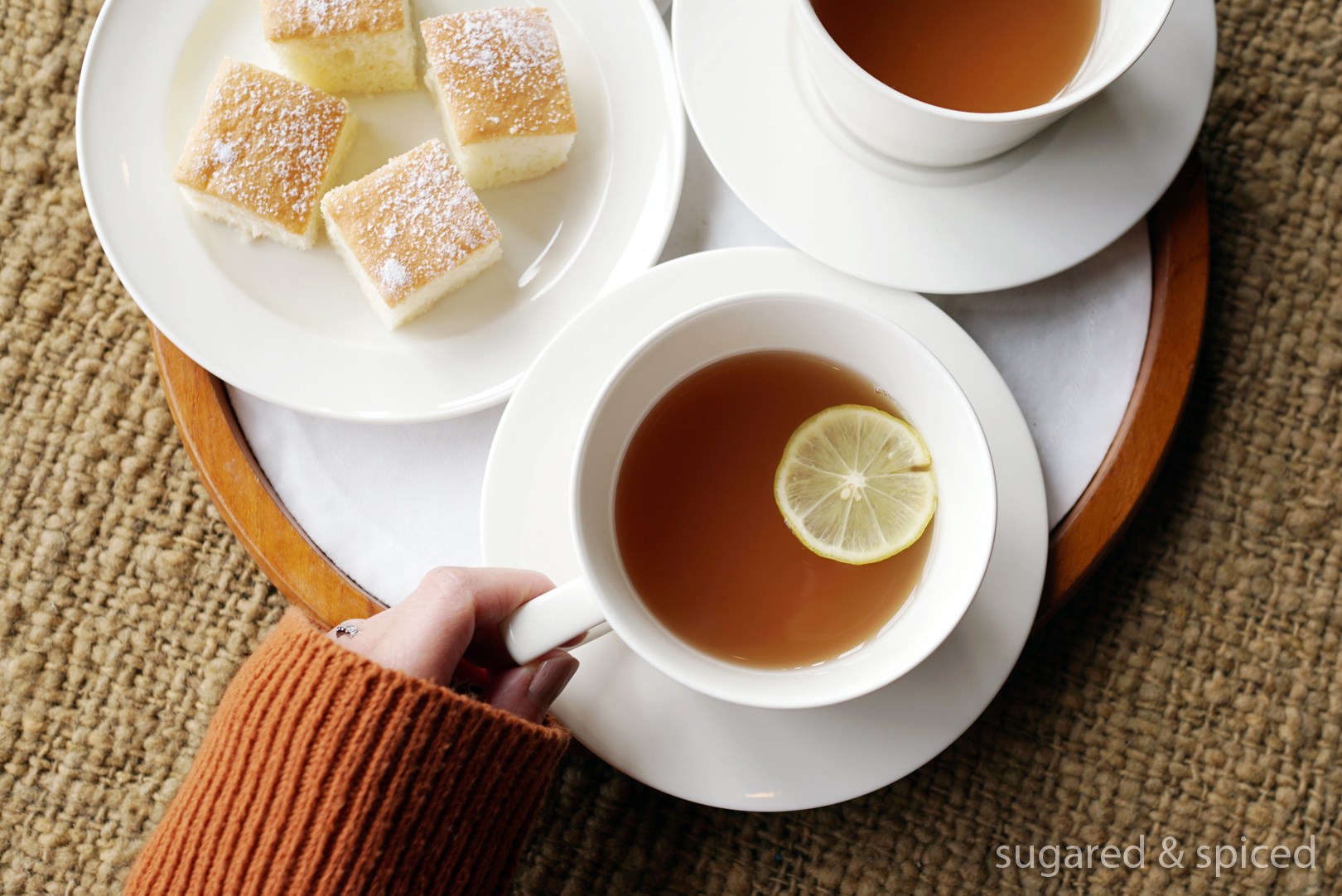
This remote lodge of only 8 suites is set in Phobjikha Valley, which is part of the Black Mountains National Park wildlife reserve, and home each winter to a flock of 300 endangered black-neck cranes. The view from the window was quite something. A sprawling valley floor, the 16th-century Gangtey Goemba shimmering on a hill, and above it, clouds. It was a scene of stunning beauty. It felt like the right place to be.
As February is low season in Bhutan, and a significant number of travelers cancelled due to the virus situation, we became the only guests at the lodge that day. What a rare luxury, to have this all to ourselves! I reveled in the solitude and spirituality of our surroundings.
Gangtey lodge 只有八個房間,是 Amankora 所有地點里最小巧精緻的一間。位居半山腰的酒店是遠眺山谷絕佳的地點,透過窗戶看出去,農村正裊裊升起炊煙、陽光映著對面山頂上的崗提寺,飄渺的景色就像電影里會出現的畫面。
我們到訪時是二月淡季,再加上不少人因疫情取消行程,一路上都鮮少碰到其他游客。這一晚,我們居然是酒店唯一一組客人,難得能獨享這舒適空間和窗外美景,實在幸運。
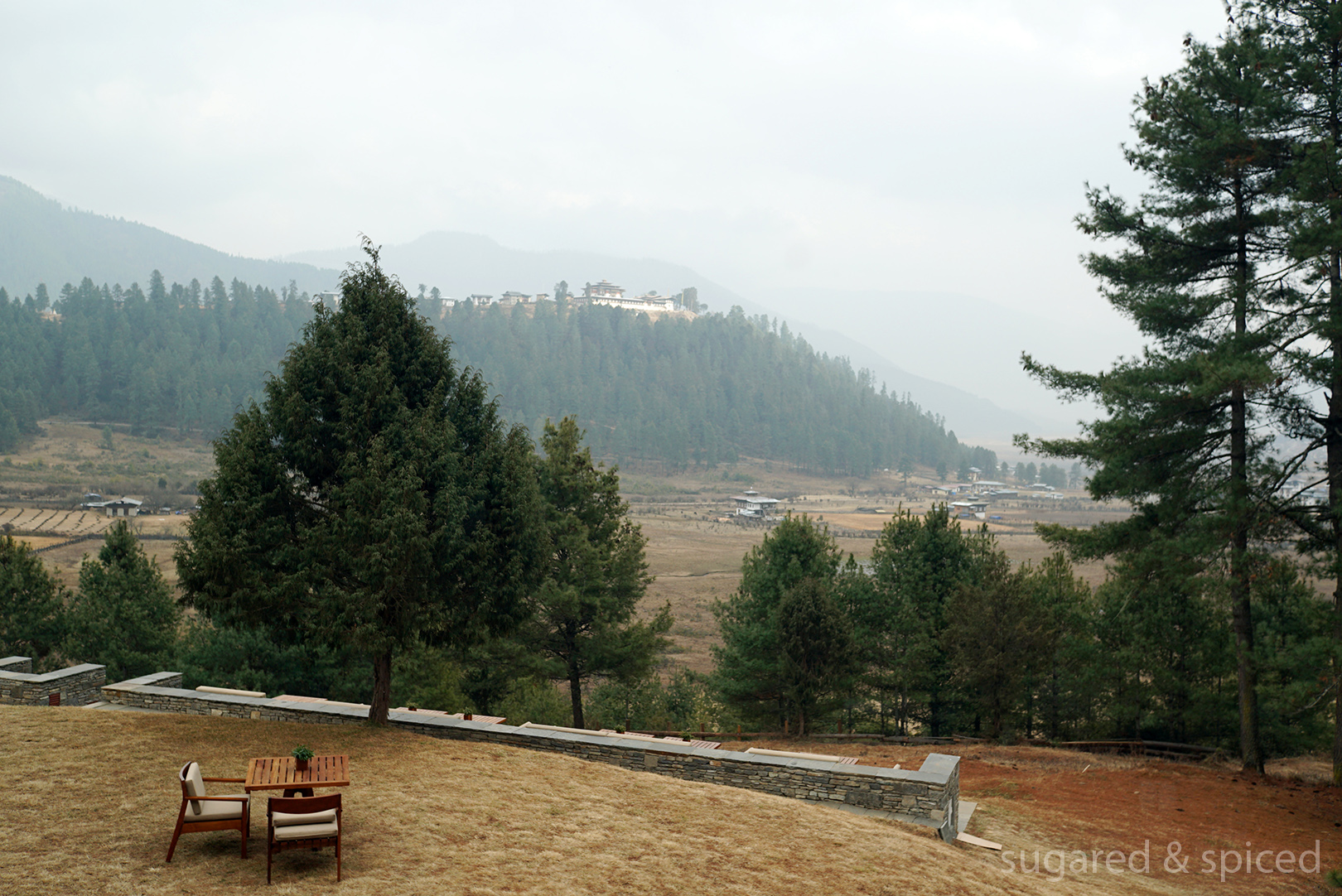
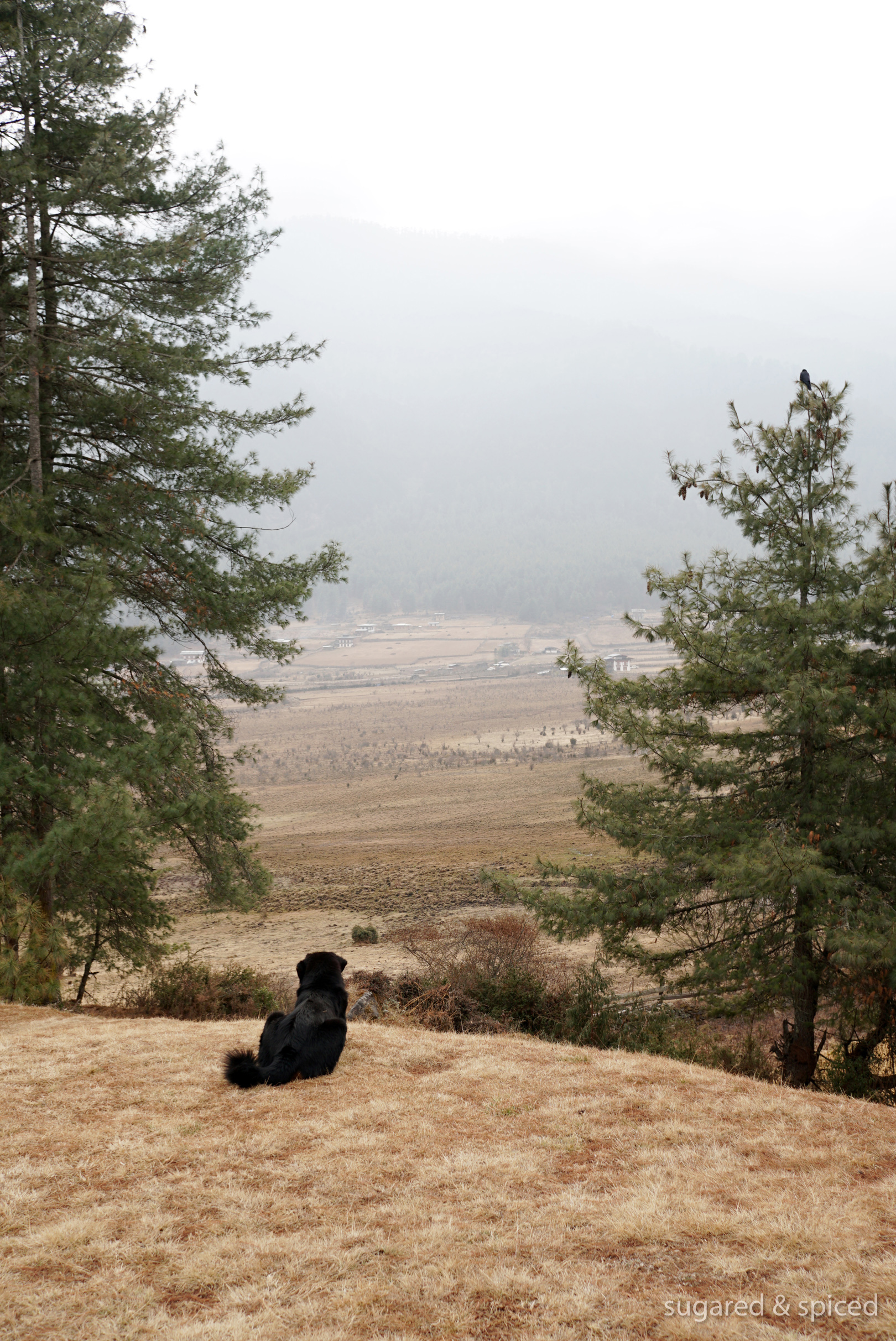
I don’t need to show you much from the suite, because the interiors are identical to those of Amankora Thimphu. The designers have made sure that, while the surroundings change as guests travel, there is continuity between their lodgings throughout the journey.
套房照片就不多放了,因為 Gangtey lodge 的室內陳設和 Thimphu lodge 是一模一樣的,用意是讓隔幾天就要換居處的住客仍能感覺熟悉,整趟旅程也更有連貫性。和上間套房一樣,我最喜歡的角落是這扇窗。沒有活動安排時,坐在長榻上,蓋著厚厚的毛毯,一面啜飲著蜂蜜薑茶,一面看著書、或靜望著窗外景色…
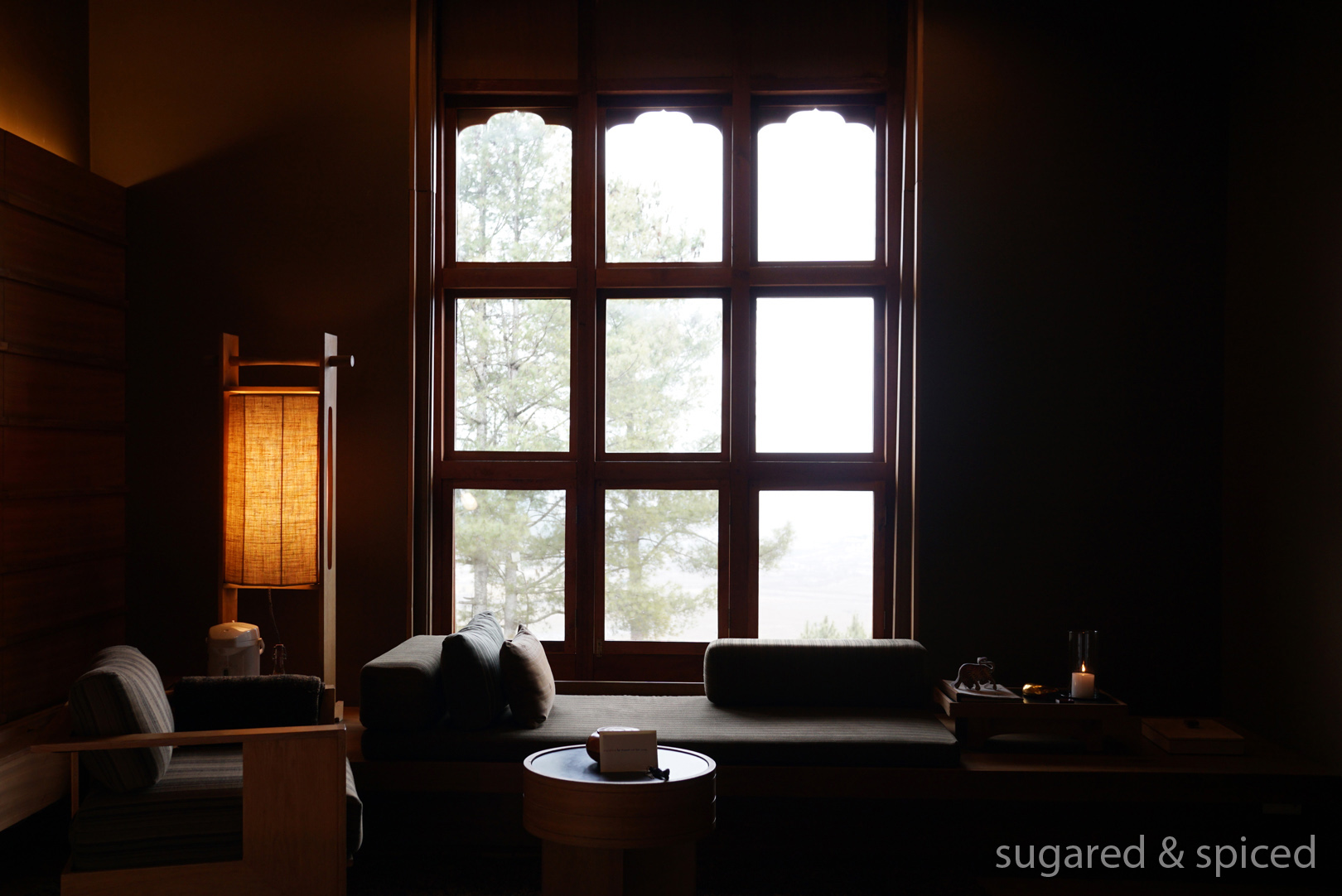
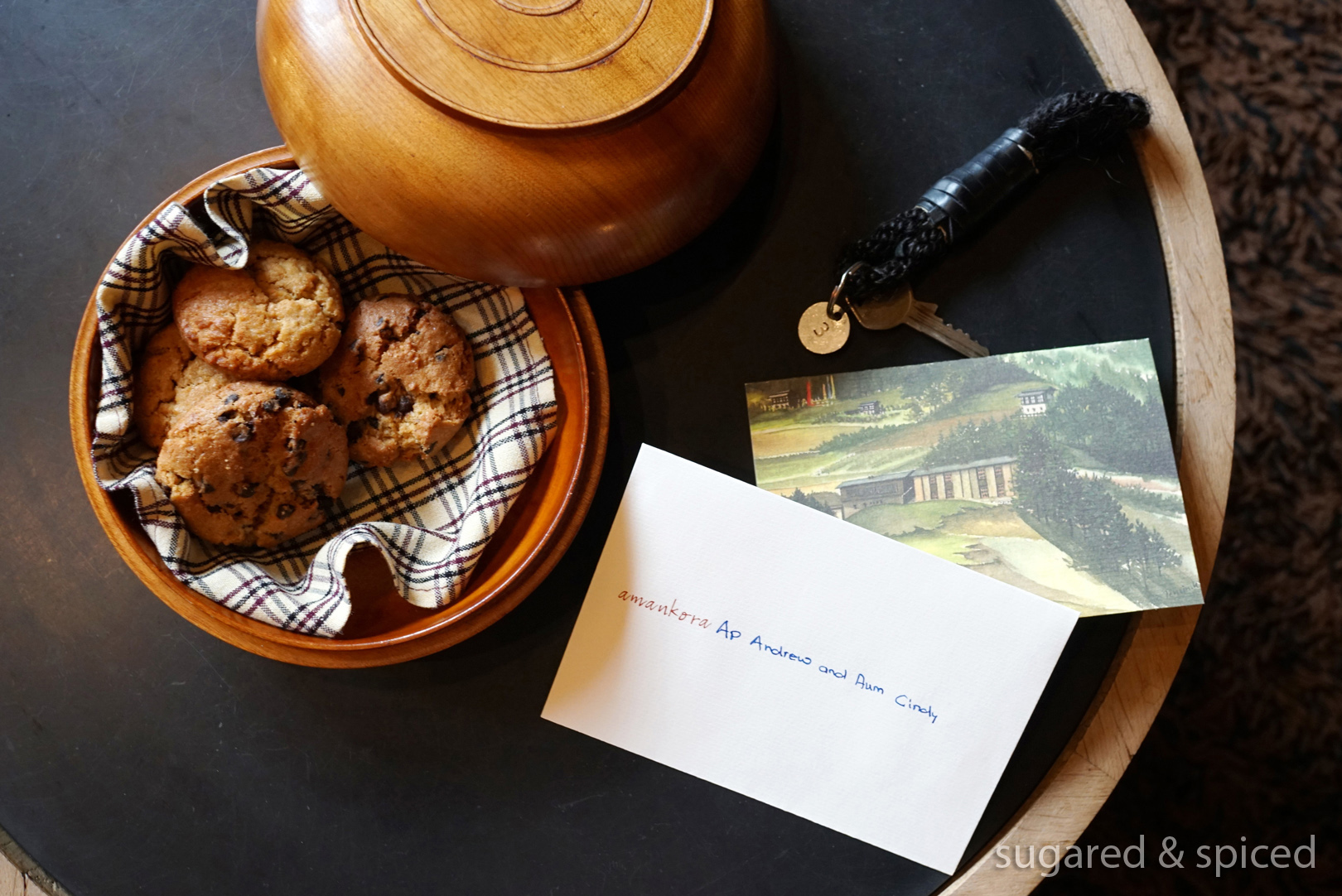
At such a high elevation, the temperature at Gangtey was even lower than that of Thimphu. A staff informed us of the possibility of snow tonight, and offered to light up our in-room wood-burning oven.
Gangtey 氣溫比 Thimphu 要低,工作人員告訴我們今晚可能會下雪,並為我們點起房裏的暖爐。
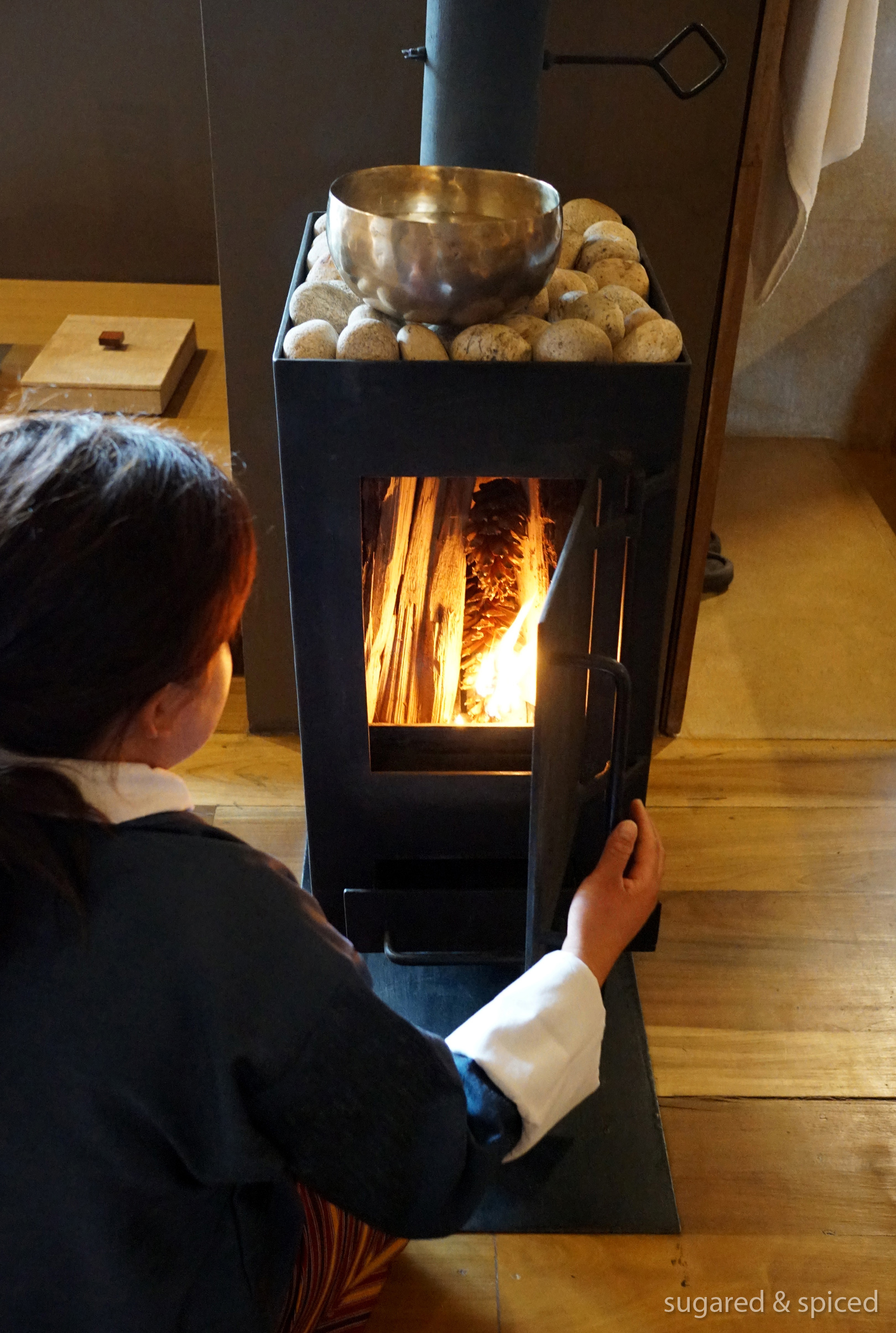
It was also incredibly heart-warming to see that they had carried over our request to have a hot water kettle at the previous suite to the current one. In fact, in every subsequent suite we checked into, there was a water kettle at our disposal.
還有一件非常暖心的事情。雖然要喝熱茶或咖啡可以隨時按服務鈴,但我有常喝熱水的習慣,所以在上一間 lodge 還是請服務人員放了一台熱水壺在房間裡。沒想到他們竟然記得這個偏好,後來的每一個房間裡,都提前為我們擺好熱水壺。
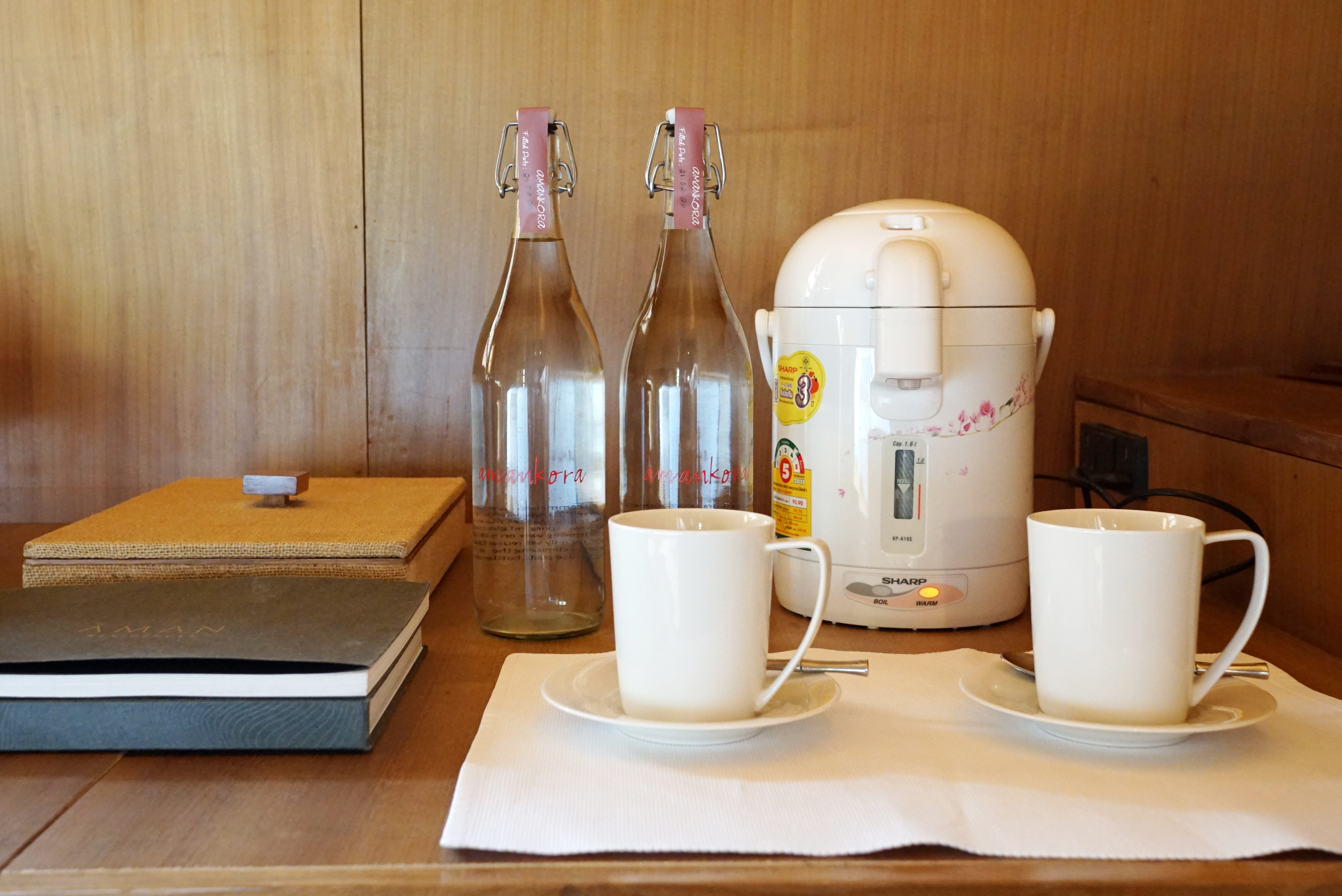
On the table, there was a beautifully drawn map depicting nearby villages. Warmed up and refreshed, we were ready to explore.
在桌上發現了散步地圖,決定帶上它去探險。
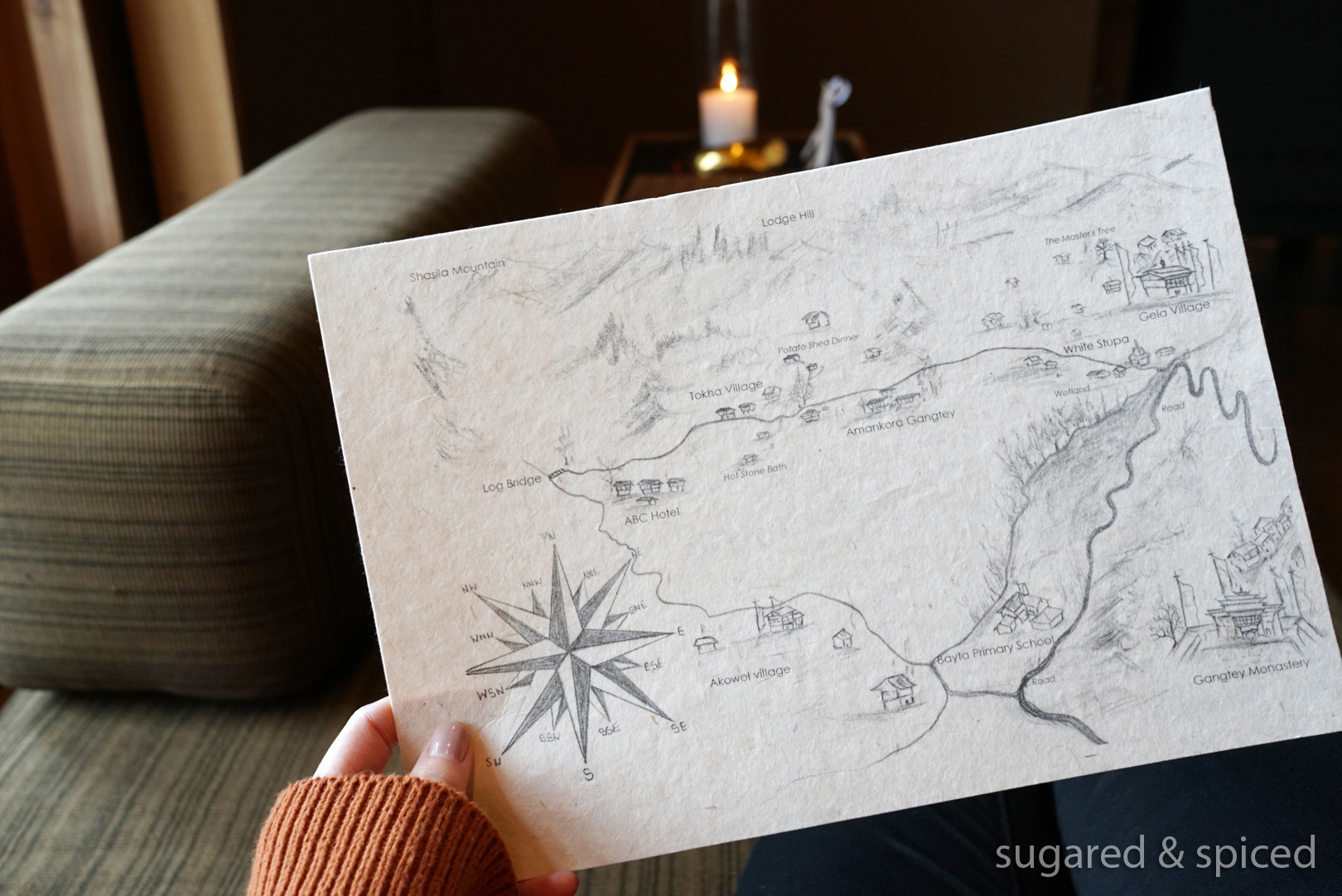
For the next hour and a half, we followed the village loop, crossing farmhouses, potato fields, a local community school, passing children, cows, horses. It was a lot more quiet than I had anticipated, a lovely change from the city noises I’m accustomed to.
我們沿著村莊的步道,走過了農家、馬鈴薯田、學校,看見了可愛的孩子們,還有溫順的牛和馬。這裡一切都比我想象中還要安靜許多,對於習慣城市噪音的我們來說,實在是夢寐以求的轉換。
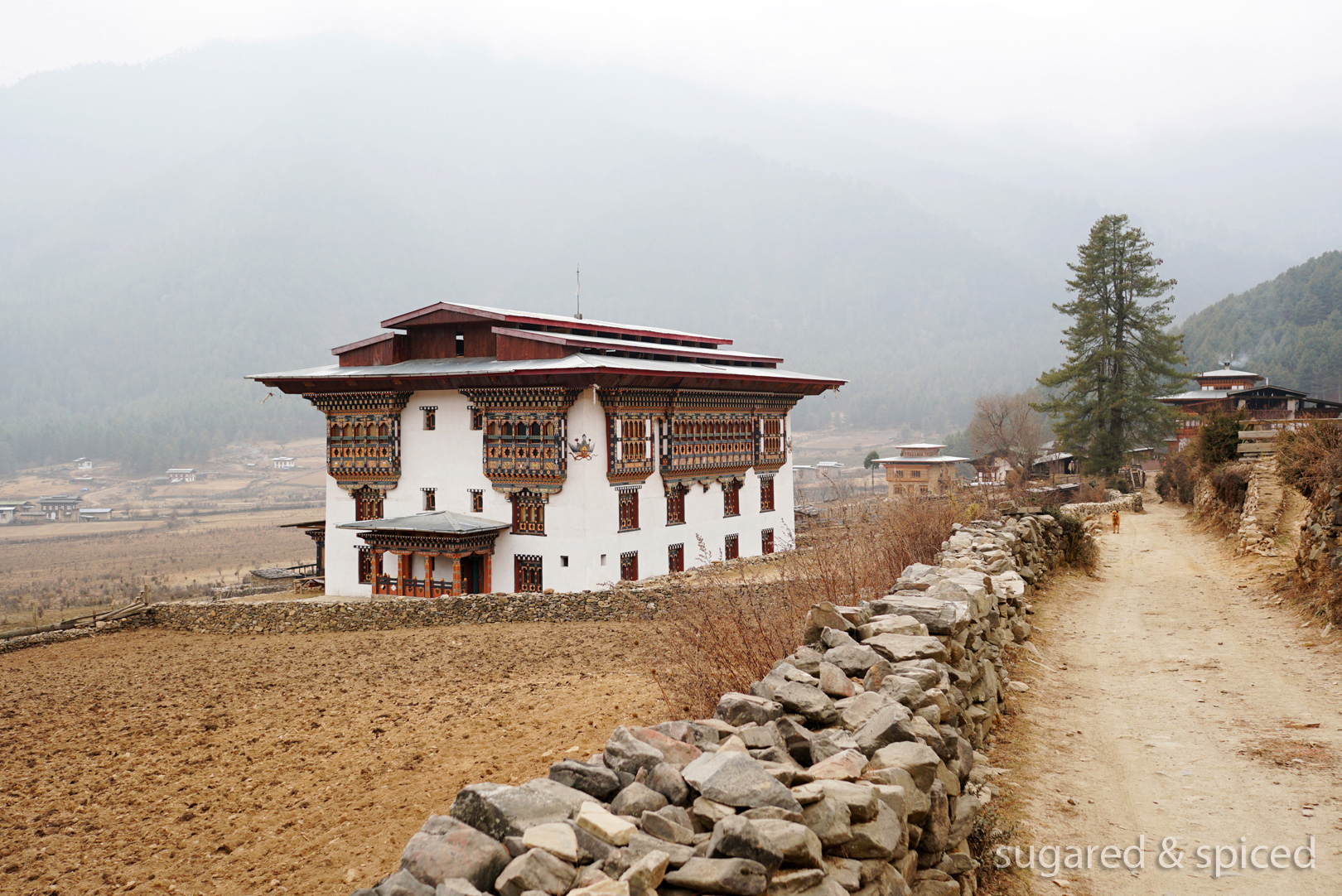
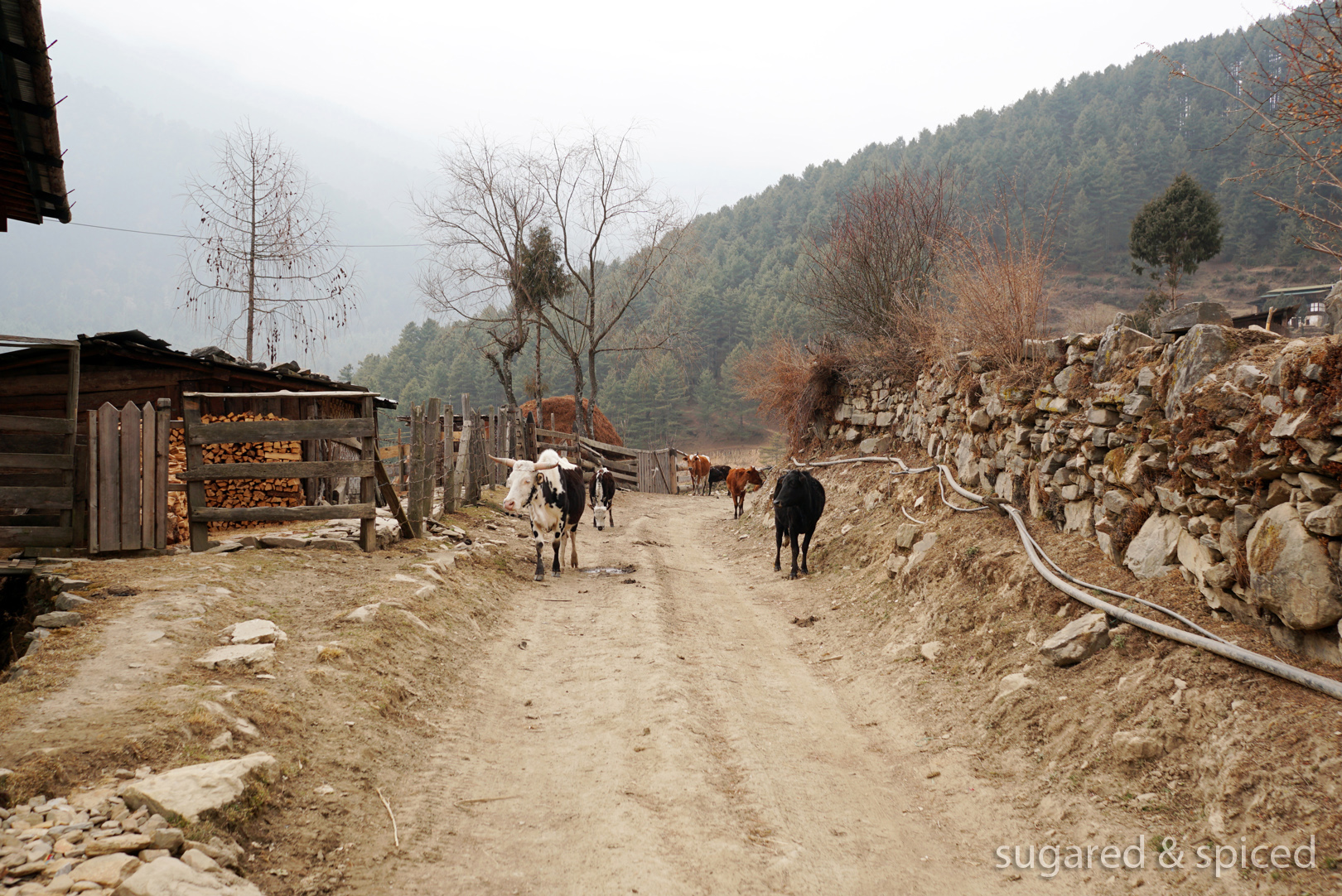
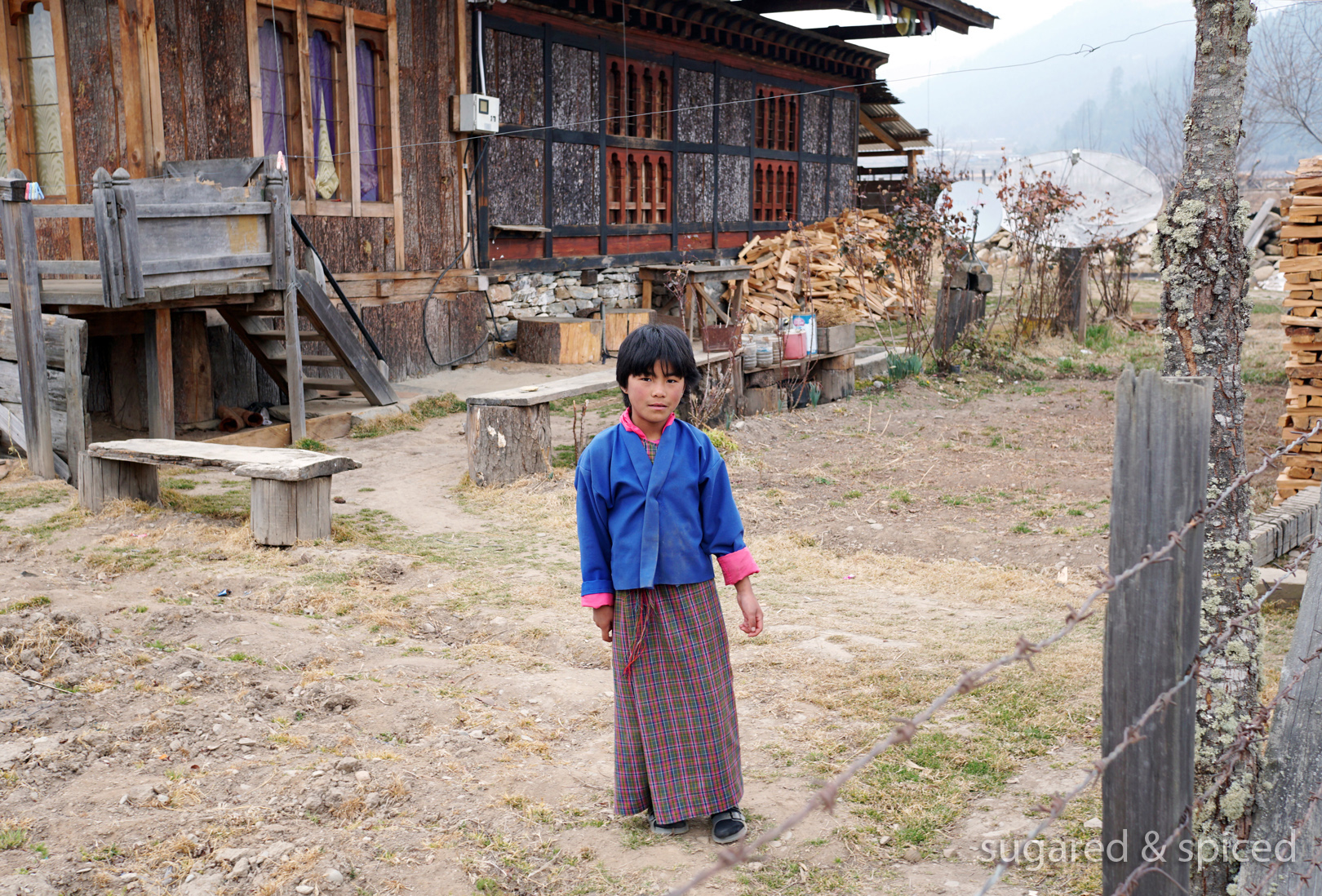
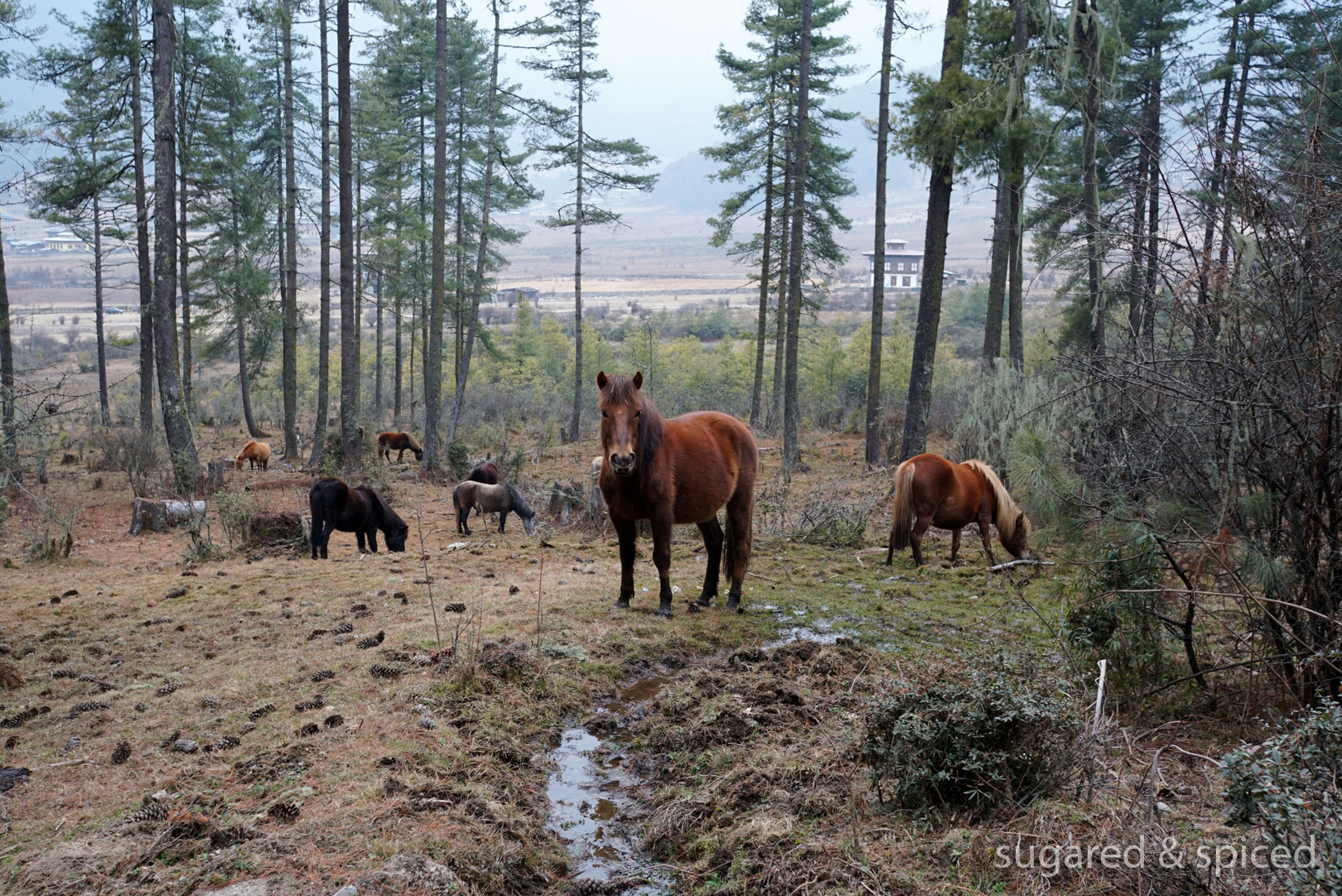
We came across a great many prayer flags, a ubiquitous existence in Bhutan. It is believed that with each flutter, a flag releases the printed mantra into the air. This is why prayer flags are often positioned to catch the wind – on the forested slopes of mountains, across bridges, nearby rivers and streams…
Prayer flags can be colorful, or in this case, white. Known as mani, these white prayer flags are dedicated to the dead and have one single mantra printed on them – “Om Mani Padme Hum”, a chant related to Chenrezig, the God of Compassion. It is almost impossible to give one exact meaning for this mantra since it has been interpreted in many ways, but it is believed to contain the truth of the nature of suffering and how to remove its root cause, and is the most commonly recited mantra in Tibetan Buddhism.
在不丹隨處可見五色風馬旗,大部分矗立在有風之處,如山頂、樹頭、河邊等。佛教徒相信,當旗子隨風飄揚時,書寫在上方的咒幔隨風飄送四面八方,就像不停的誦經一般。
下圖裡面這種長條的白旗名為 “mani”,是為亡者所立。上面印的 “唵嘛呢叭咪吽” 即六字大明咒,是佛教里最常見的真言。字面的意思非常難翻譯,有一派解釋為 “妙哉蓮花生”,也有一派說是 “向持有珍寶蓮花的聖者敬禮祈請,摧破煩惱。” 不過依照佛教傳統說法,每一個咒字都蘊含很深的含義,並不只局限於字面意義,只要念誦、歌詠或書寫、就可以得到相應之功德。
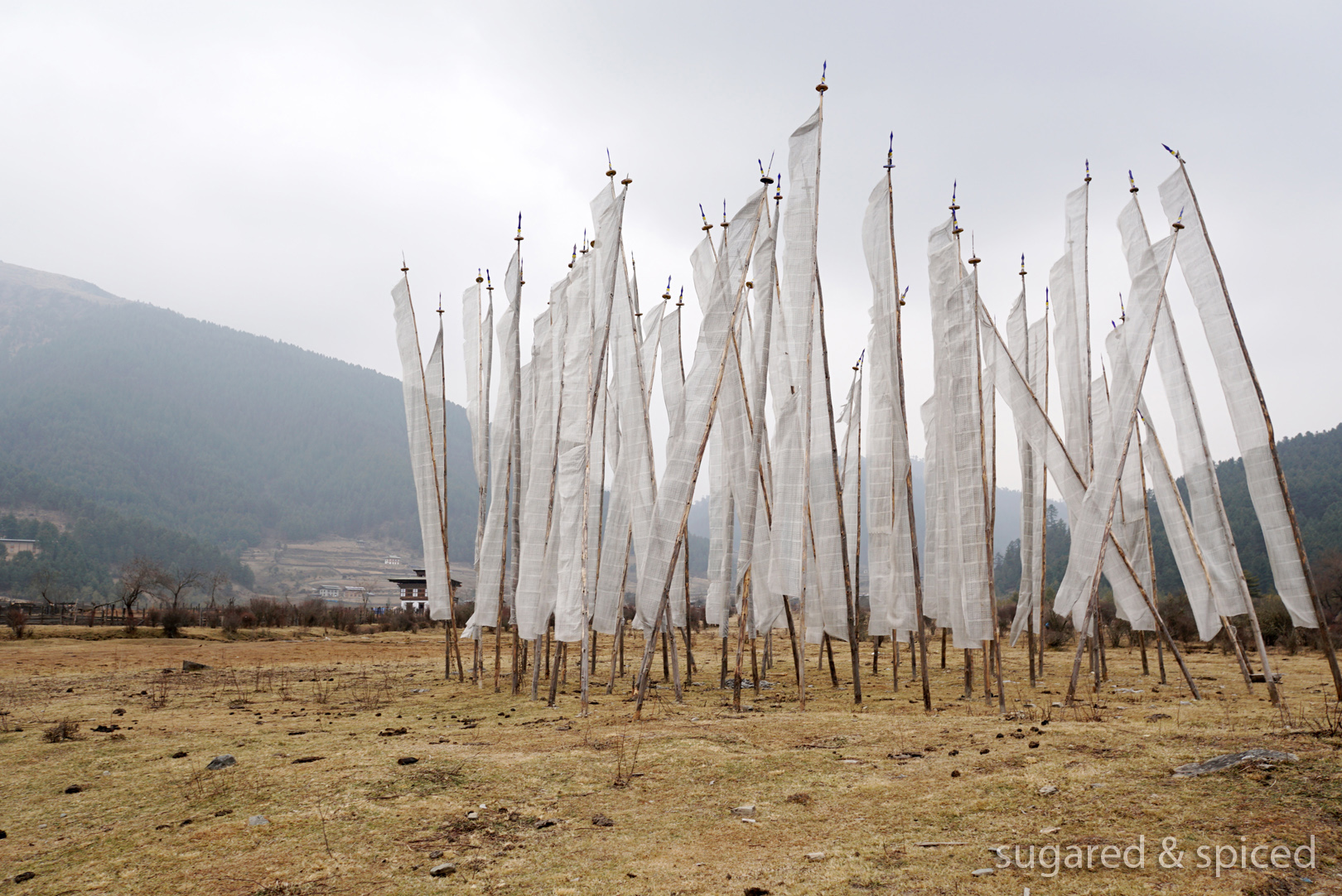
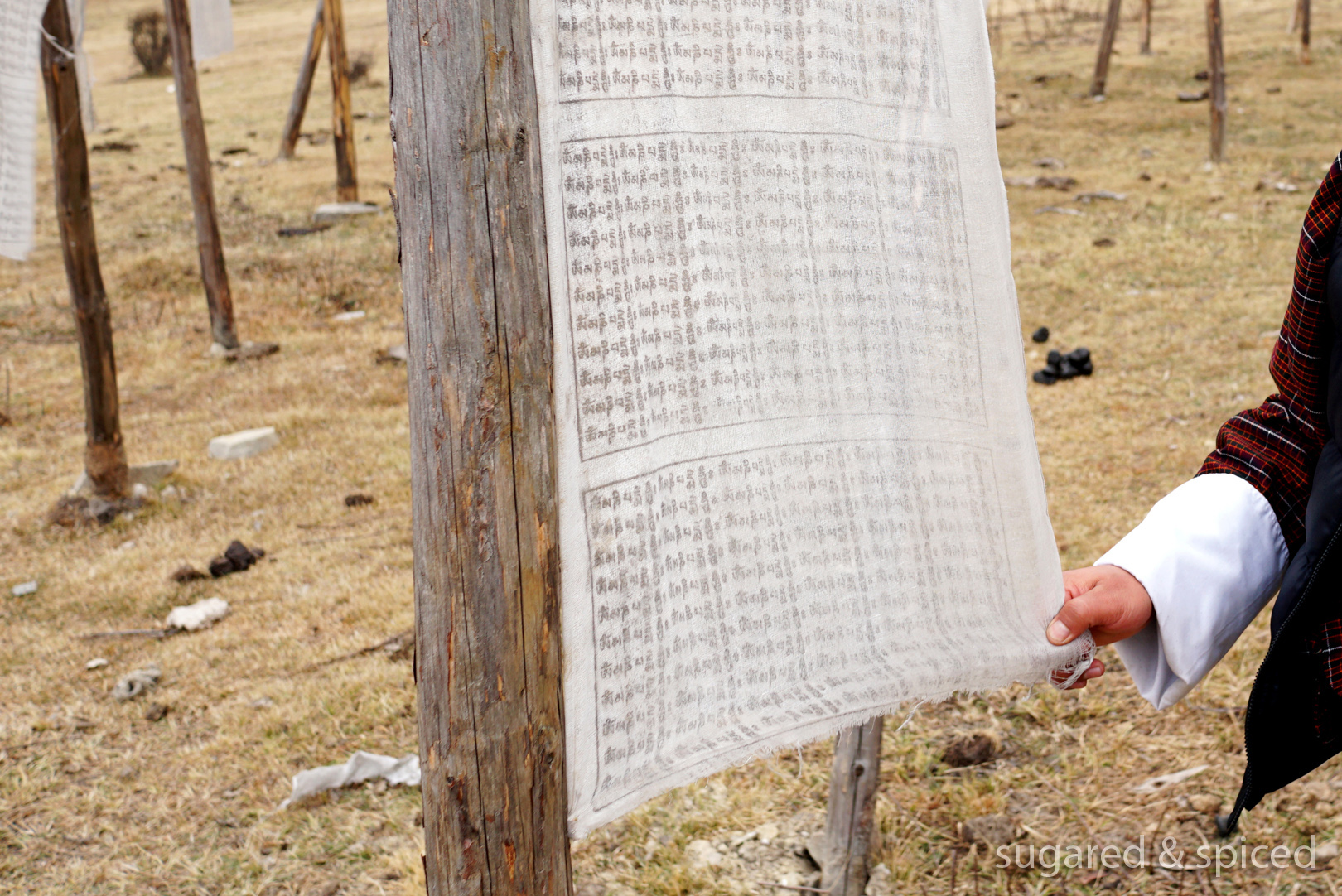
It was getting dark by the time we got back to the lodge. The building was elegantly lit up, a warm glow emanating from its large window panes.
回到住所時天色漸暗,各處點起了溫暖的燈火。
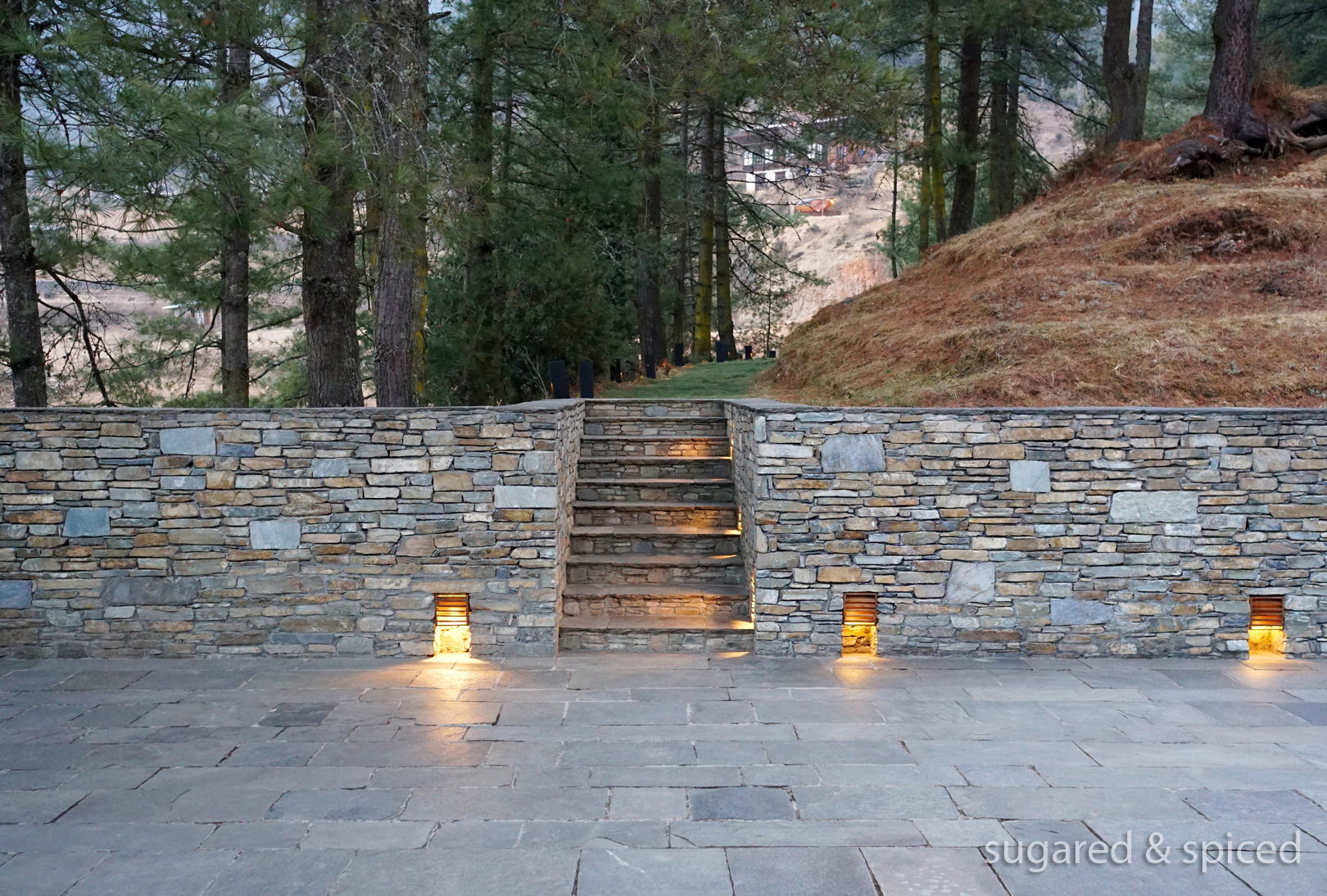
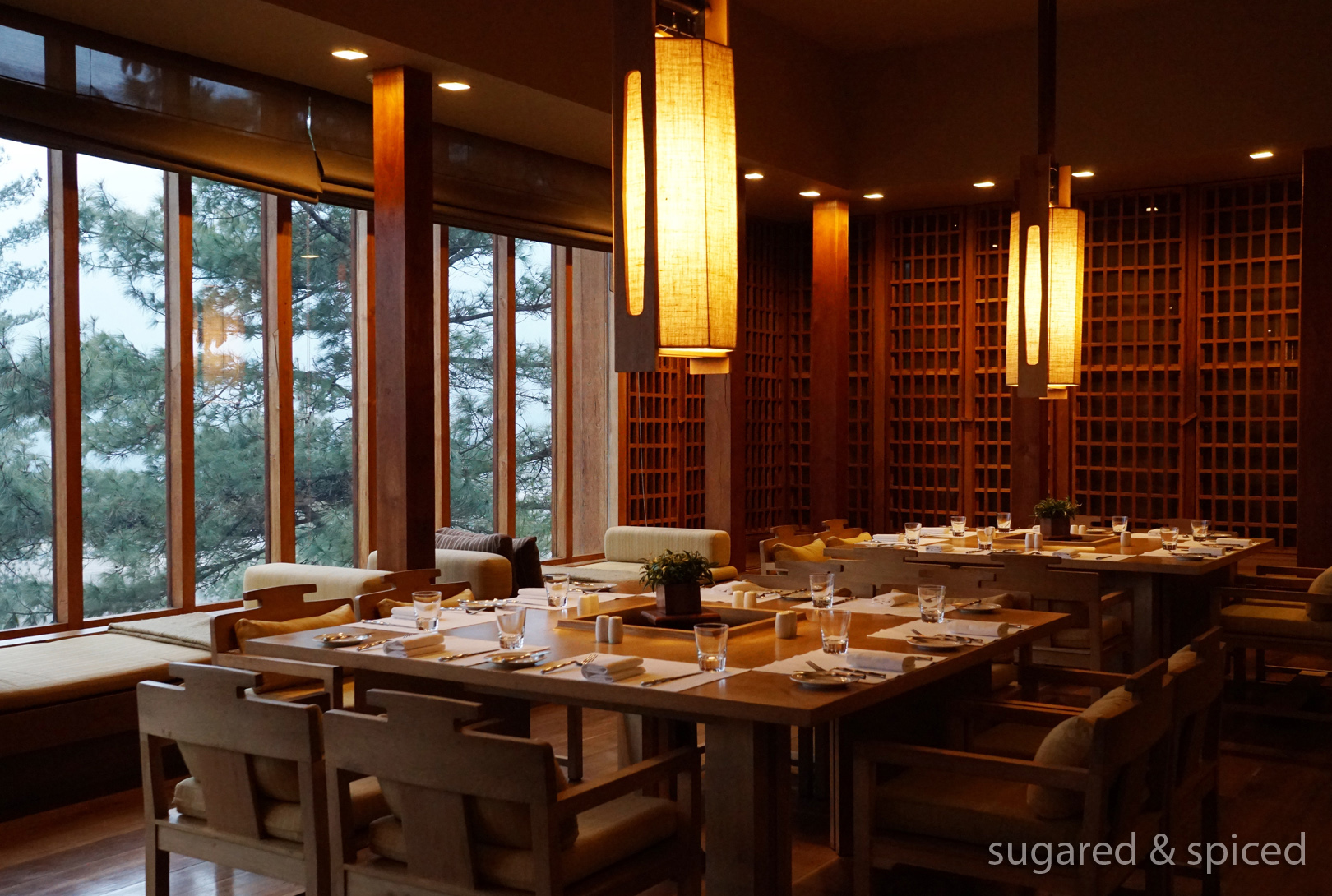
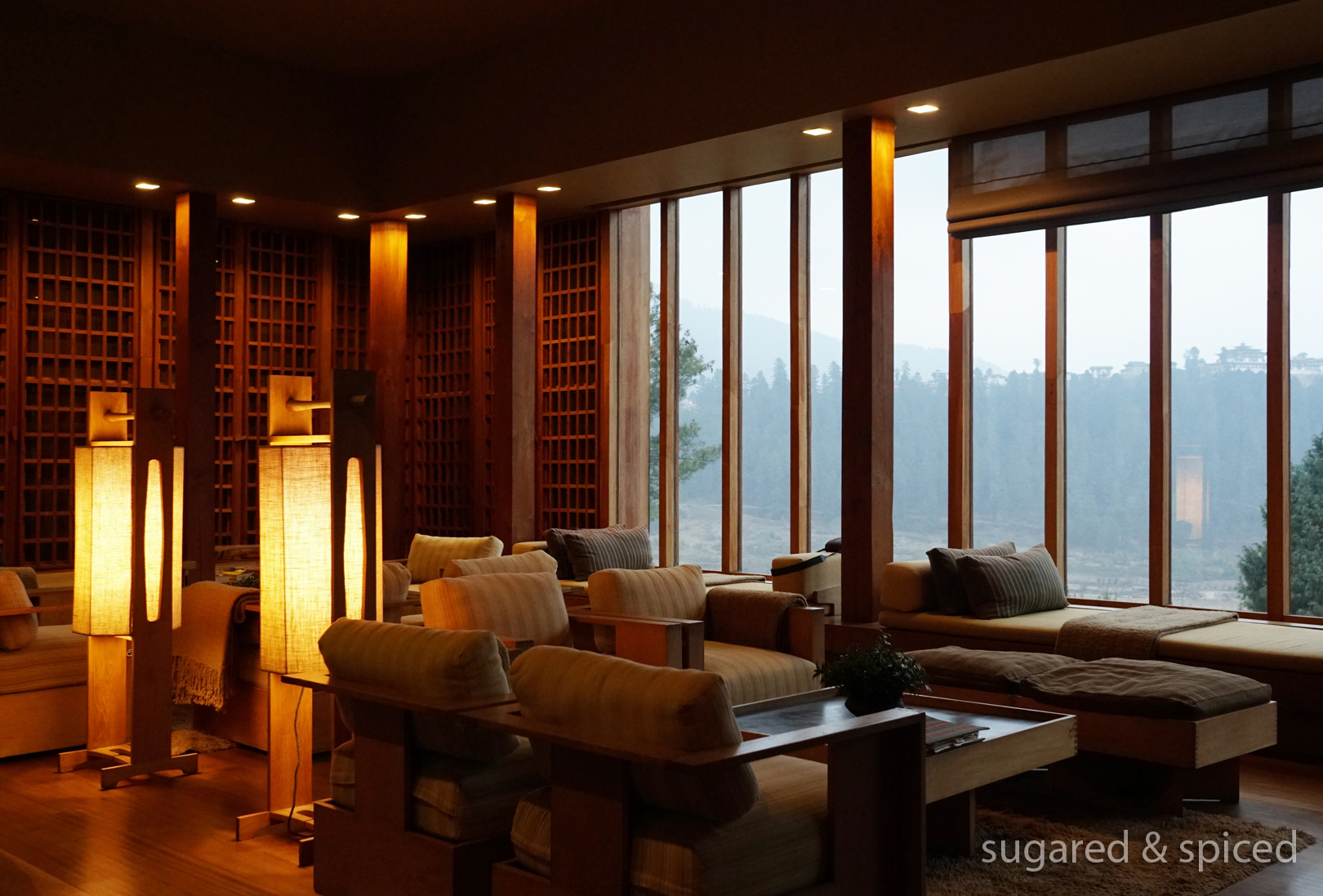
The dining room looked inviting, but we had pre-booked to have dinner elsewhere – in a potato shed.
To reach Amankora Gangtey’s signature “Potato Shed Dinner”, we were led by the chef through darkness, with not much to guide our steps other than flashlights, and into the potato field. A lively bonfire as been lit next to the shed, its warmth especially enticing on a freezing night like this. We settled down to sample some ara (local rice wine) and house-made potato chips, accompanied by enchanting folk music by a duo of musicians.
餐廳看起來暖和誘人,不過我們當晚已另有安排,要試試 “馬鈴薯農舍晚餐”。
在主廚的帶領下,我們在漆黑中拿著手電筒,沿著馬鈴薯田裡的小徑走了進去。農舍旁已升起篝火,邊喝著當地人用米釀的 “ara” 酒暖暖身子,邊聽著兩位樂手演奏的民俗音樂,氣氛奇妙。
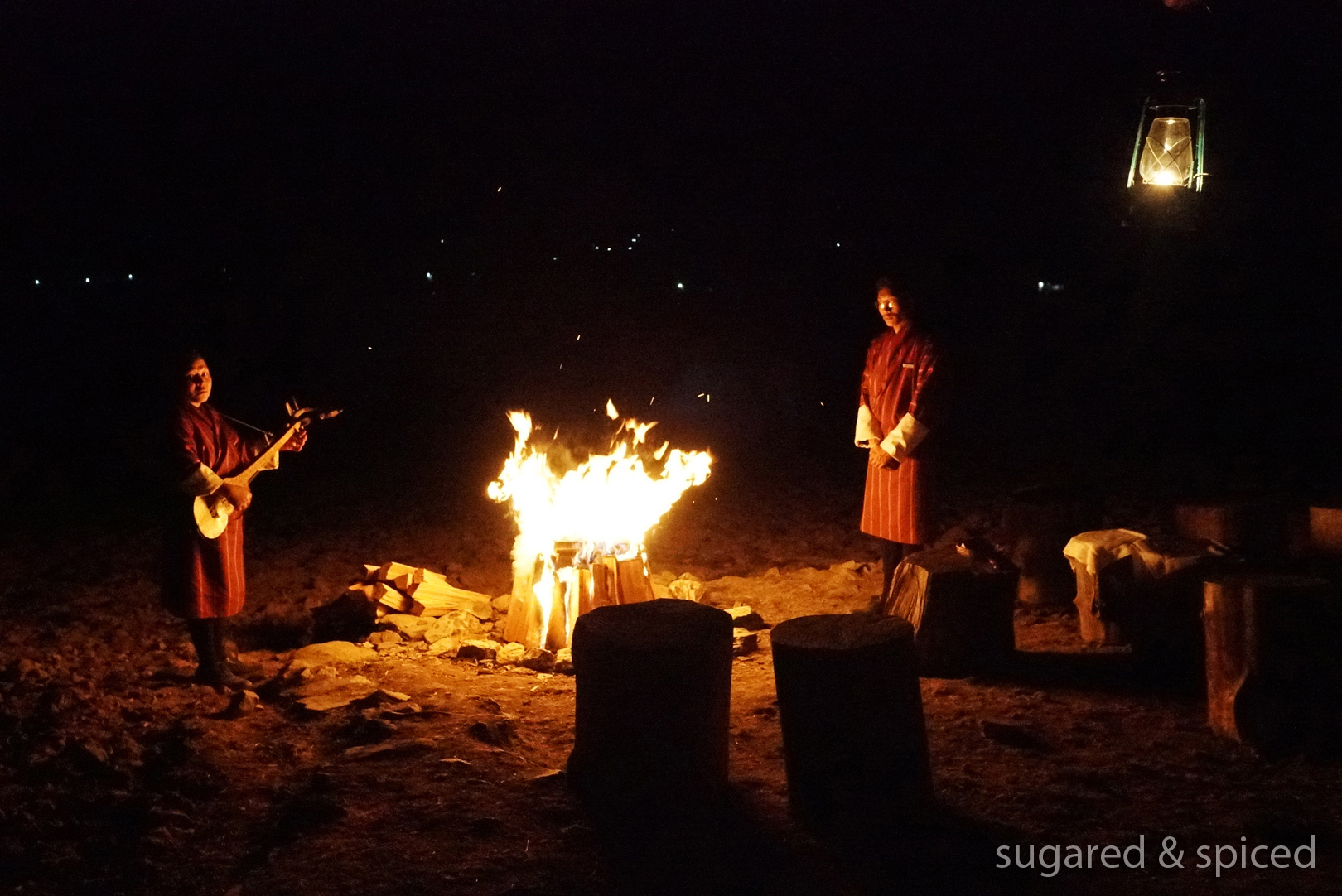
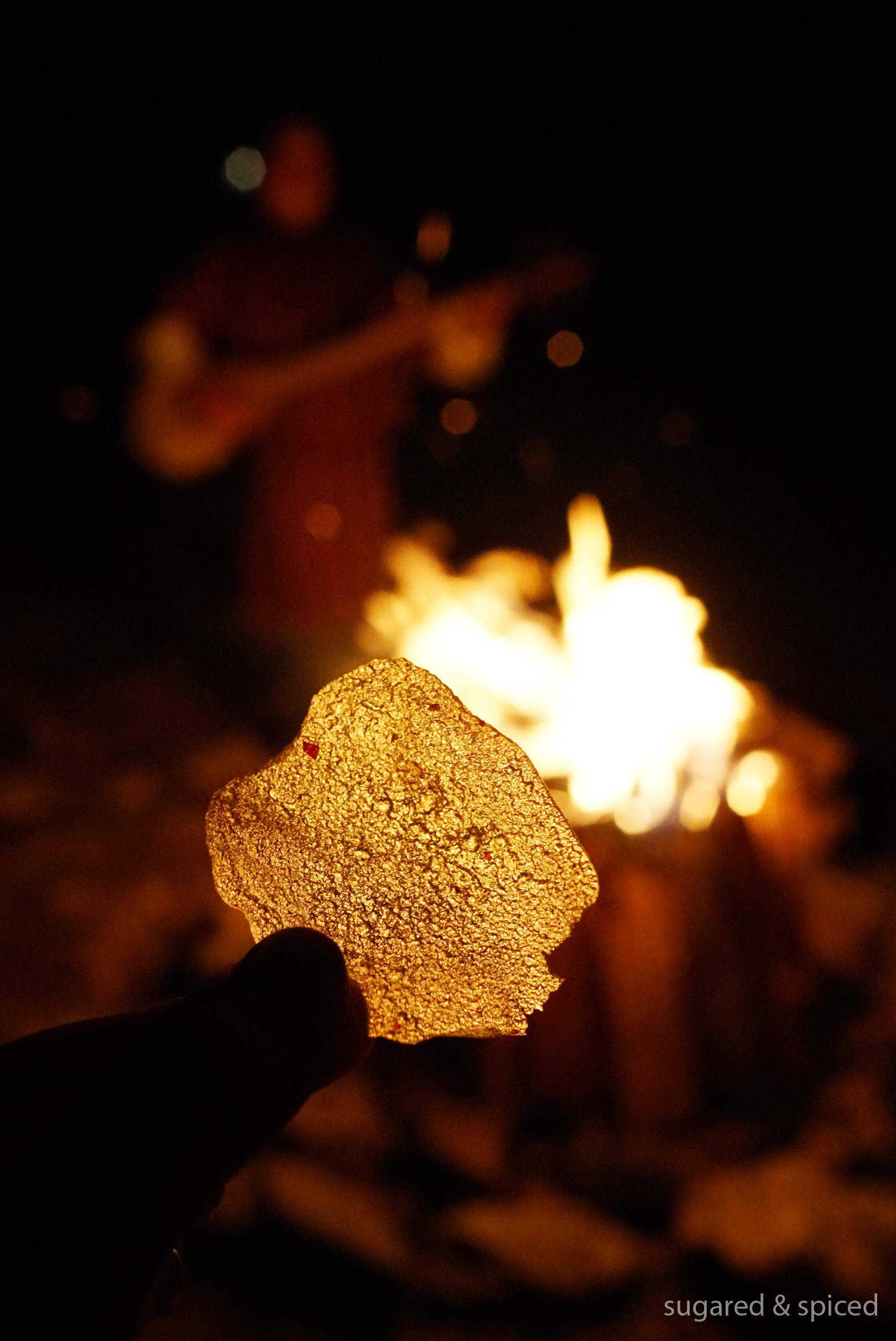
As charming as that was, I was glad to be ushered into the shed and away from the cold. This stone-built structure was originally used to house local farmers’ autumn potato harvest, but had been transformed into a romantic dining space warmed by a traditional bukhari wood-burning oven and a sea of flickering candles.
踏入農舍的那一刻,滿屋子搖曳的燭光美得讓我屏住了呼吸,沒想到用來存放馬鈴薯的石頭小屋能改造成如此浪漫的空間。室外溫度只有零度,但屋子裡的爐火、燭光、椅子上的暖水袋和羊毛毯,讓人由內至外備感暖意。
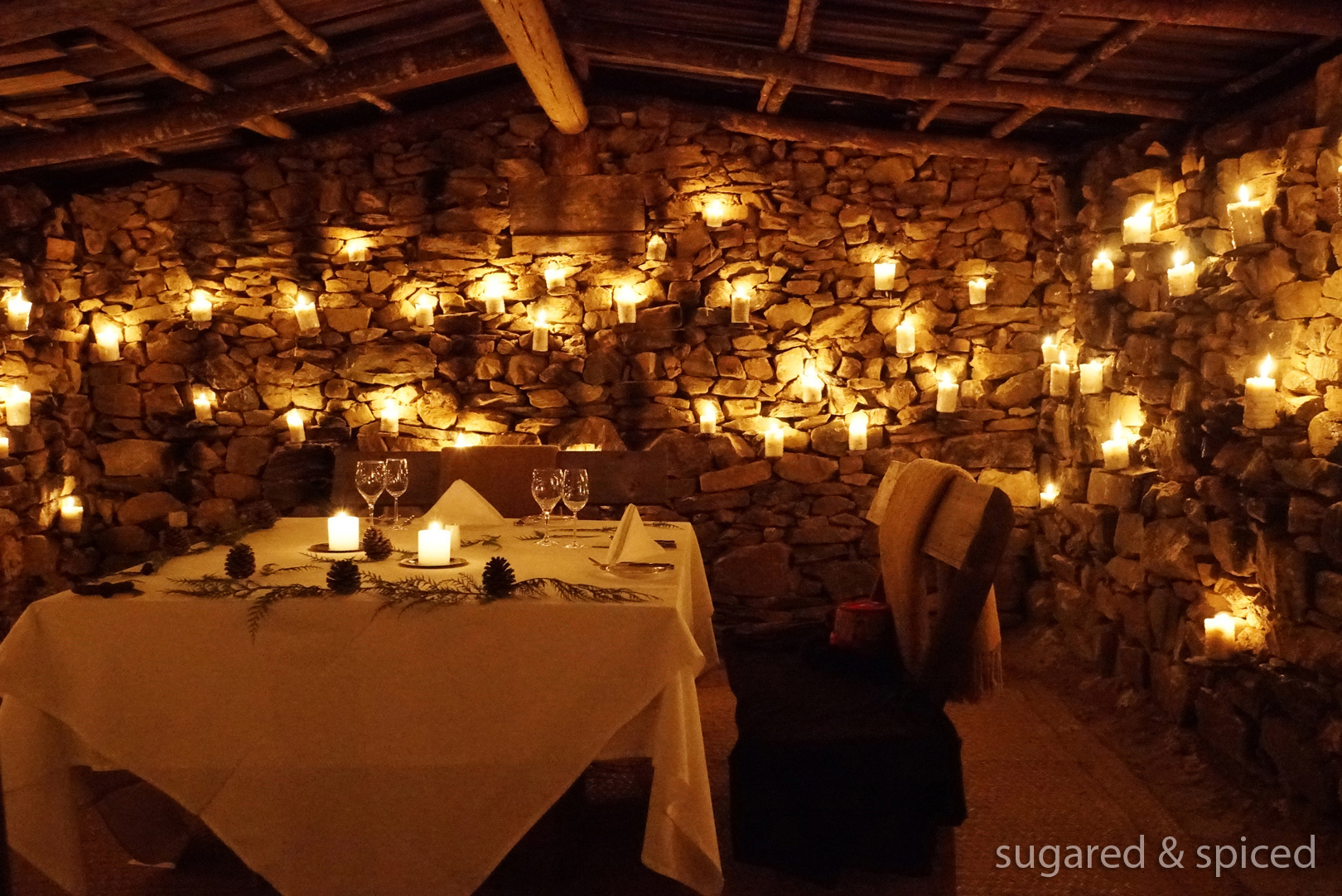
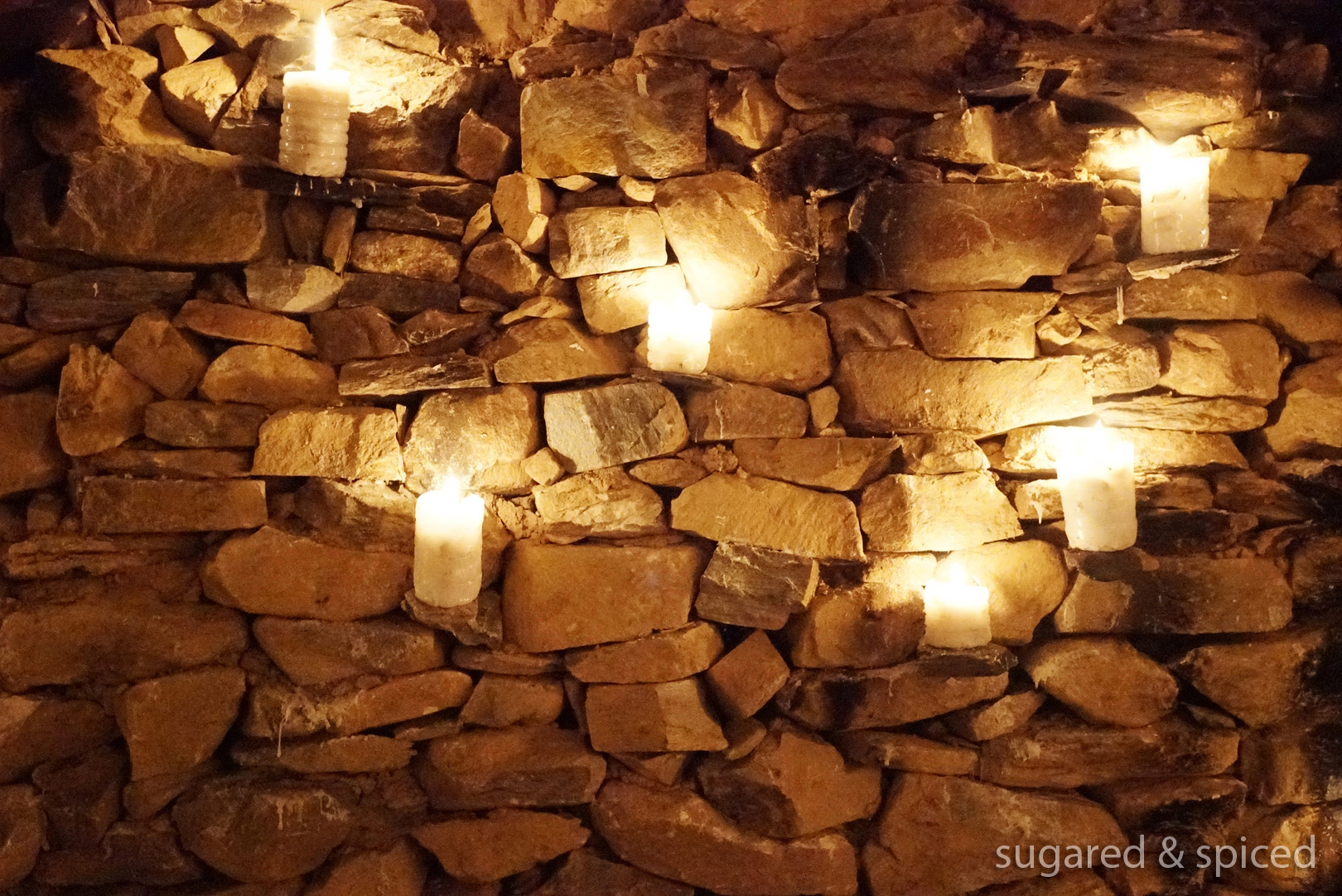
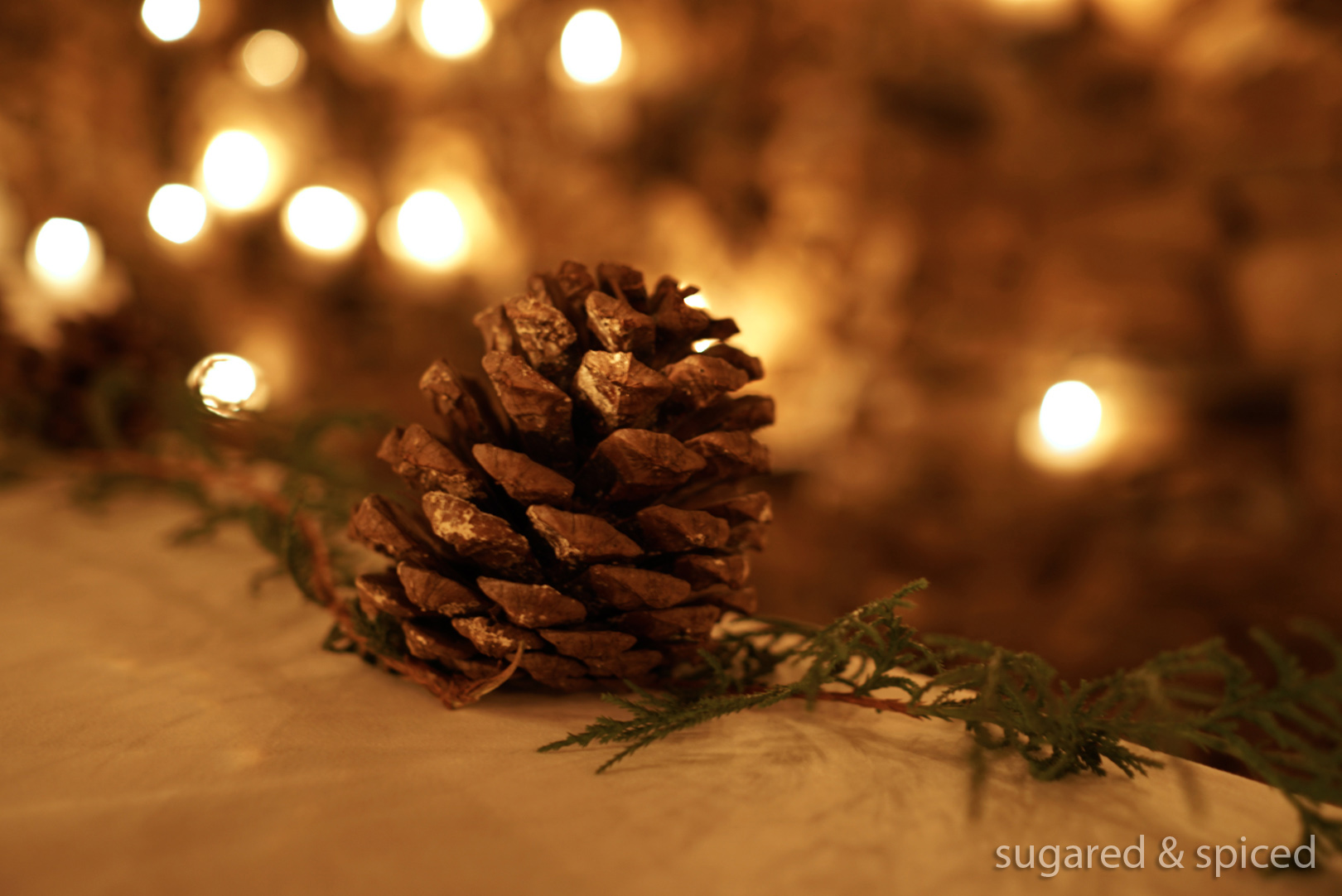
Dinner menu, printed on beautiful local paper adorned with pressed leaves.
晚餐菜單印在美麗的紙張上,還悉心地用壓花做了裝飾。(在不丹收到的每一張紙我都捨不得扔,全都小心翼翼地帶回家做紀念。)
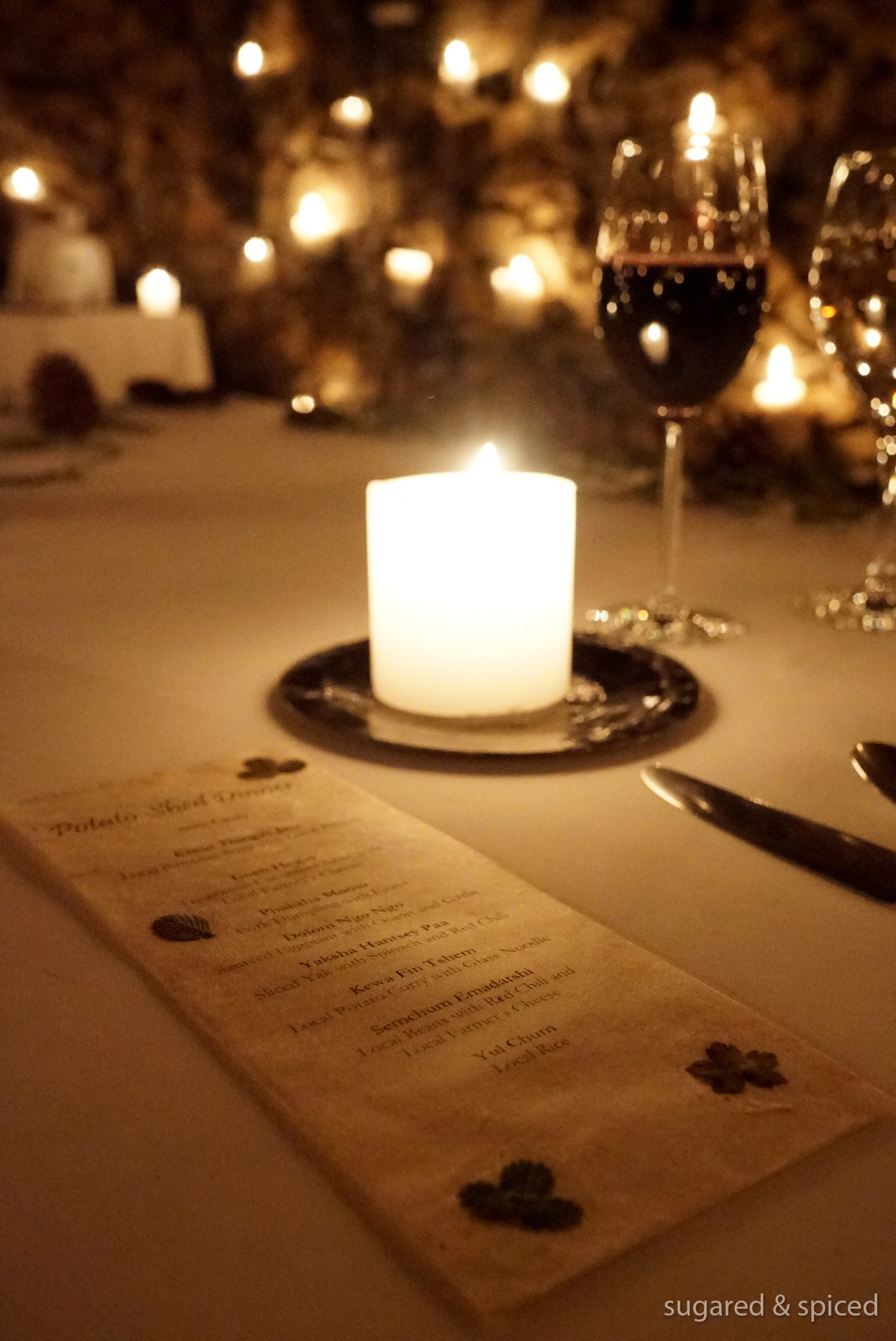
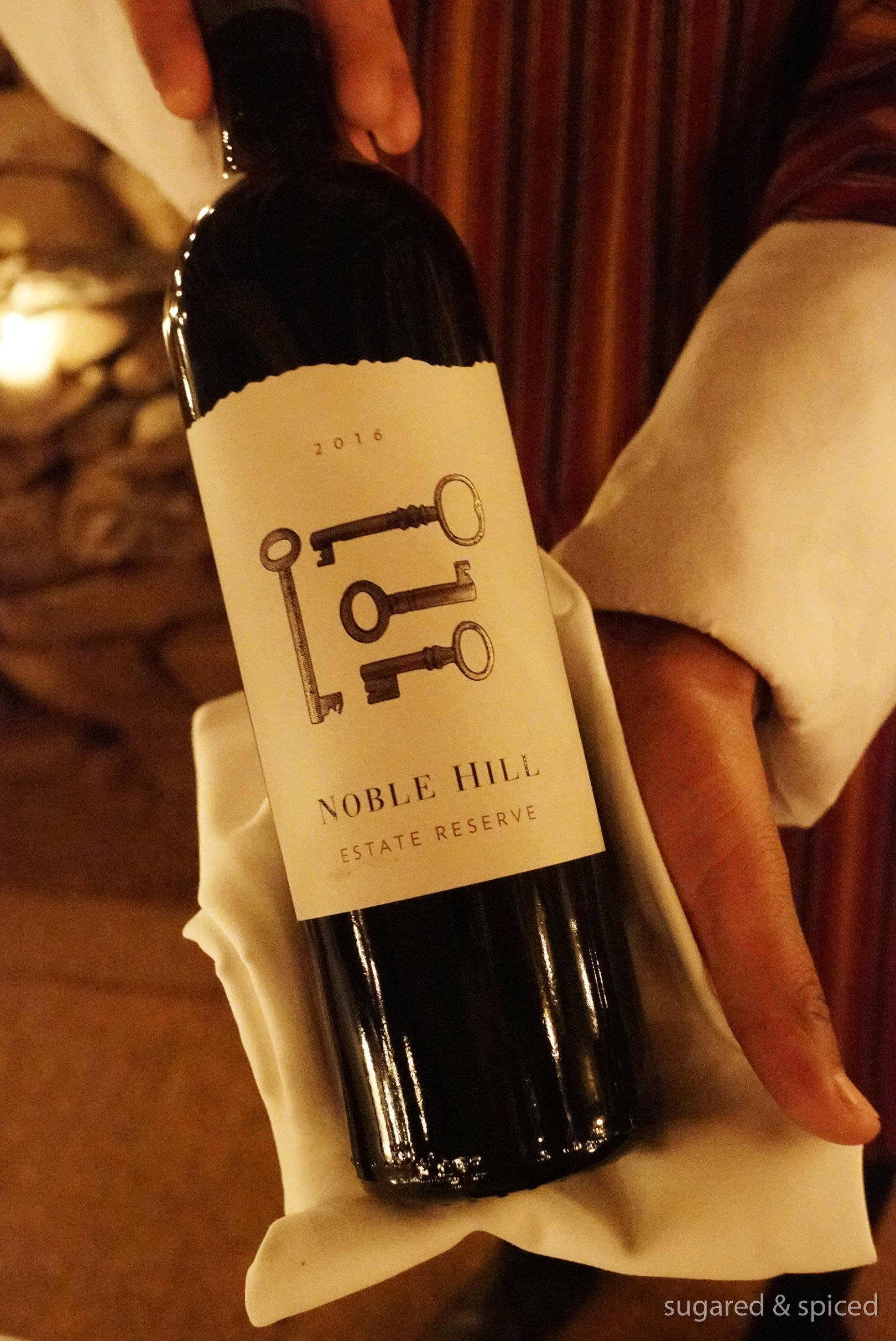
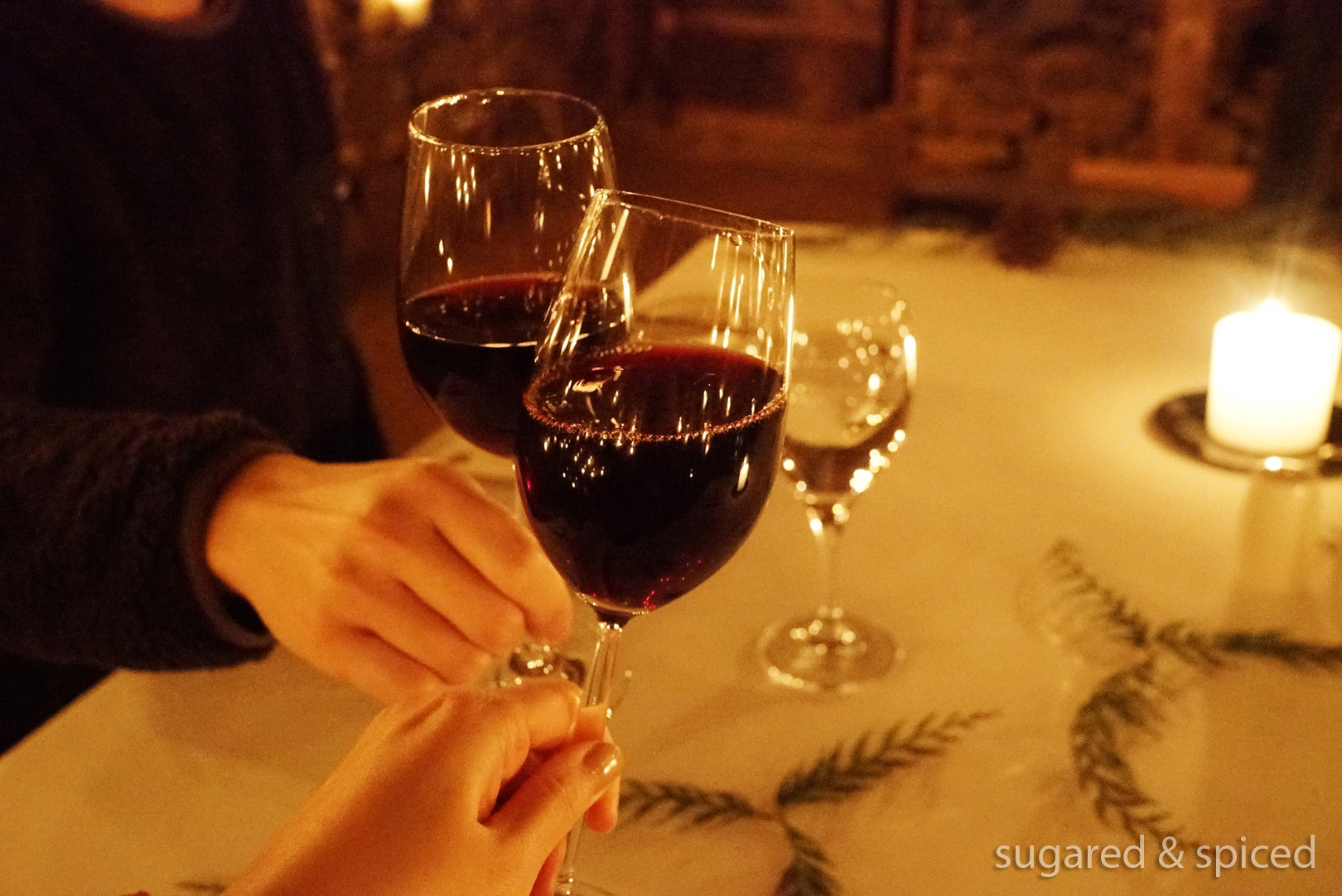
Dinner was a feast. Ezay (chili condiments), momo (pork dumplings), suja (butter tea), sliced yak with spniach and red chili, local potato curry with glass noodle, local beans with farmer’s cheese…My shabby photos (I blame the dim lighting) do not do justice to these delicious bowls of food, you’ll just have to use your imagination.
晚餐有如一場盛宴,沒有讓人眼花撩亂的料理,而是與這個氛圍相當登對的樸實美味。“Ezay”(辣椒醬),“momo”(類似小籠包),“suja”(酥茶),氂牛肉炒菠菜和紅辣椒,馬鈴薯粉絲咖哩,當地起司燉豆子…由於光線太暗無法捕捉到每到菜色最誘人的模樣,請大家自行腦補一下嘍。
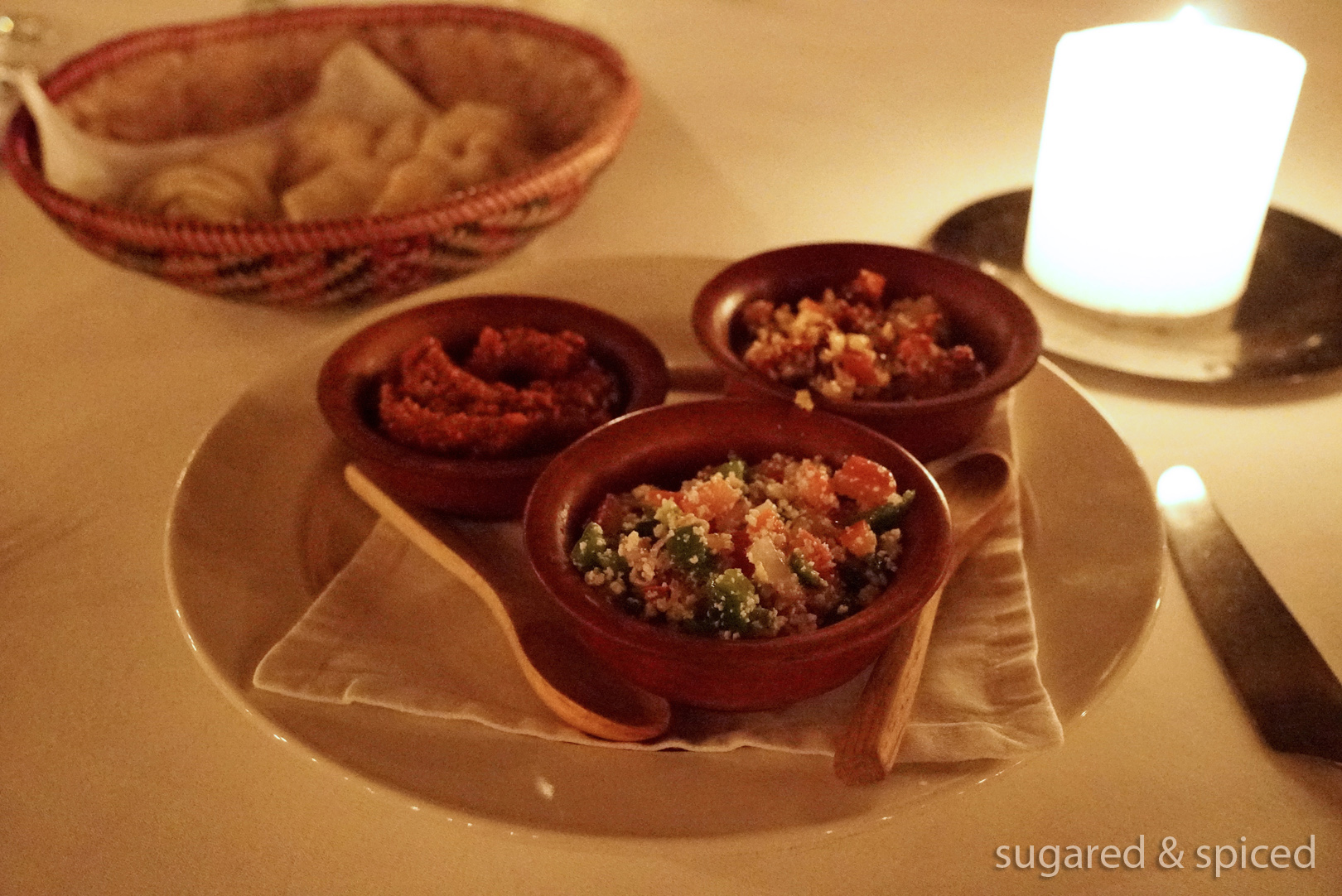
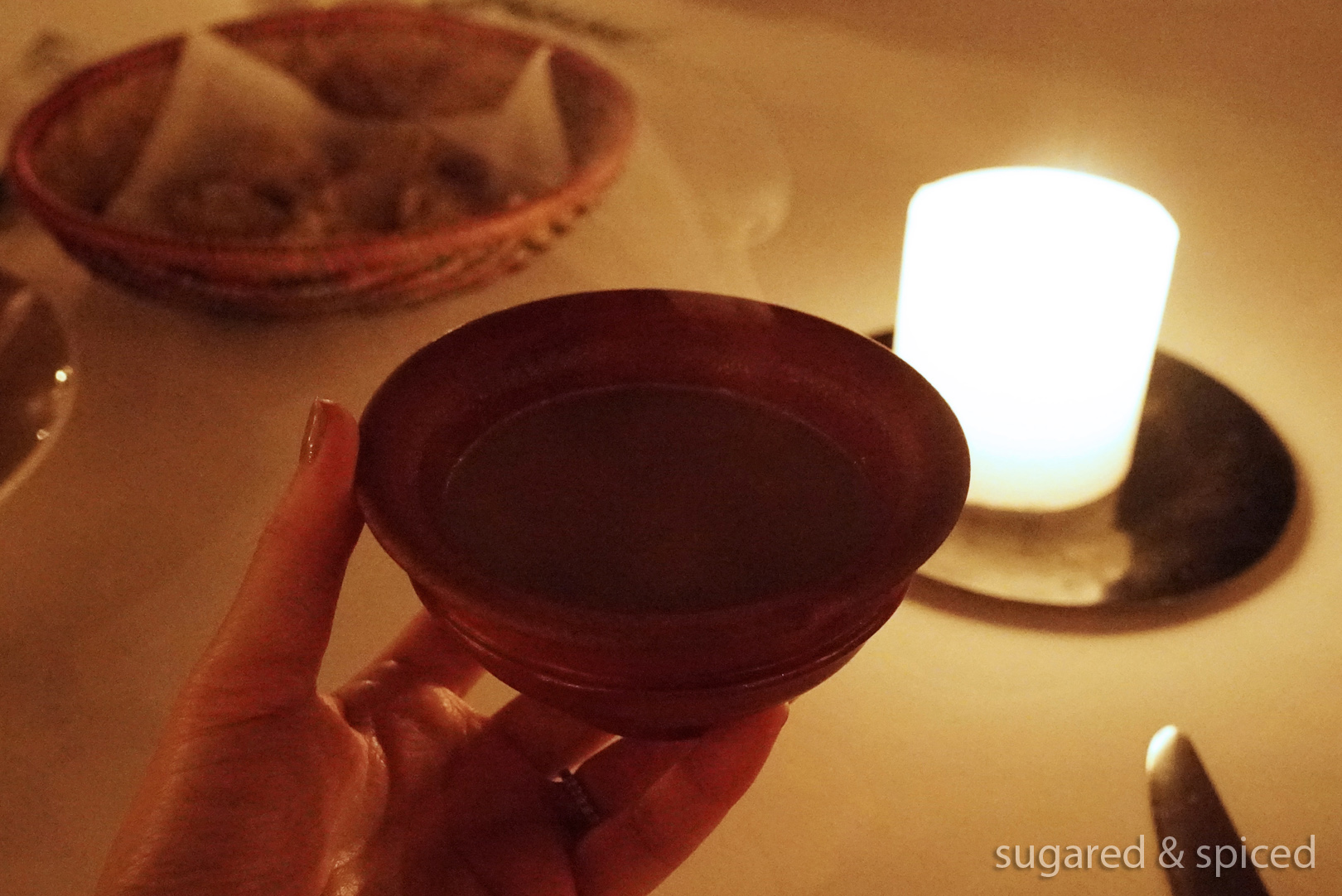
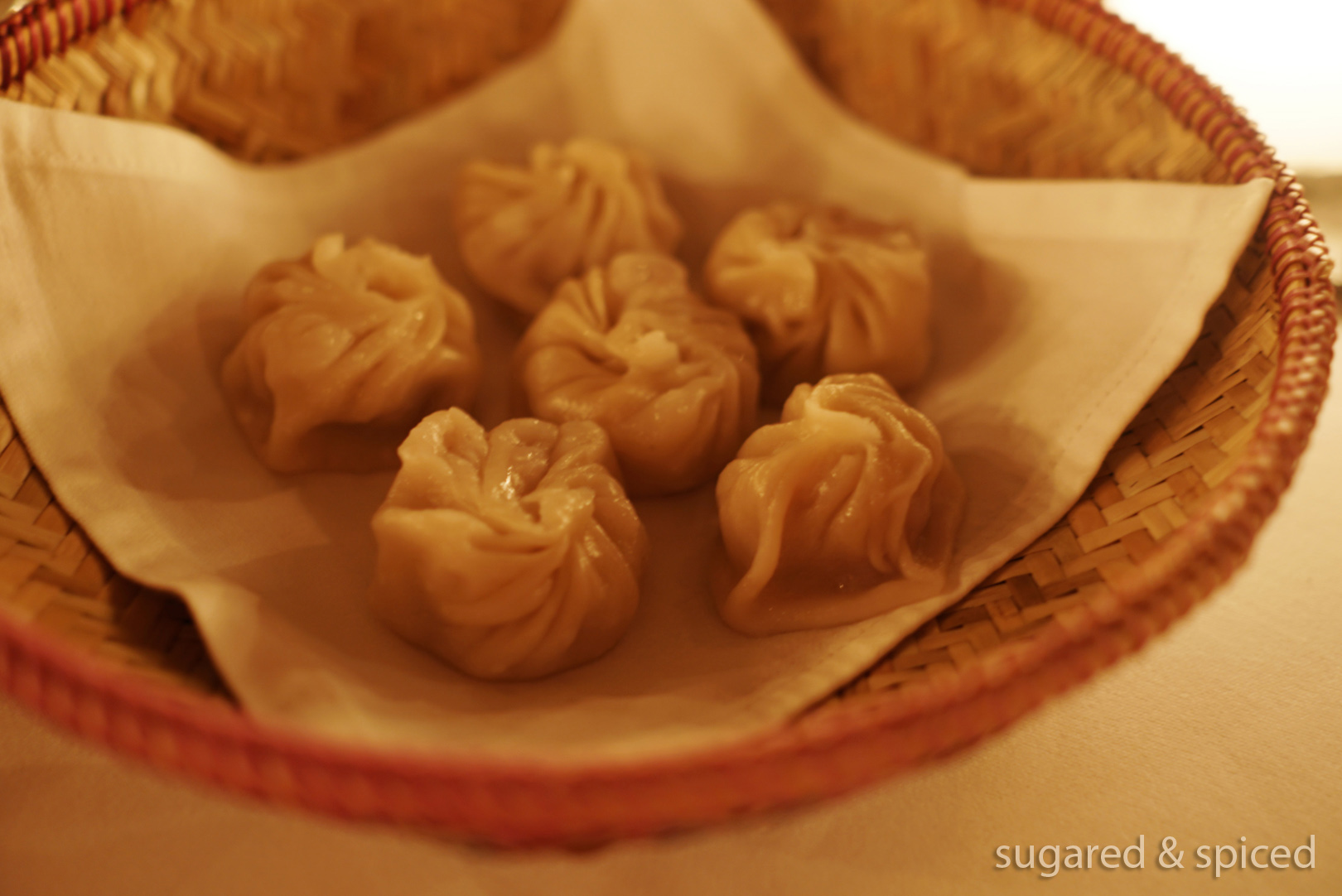
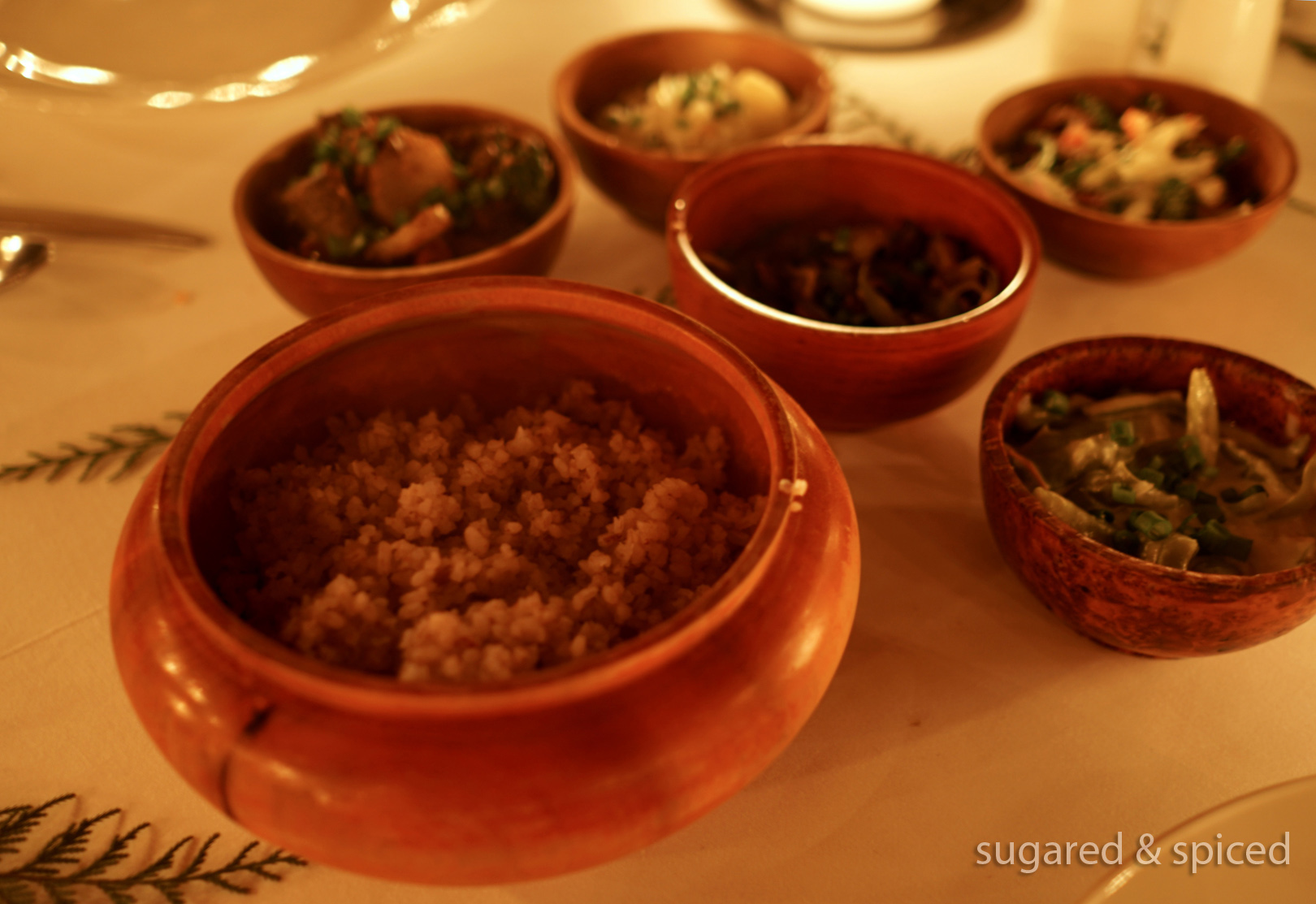
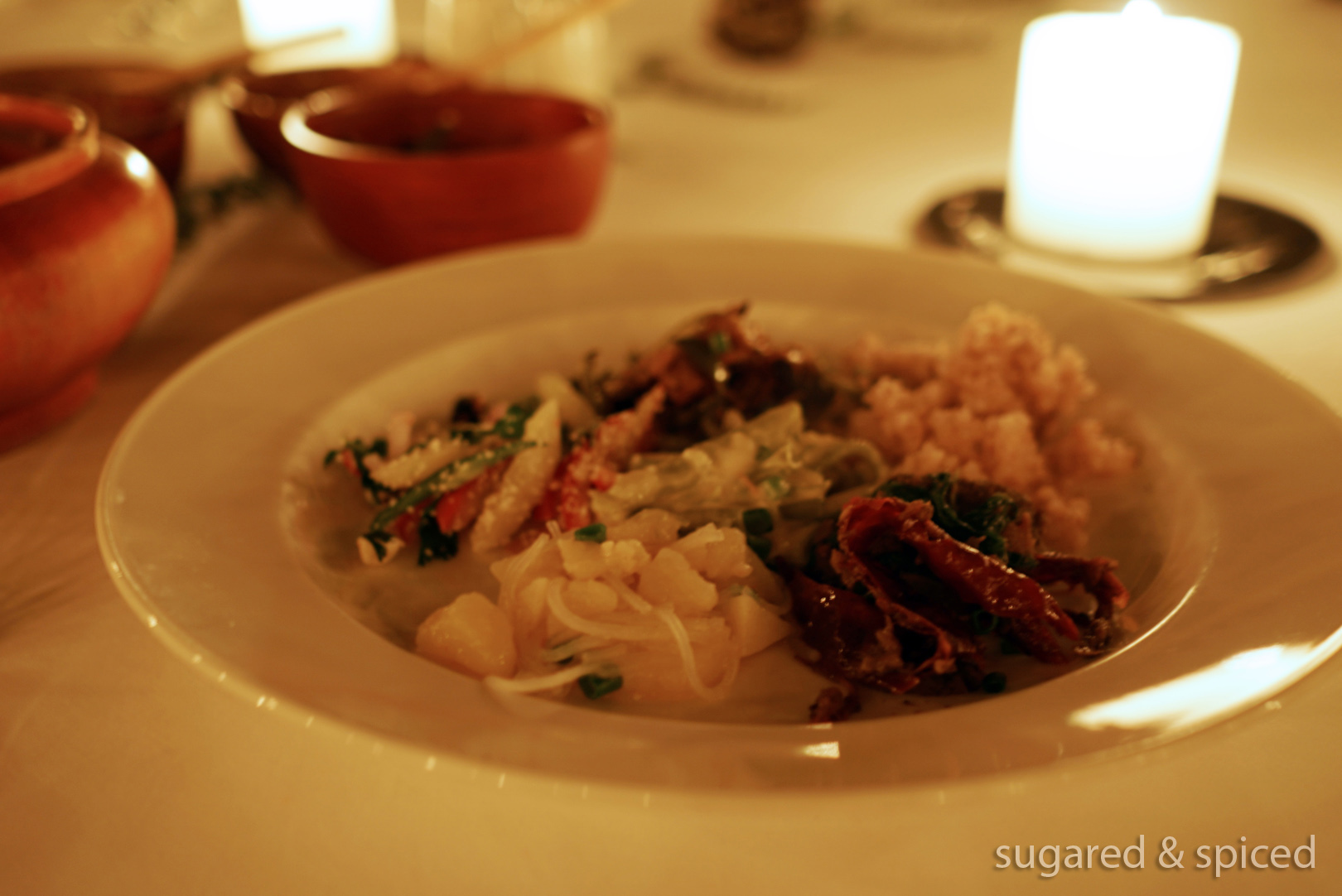
When I asked our delightful waiter (who was all smiles during dinner and patiently answered my never-ending string of questions) how to say “very delicious”, he told me it’s na me sa me shimbe. I later looked this up – shimbe means “delicious”, and na me sa me means “so much” or “infinitely”, and if translated literally, “beyond the earth and sky.”
How poetic is that.
Infinitely satisfied, we retired to our room. The turndown service here was exactly the same as in Thimphu – hot water bags under the blanket, a pair of slippers on each side of the bed, the bathtub partially filled to provide moisture…the only difference was the evening gift, which for tonight was a pair of river stones, painted by a local artist with two graceful black necked cranes.
晚飯後,我問了一直陪伴在我們身邊的服務人員(他有個很可愛的笑容,而且總是很耐心地回答我的所有問題)如何用不丹的宗卡語說 “非常好吃”,他告訴我是 “na me sa me shimbe”。我後來查了一下,“shimbe” 是美味,“na me sa me” 是非常,極度,不過如果直譯的話,有 ”超越天與地“ 的意思。
超越天與地的美味,如此詩意的表達。
酒足飯飽,回到房間。夜床服務和 Thimphu lodge 也完全一樣 – 被子下藏了熱水袋、拖鞋分別擺在床的兩側、浴缸裡放了半缸水保持空氣濕潤…唯一不同的是禮物,今晚收到的是當地藝術家的作品,一對畫有黑頸鶴的美麗石頭。
Day 3, Gangtey
The next morning, we woke up to sunshine pouring through our window panes. The lodge was exceedingly quiet, the silence broken only by the chirping of birds and the occasional barking of a dog, somewhere far off. Two days in Bhutan, and the rest of the world already seemed like a distant dream.
隔天醒來,陽光滿布。Lodge 里靜悄悄的,只有風聲,鳥鳴,和遠方的犬吠聲。入不丹才第三日,外面的世界已如遙遠的夢境般模糊,似乎是上輩子的事情了。

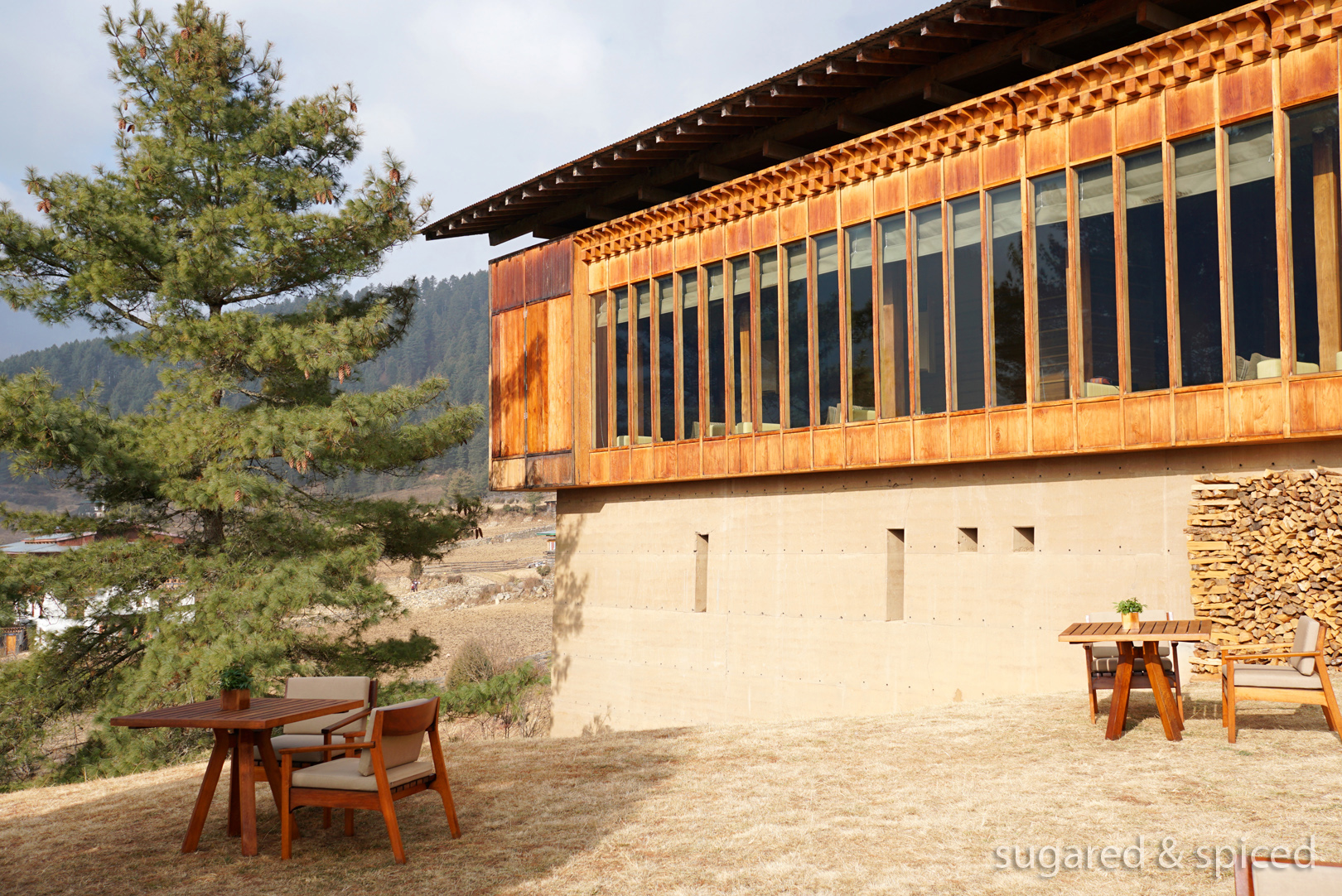
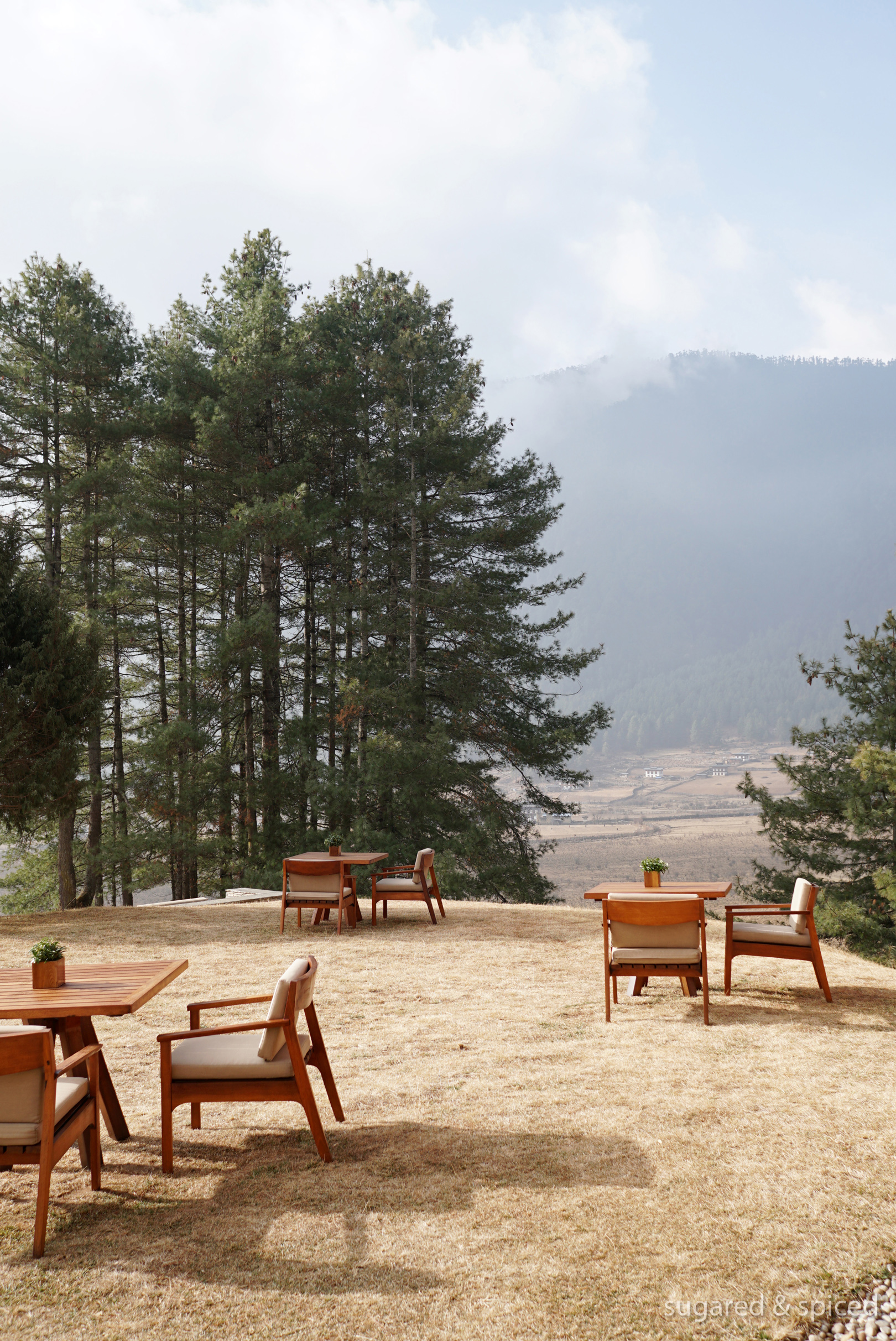
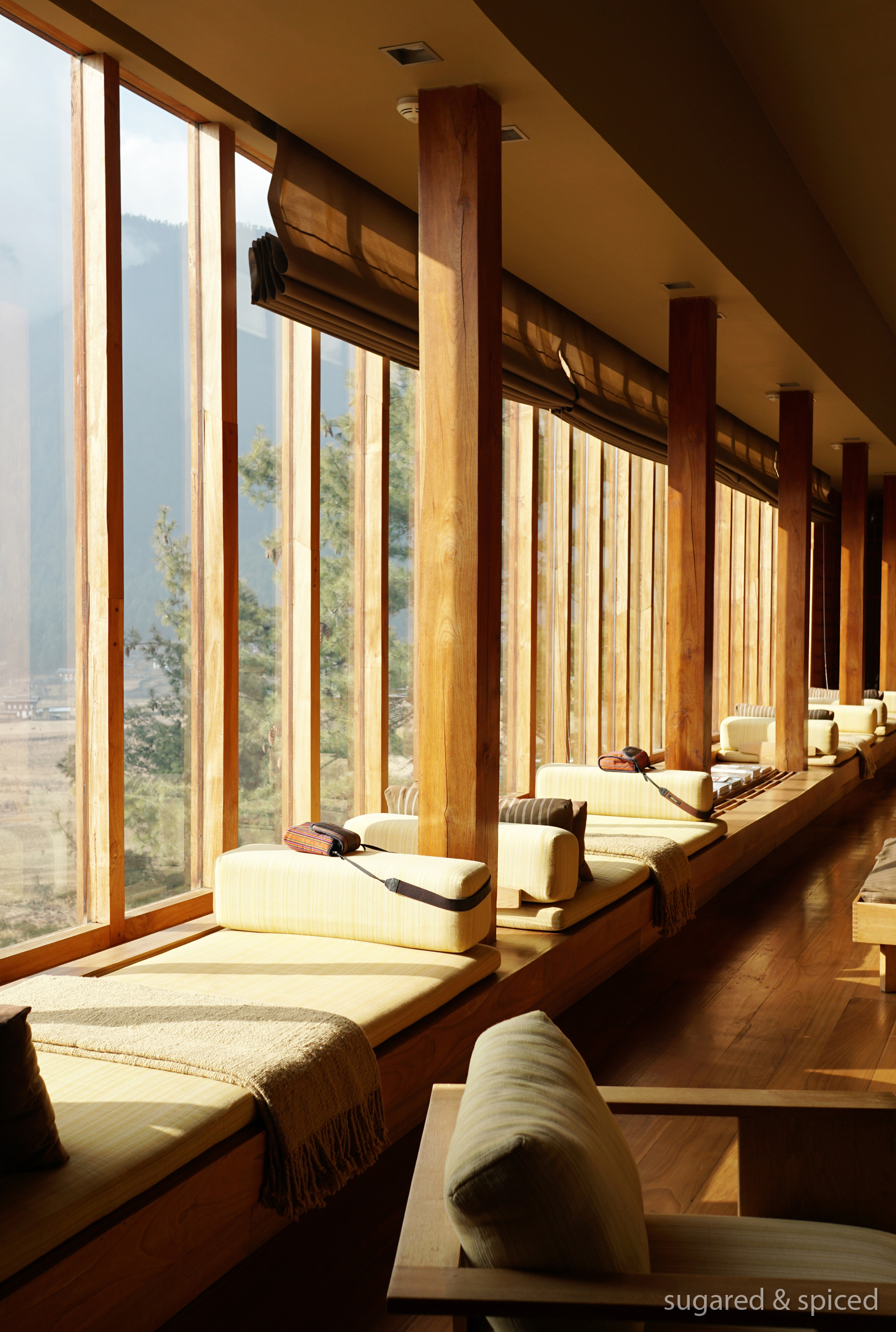
Breakfast was something to look forward to. For this sunny morning, I chose an equally sunny dish – zecha gyem, scrambled eggs with local cheese, garlic, tomato, coriander, steamed rice and ezay.
在陽光早晨里,吃份陽光早餐:“zecha gyem” 是不丹式炒蛋,裡面添了起司、大蒜、番茄、香菜,搭配香噴噴的紅米飯和必不可少的 ezay 辣椒醬。
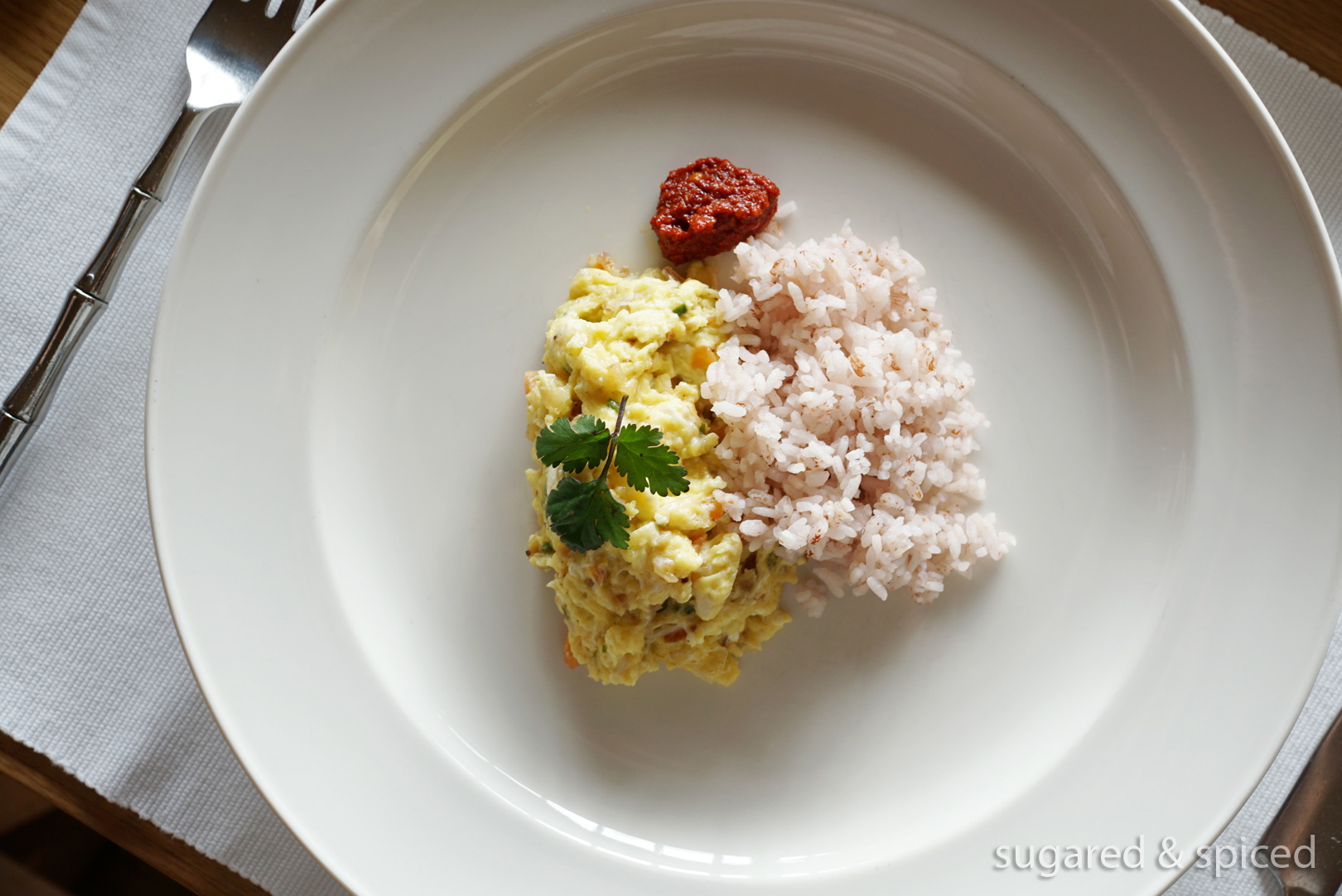
Another thupka, red rice porridge with ginger, green onion, chili, crisp garlic, and local peppercorn.
暖胃的 “thupka” 稀飯也是一個好選擇,今天的版本加了薑、青蔥、辣椒、大蒜脆片、以及當地胡椒。
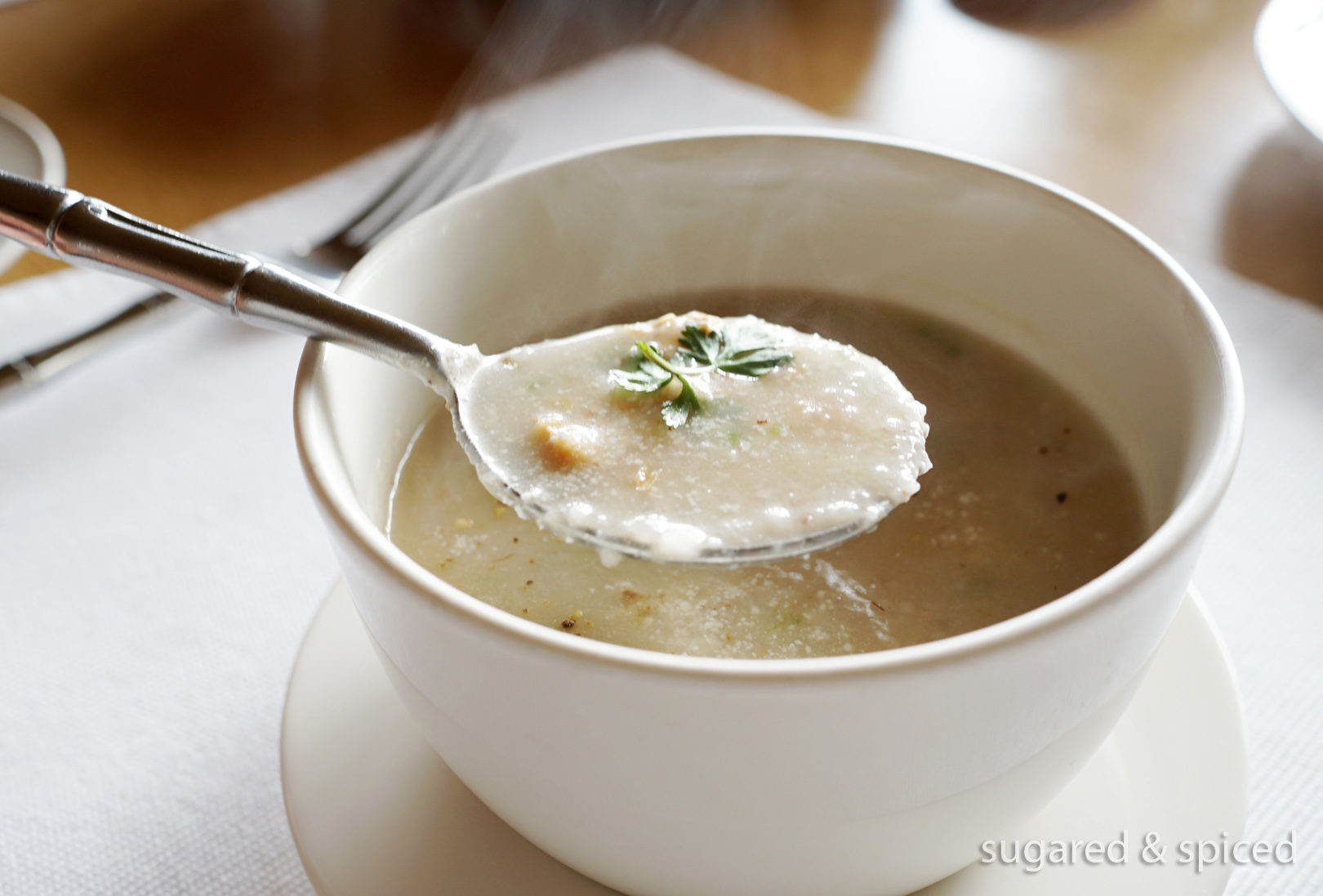
Mango banana lassi, and the obligatory wake-up coffee.
芒果香蕉優格奶昔,以及早安咖啡。
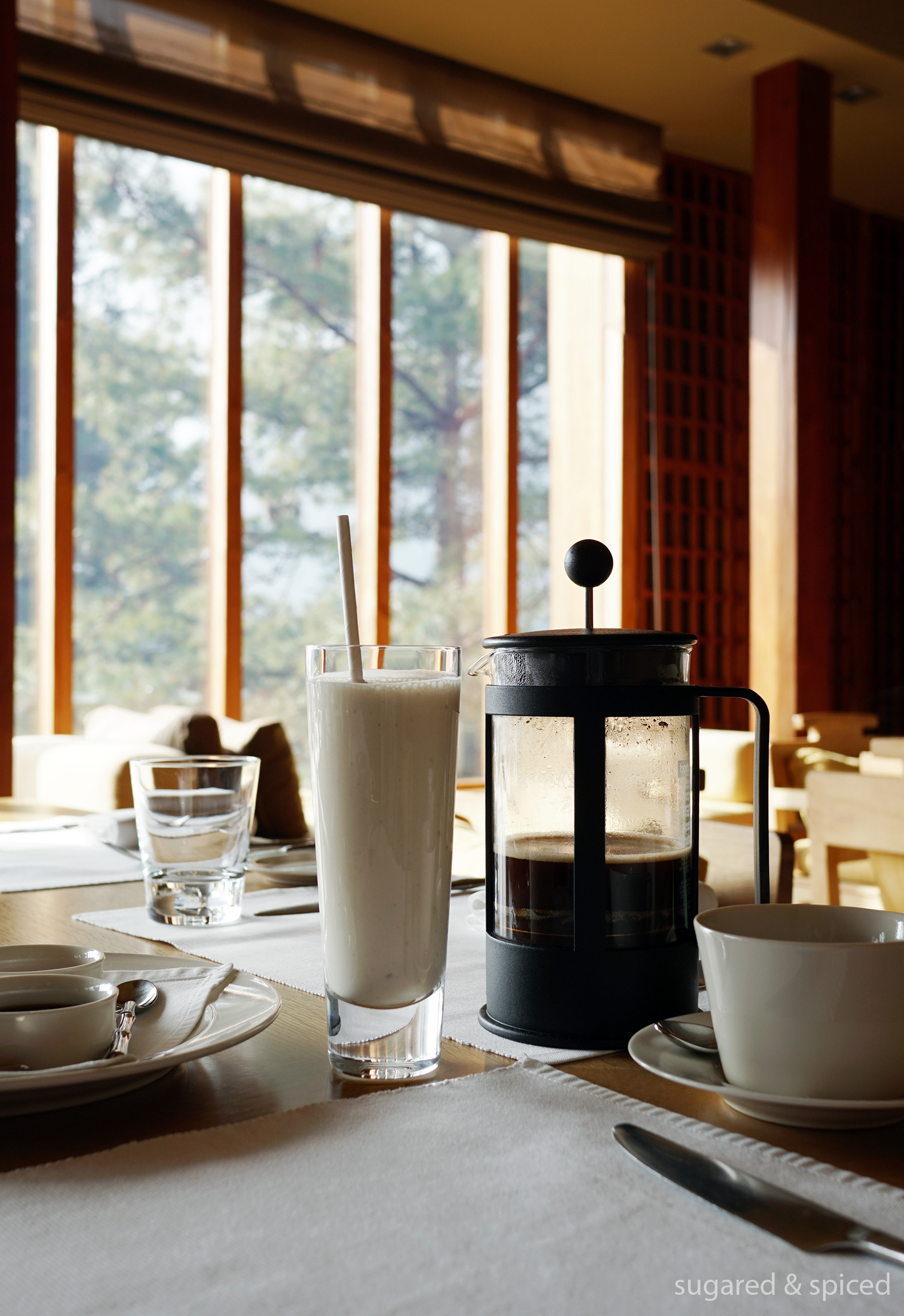
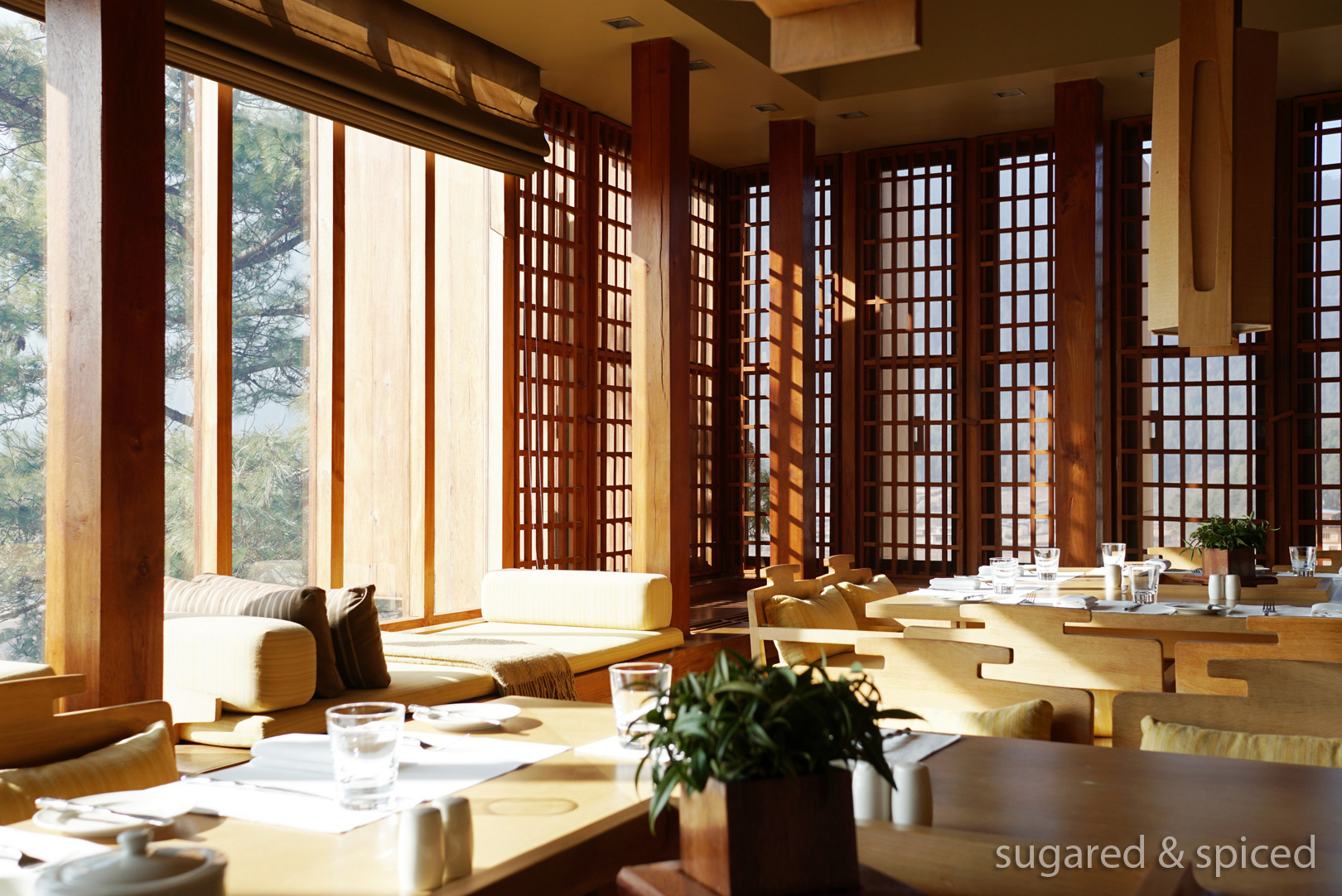
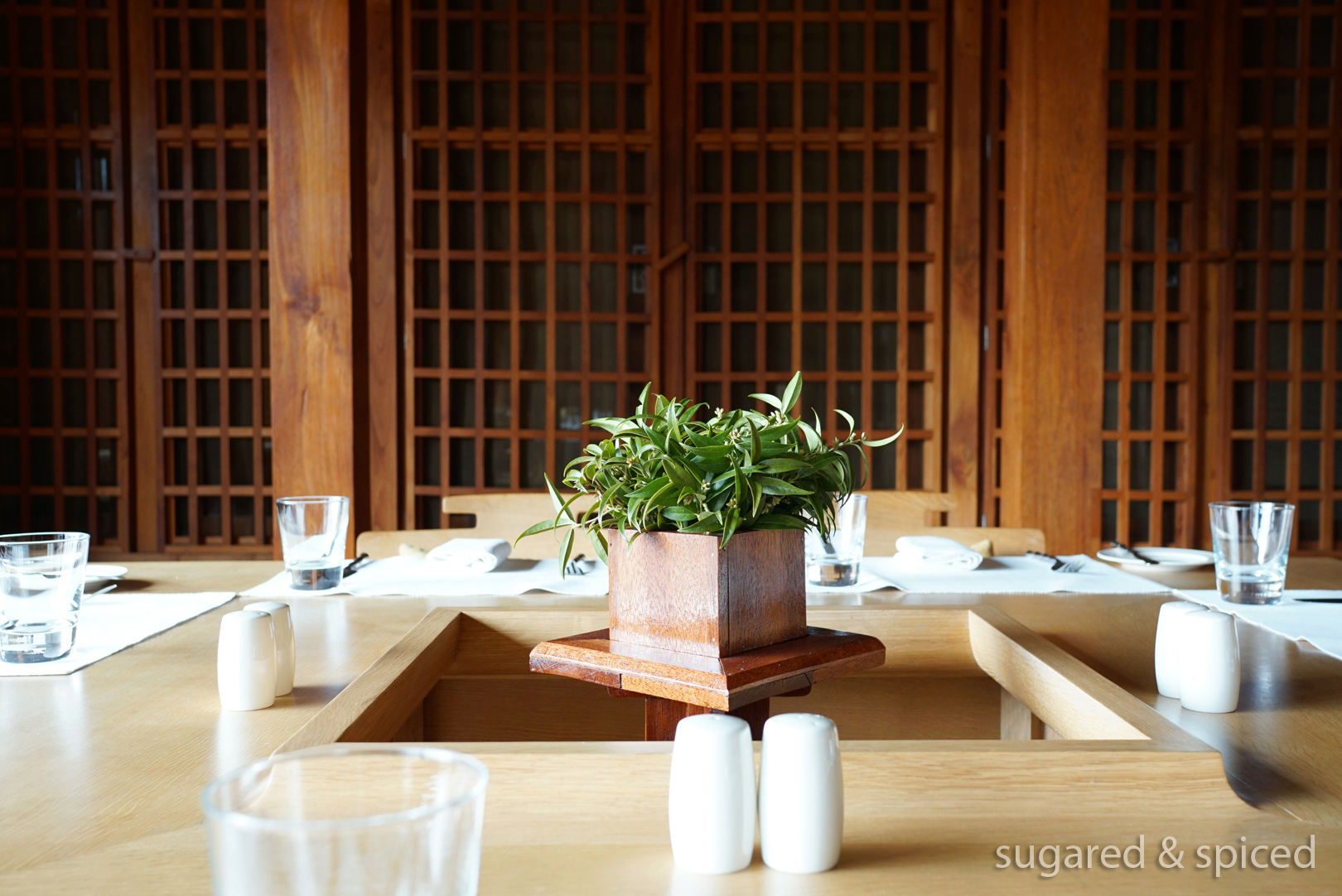
Gangtey in February can be cold especially after dusk, but days are still warm and pleasant – ideal conditions for hiking and exploring. Our first stop of the day is Gangtey Monastery. The original structure was built in 1613 by Gyalse Rigdzin Pema Thinley, the grandson and the reincarnation of great Bhutanese treasure finder Pema Lingpa, then renovated in 2002-2008, comprising of a central goempa, quarters for monks, and meditation centers.
今日的第一站是崗提寺(Gangtey Monastery),位於山坡上,視野遼闊。早晨的寺廟格外幽靜,里裡外外只見到幾位身著紅袍的和尚以及兩三隻流浪狗,除了我們之外似乎沒有其他游客。選擇在淡季來訪,果然是好主意。
這座寺廟最初由著名的伏藏師 Pema Lingpa(能發掘被埋藏的珍貴經書,雕像和法器的上師)的孫子 Gyalse Rigdzin Pema Thinley 於1613年興建,之後2002-2008年經過重新翻修,除了寺廟,還有學院,僧侶宿舍,冥想中心等。
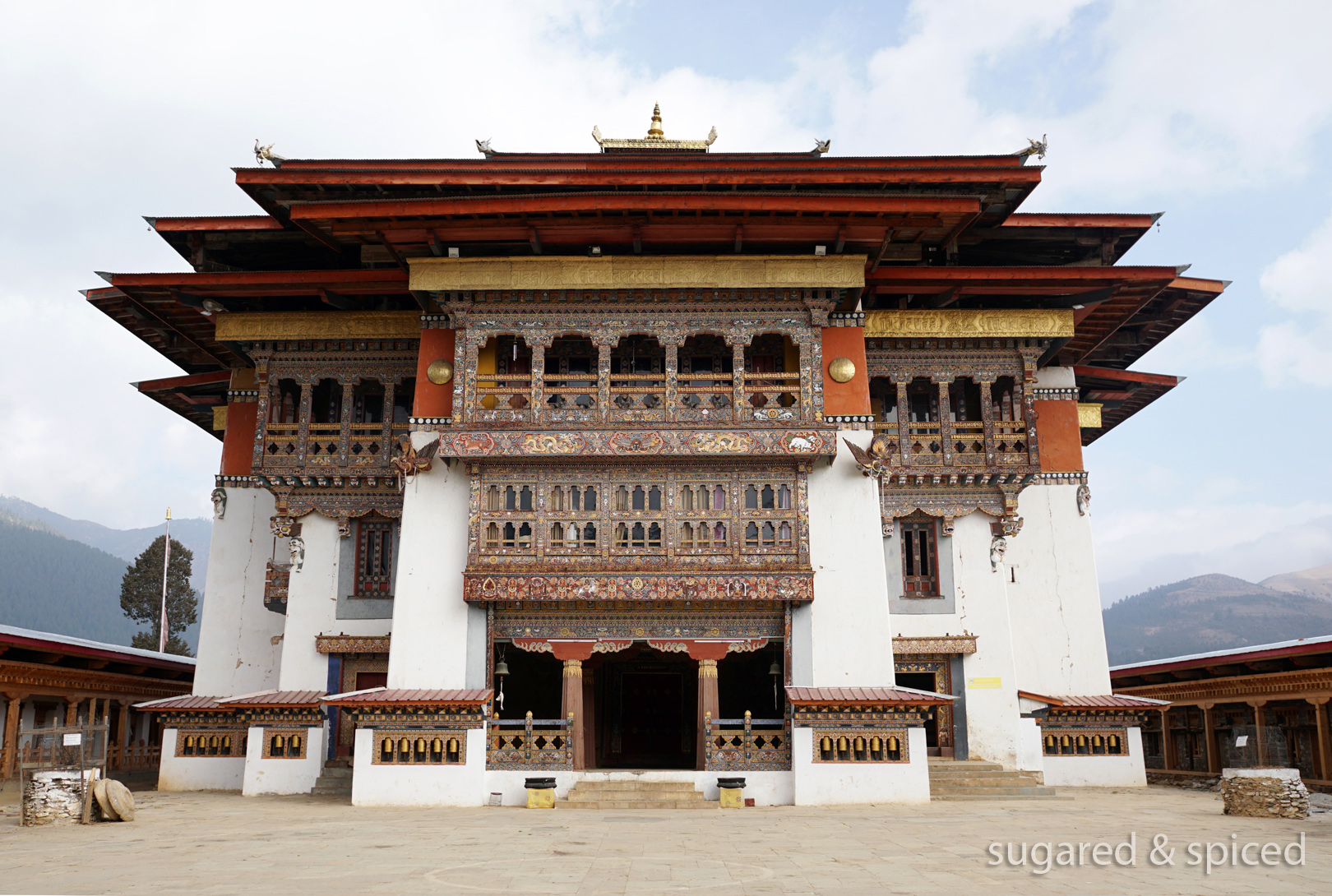
The façade of the monastery is a work of art, with multi-tiered winged roof, ornate balconies, and the Garuda (a legendary bird or bird-like creature) adorning four corners. The interior is stunning as well, decorated with extremely intricate and vibrant wall paintings of cosmic Mandalas, the wheel of life, Zangto Pelri (Guru Rinpoche‘s Paradise)…
But again, I’m unable to show you any images of the interior as photography is strictly prohibited within temples.
崗提寺外觀雕琢繁復,層層疊疊的精細木雕如藝術品般。寺廟內的壁畫也相當精彩,其中生命之輪的彩繪特別引人註目,Dawa 借機解釋了佛教的六道輪回,包括三善道(天、人、阿修羅)及三惡道(畜生、餓鬼、地獄)。不丹人多為虔誠的佛教徒,相信因果報應和生命輪回的規律,這也是不丹人特別溫和善良、豁達開朗的原因之一吧。
如之前所提,寺廟內一律禁止拍攝,因此未能留下任何照片。
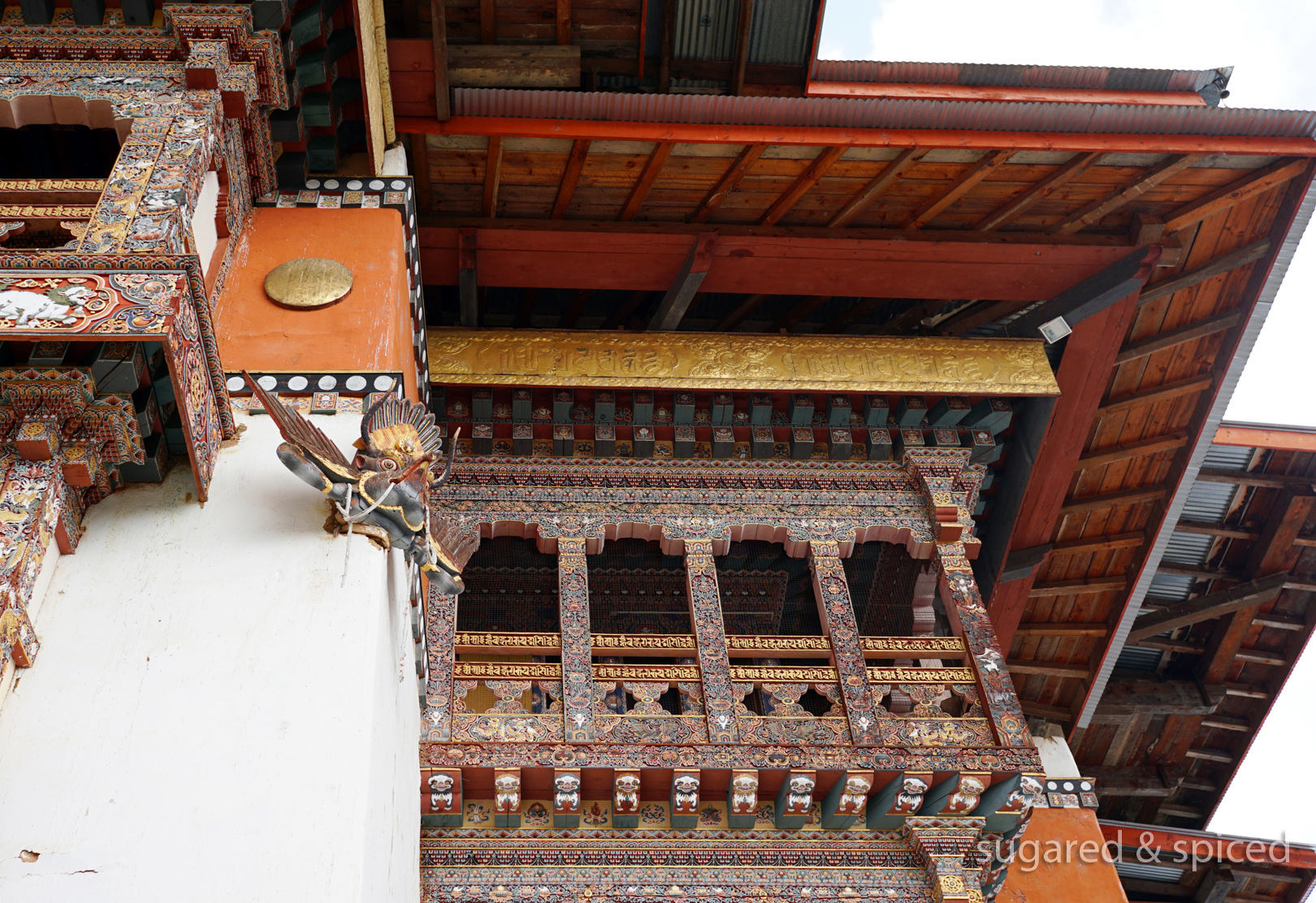
Like prayer flags, prayer wheels are ubiquitous in Bhutan and are often found outside of temples and monasteries. By turning these cylindrical wheels clock-wise, it is believed that the scrolls of mantras within the wheels are activated, releasing prayers to purify negativity, generate compassion, and bring benefit to all sentient beings.
不丹隨處可見的轉經輪,圓柱內裝有經文,每順時針轉一次就等於念誦了一次經。
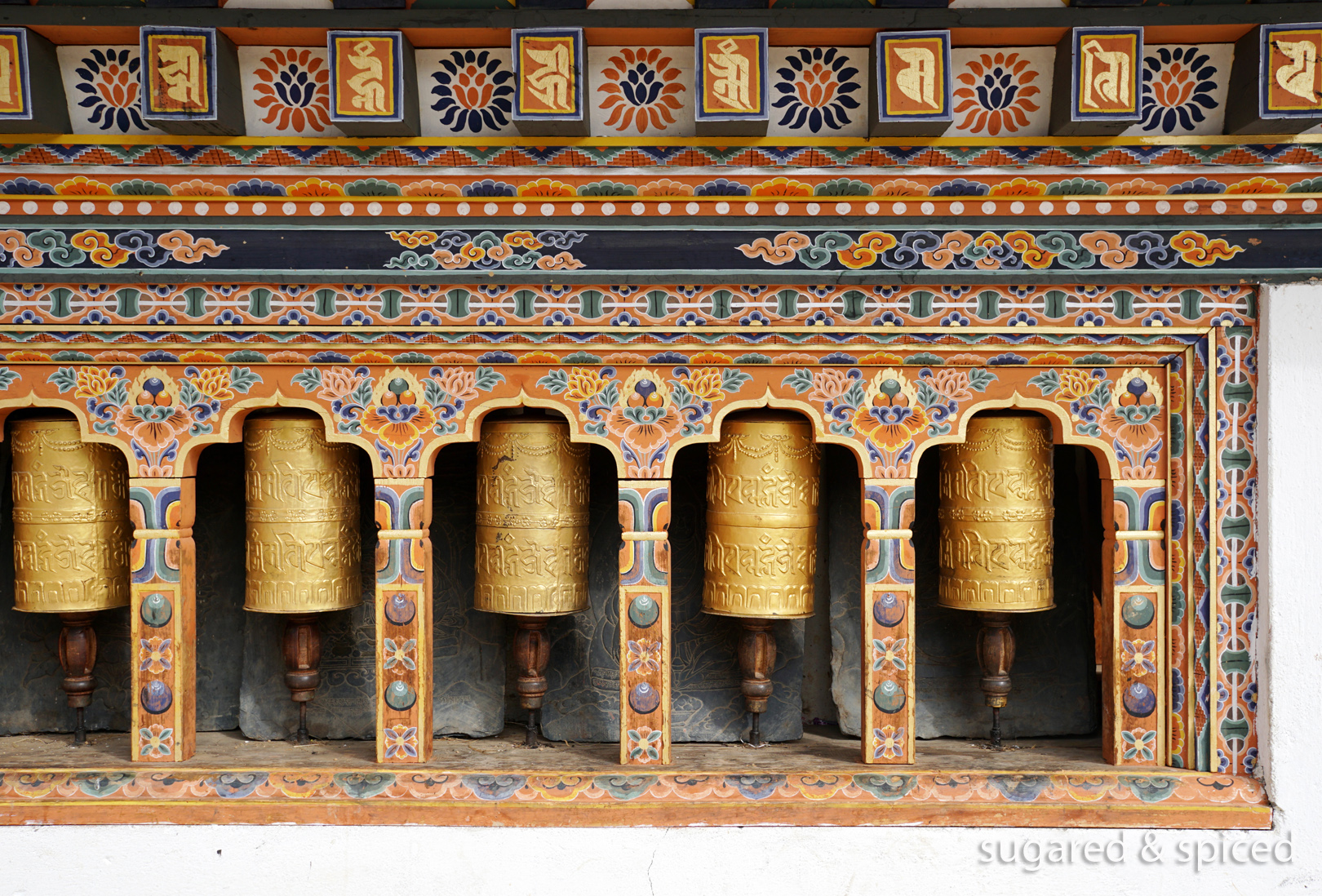
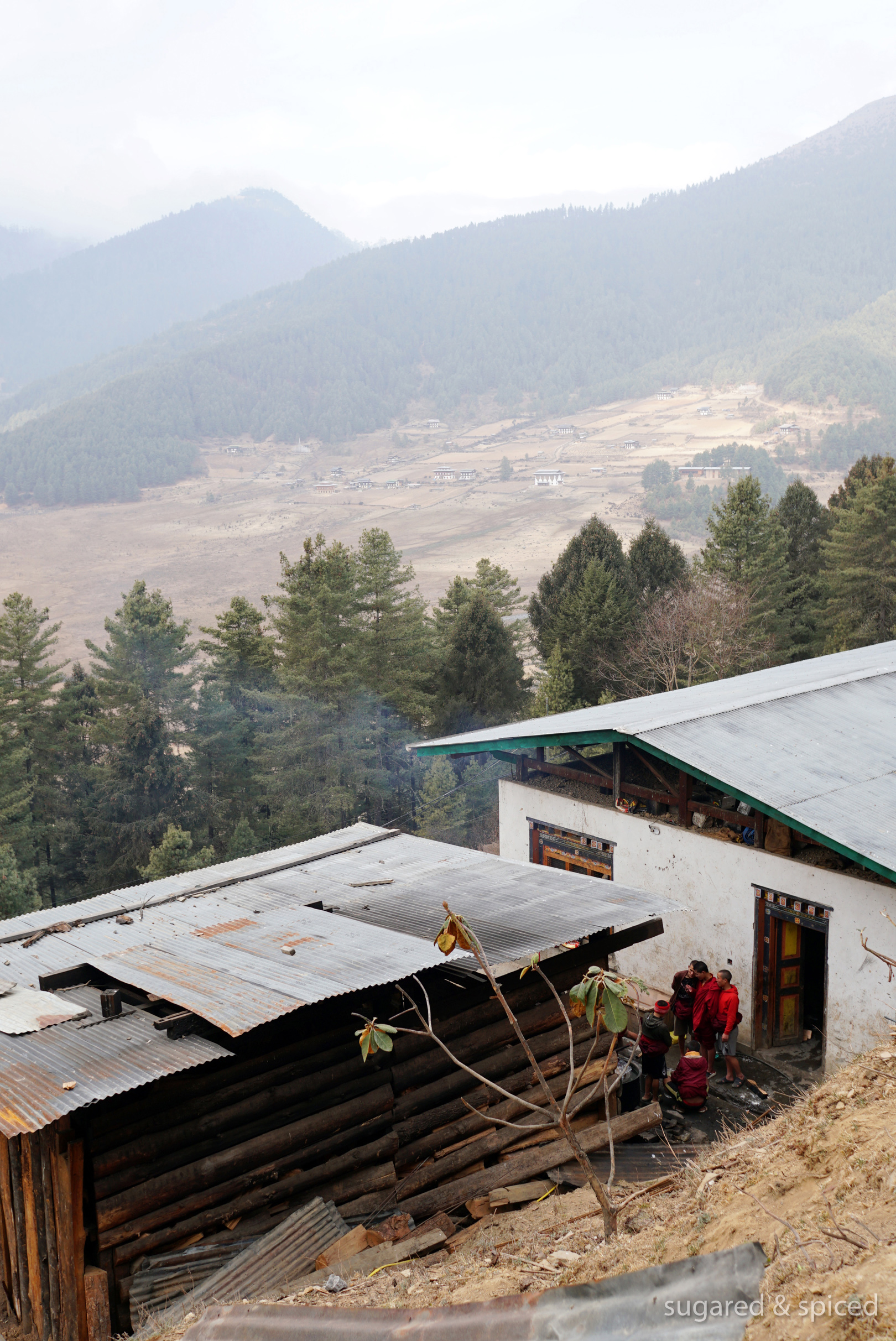
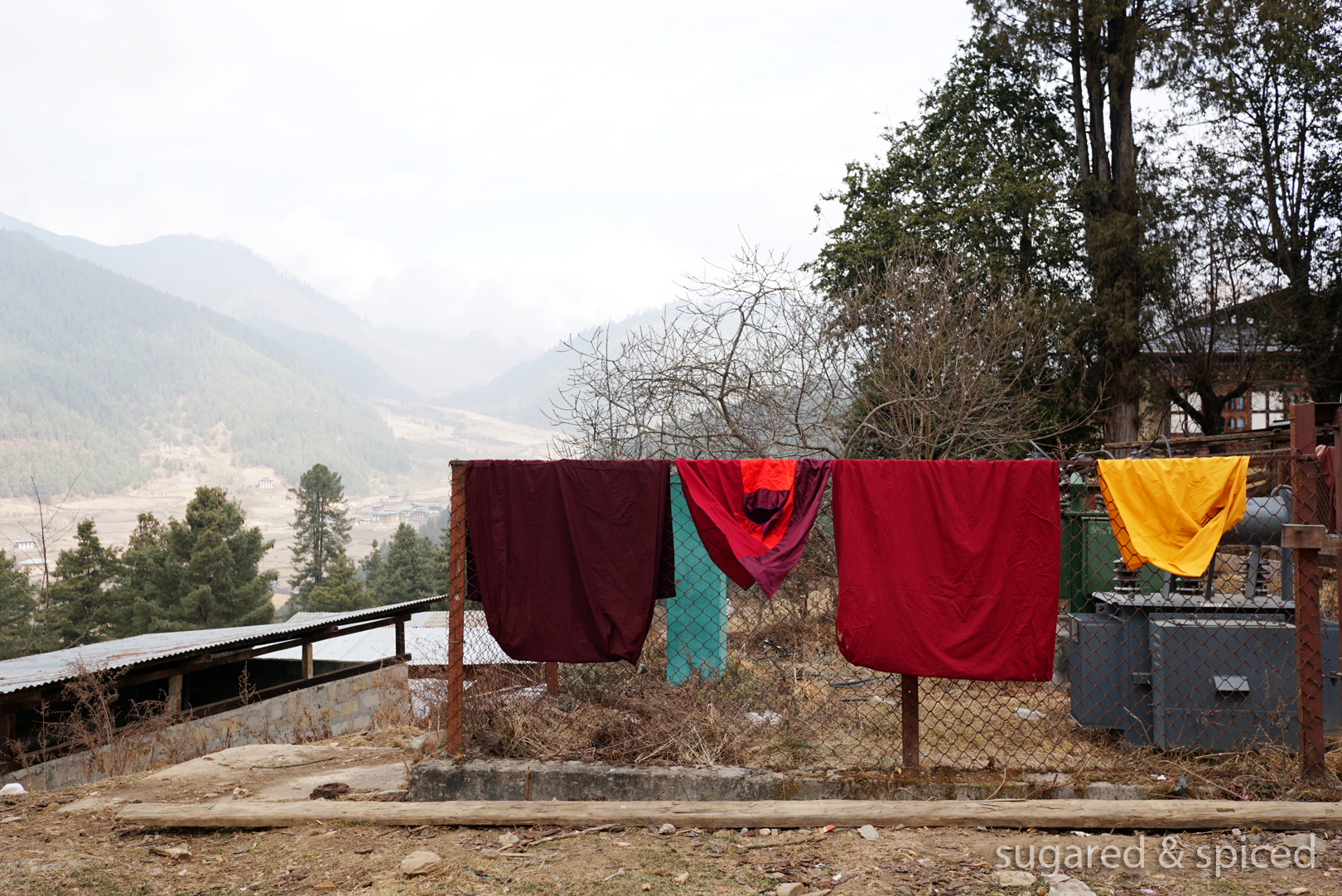
Hello Dawa :)
讓我想起 Amankora 送的書裡面,那隻名為 Dawa 的流浪狗。
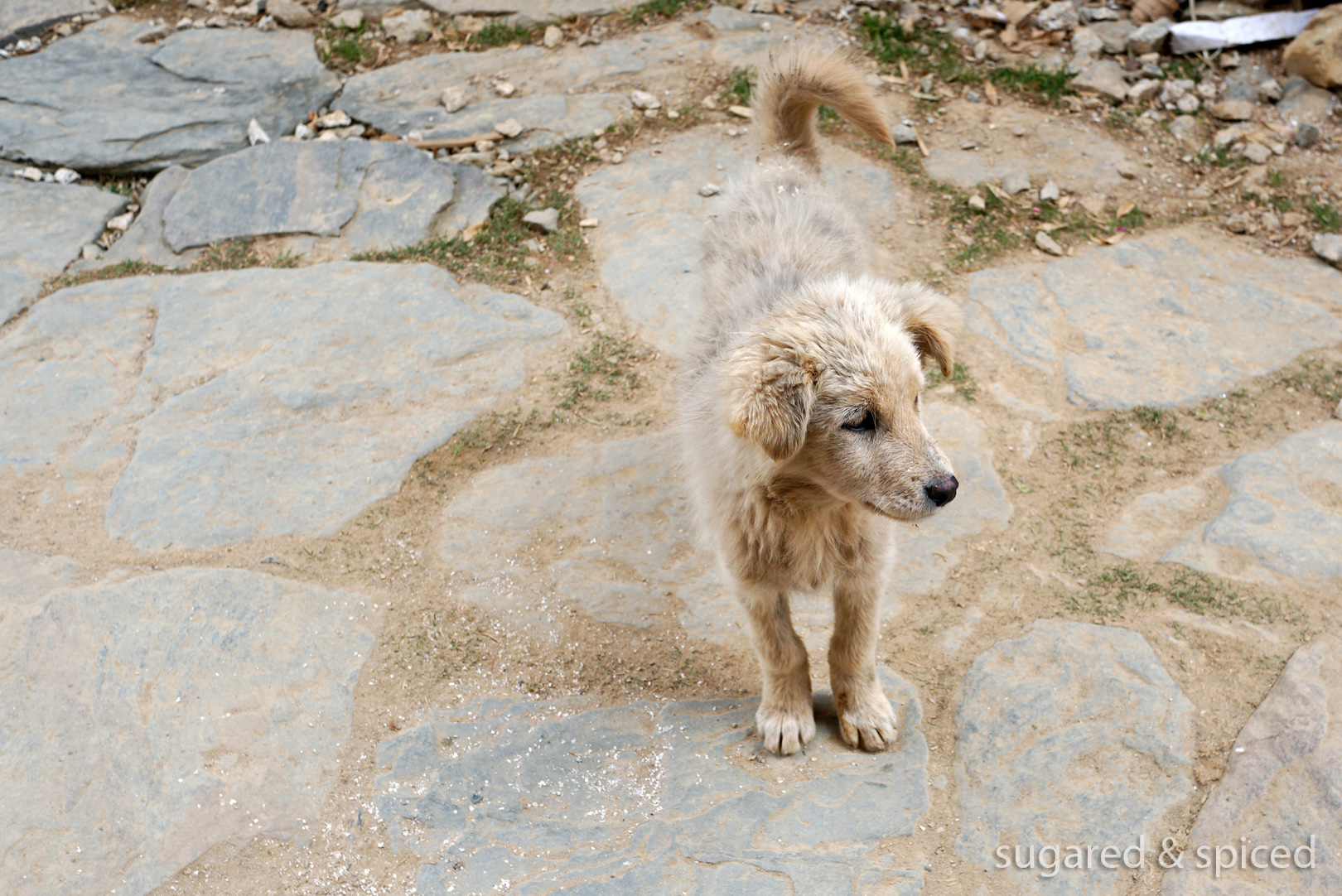
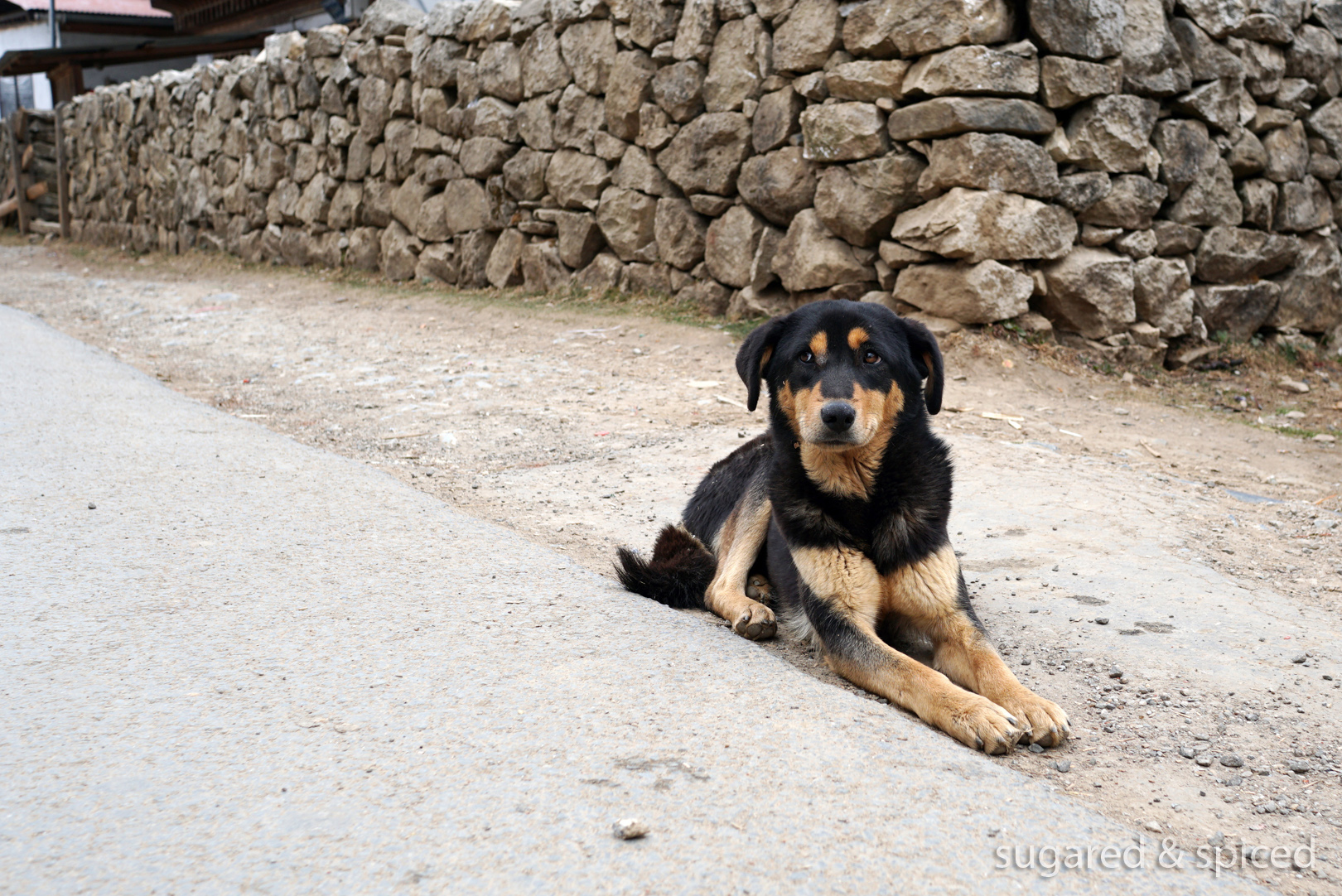
After the visit, we embarked on a hike through pine forests and deciduous shrubs.
從崗提寺一路往下,穿過松林、村莊、草原。
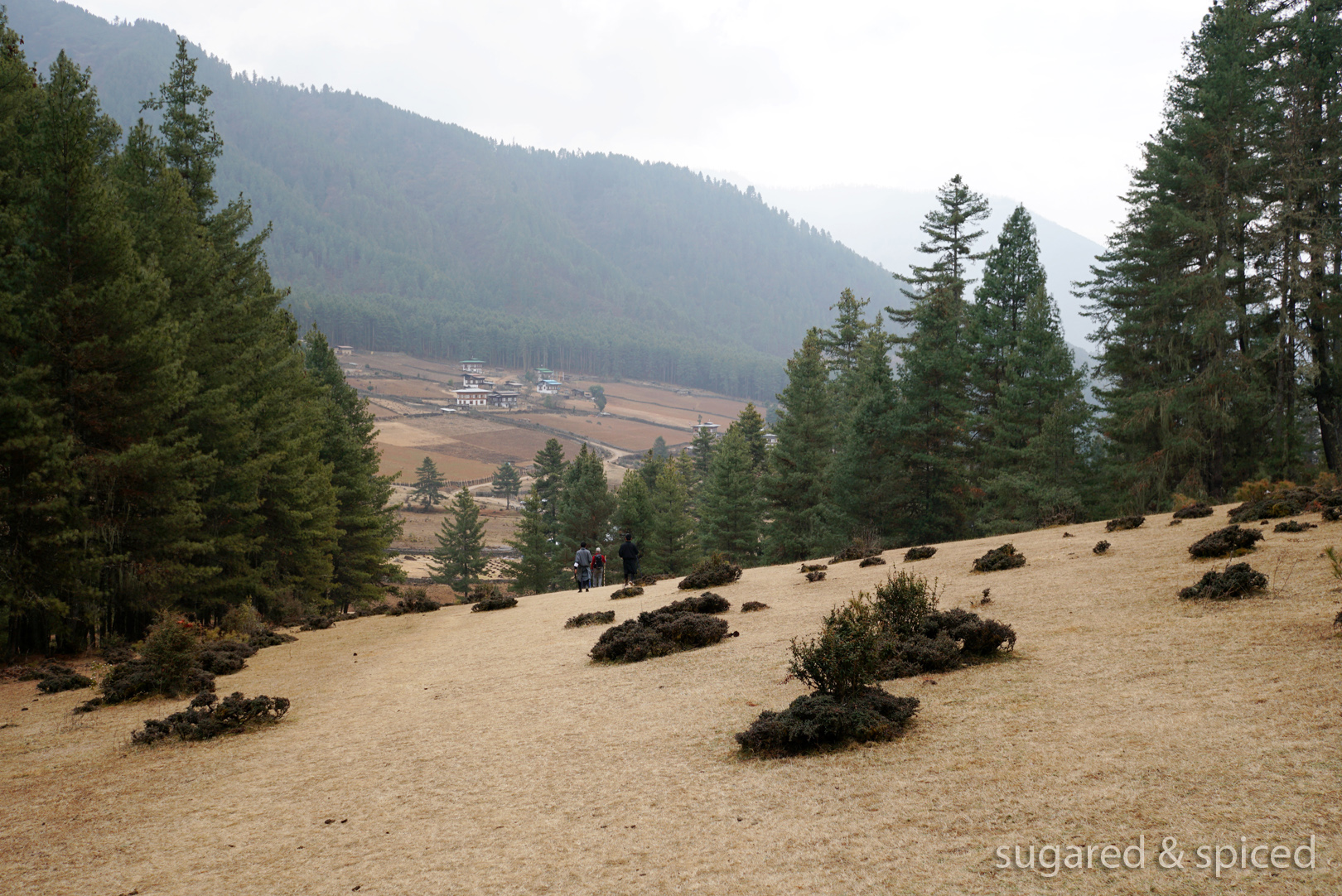
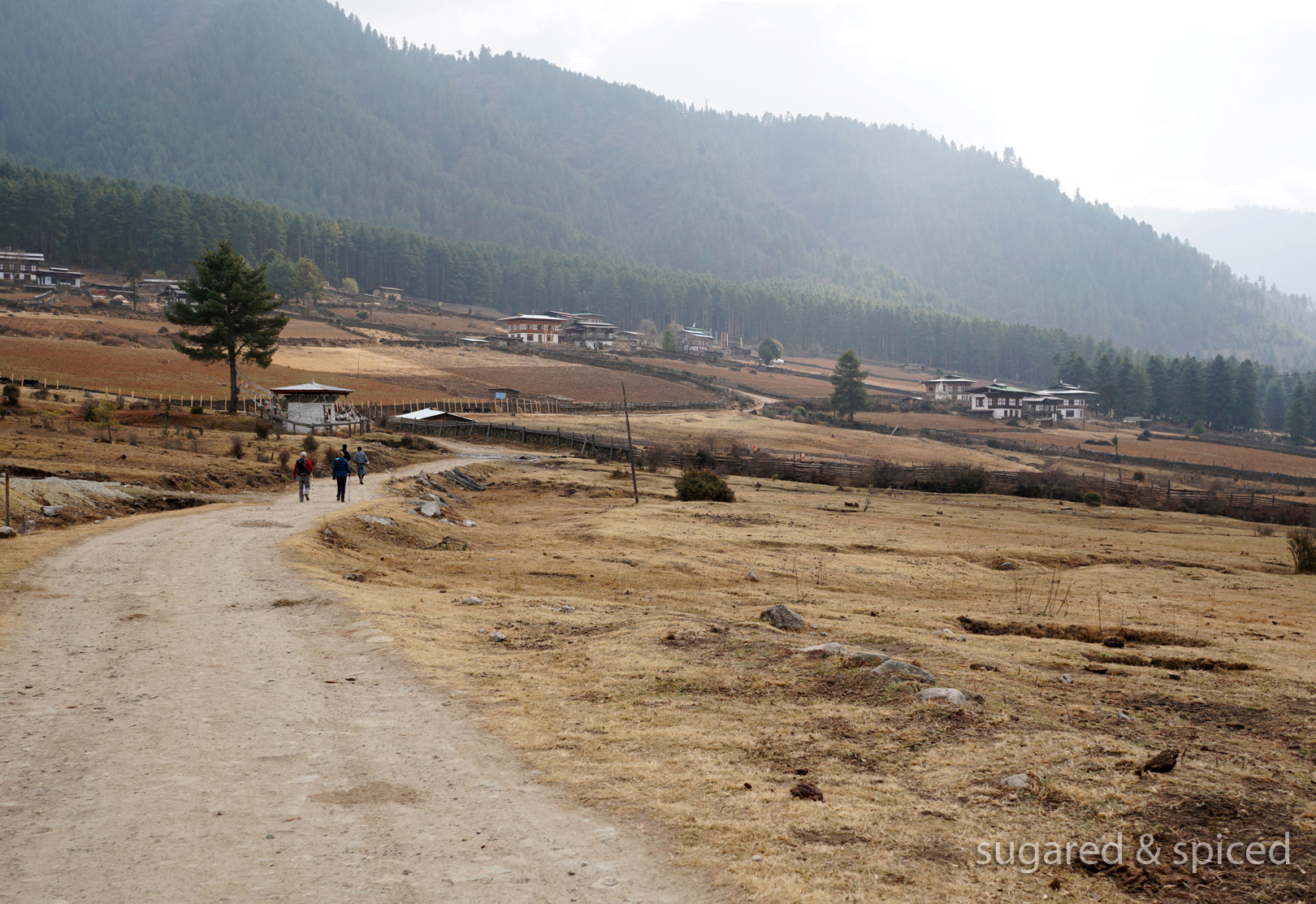
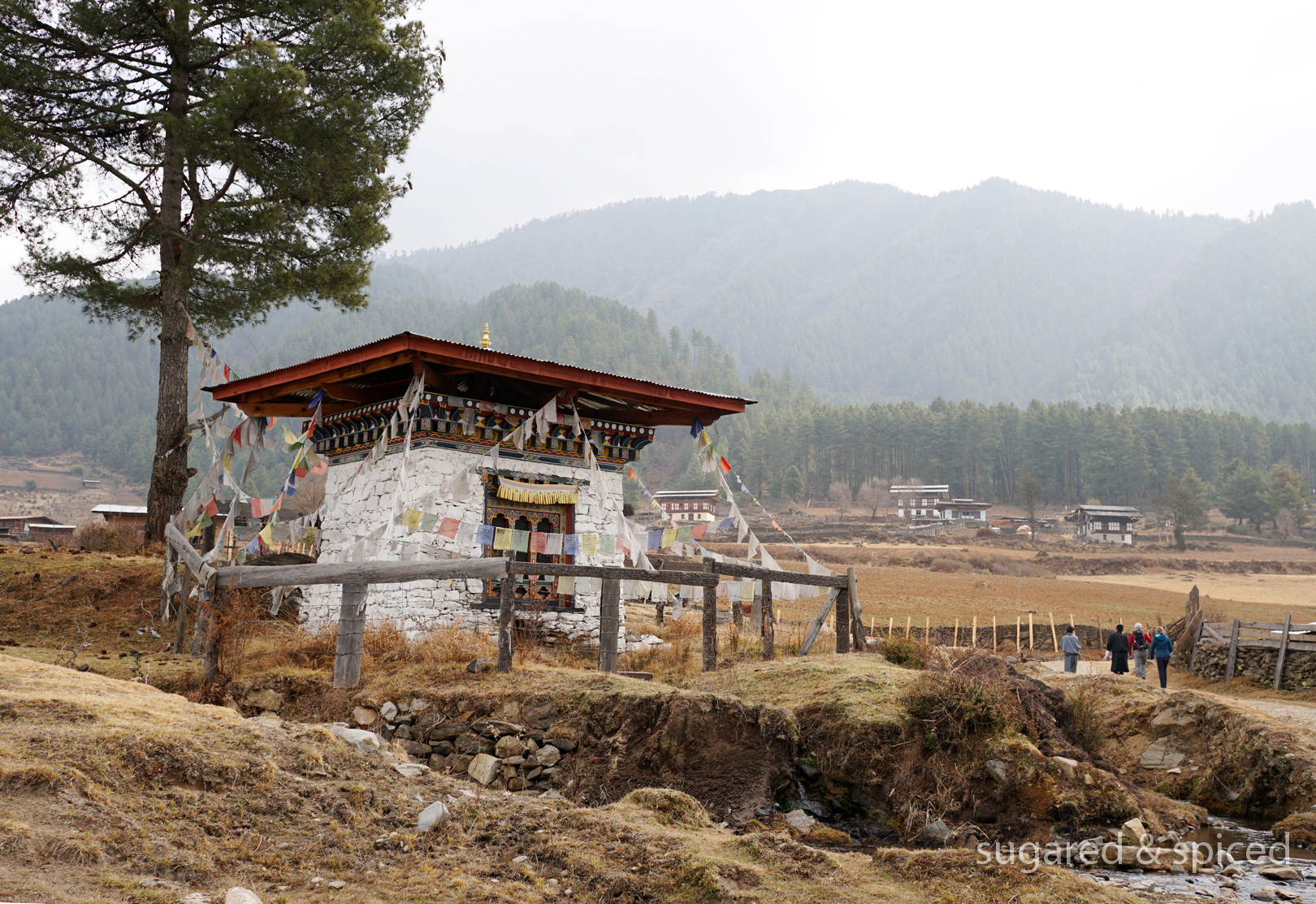
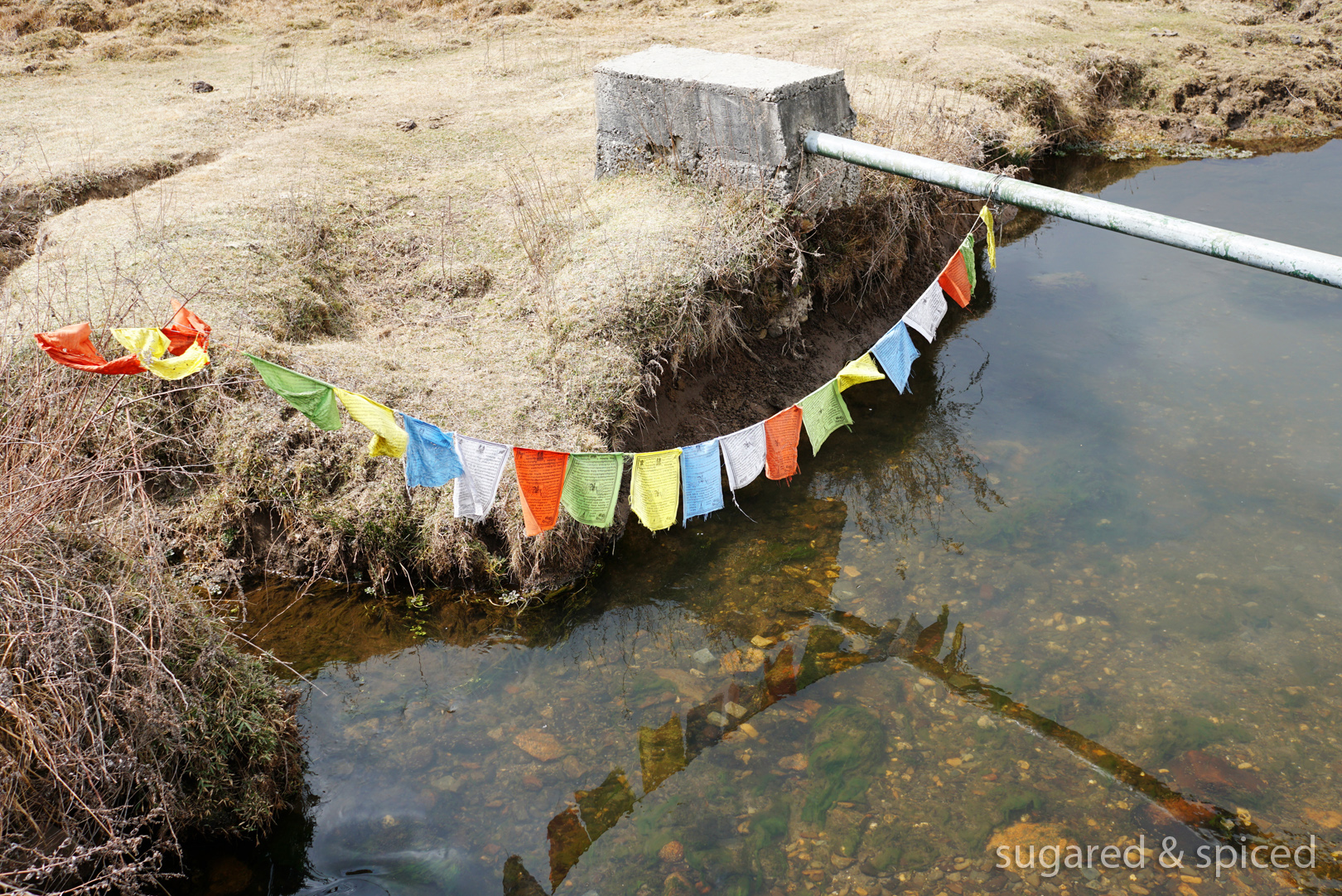
These tsatsa are miniature stupas made of clay and containing a tiny scroll of mantra, each one a prayer, tucked away in holy and sacred niches.
在不丹經常可以看到這些小巧可愛的 “tsatsa”(音譯:擦擦),是小泥佛、小佛像的意思,經常被供奉于神山、聖湖、佛塔內。
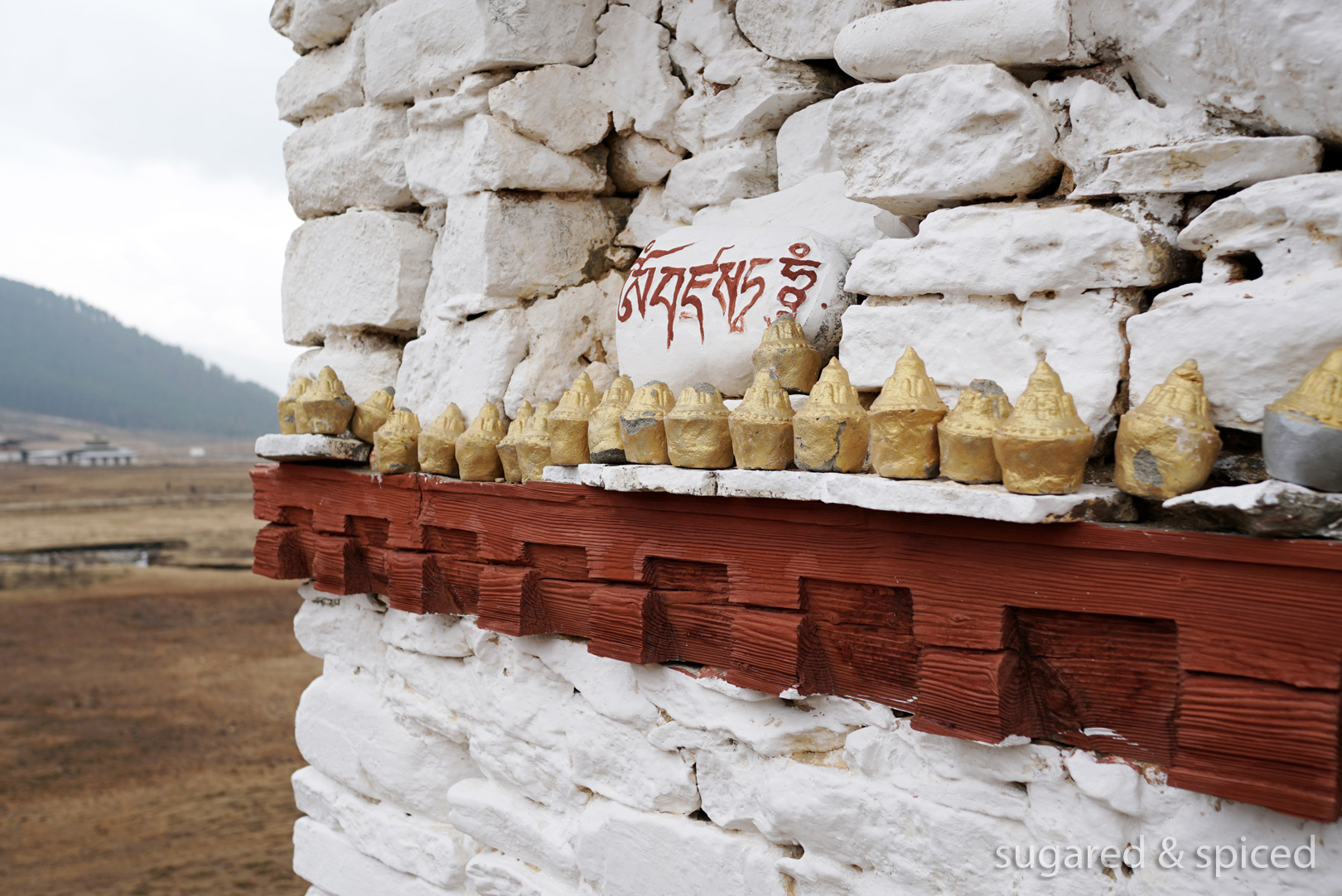
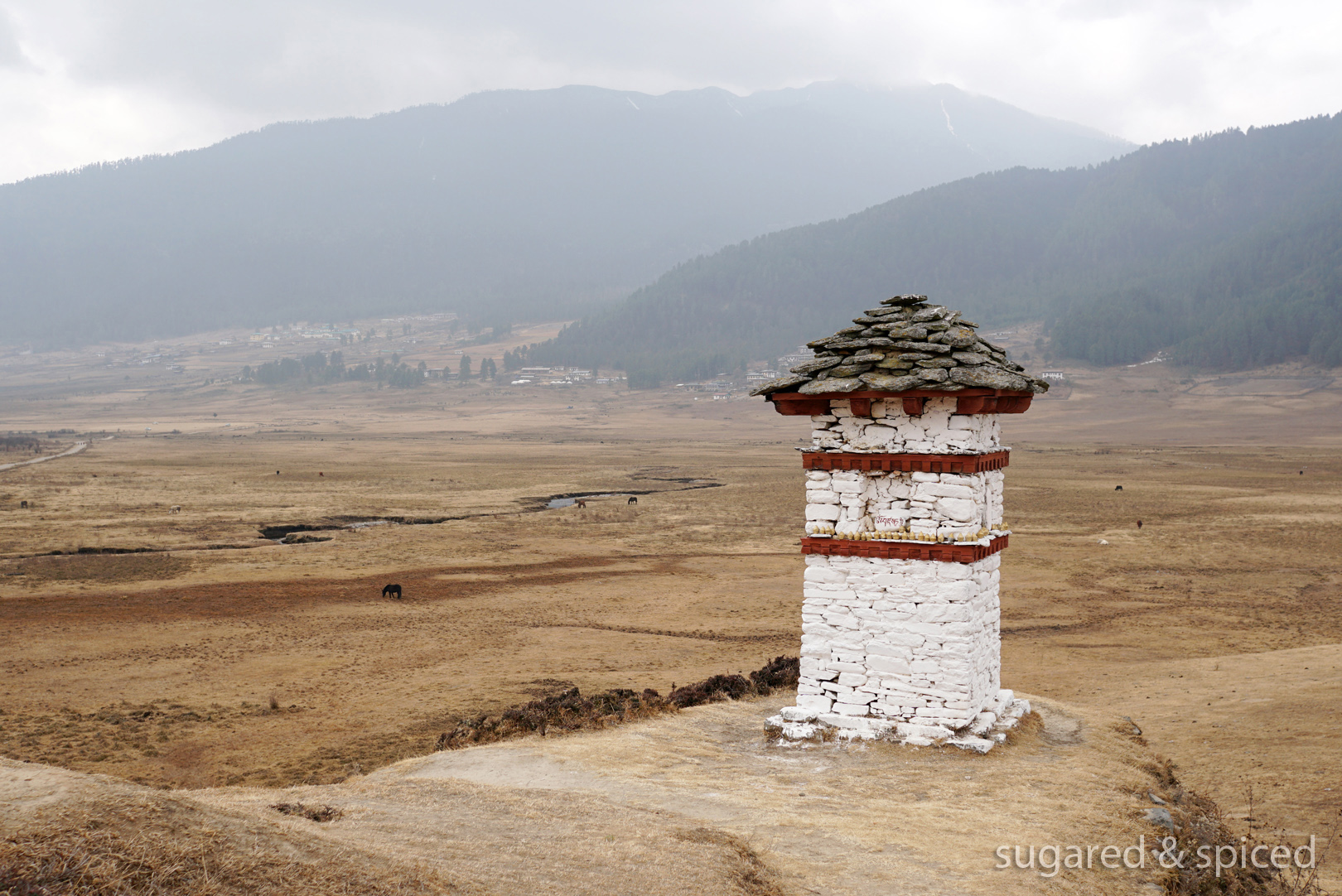
The pine trees here were festooned with lichens known as “old man’s beard” (the same kind that was used to tie our dance programs in Thimphu), signaling the air is pollution-free. It was calming just seeing them sway languidly in the breeze.
沿途的松樹上掛滿了一種被稱為 “老人鬍子” 的地衣,代表這里的空氣非常乾凈,未受污染。老人鬍子隨風飄逸,淡淡地、慢慢地,似乎世界上沒什麼要著急的事情。
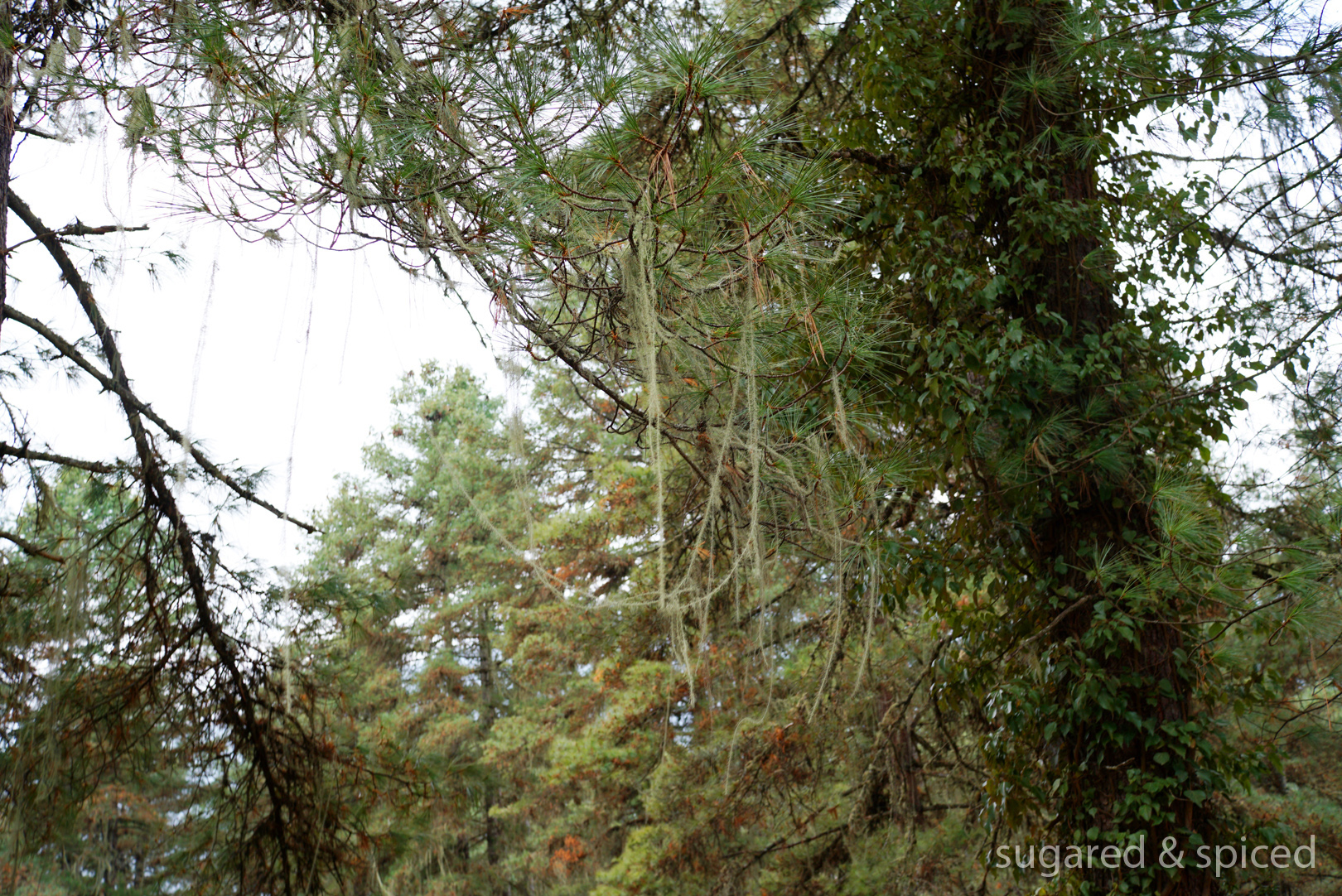
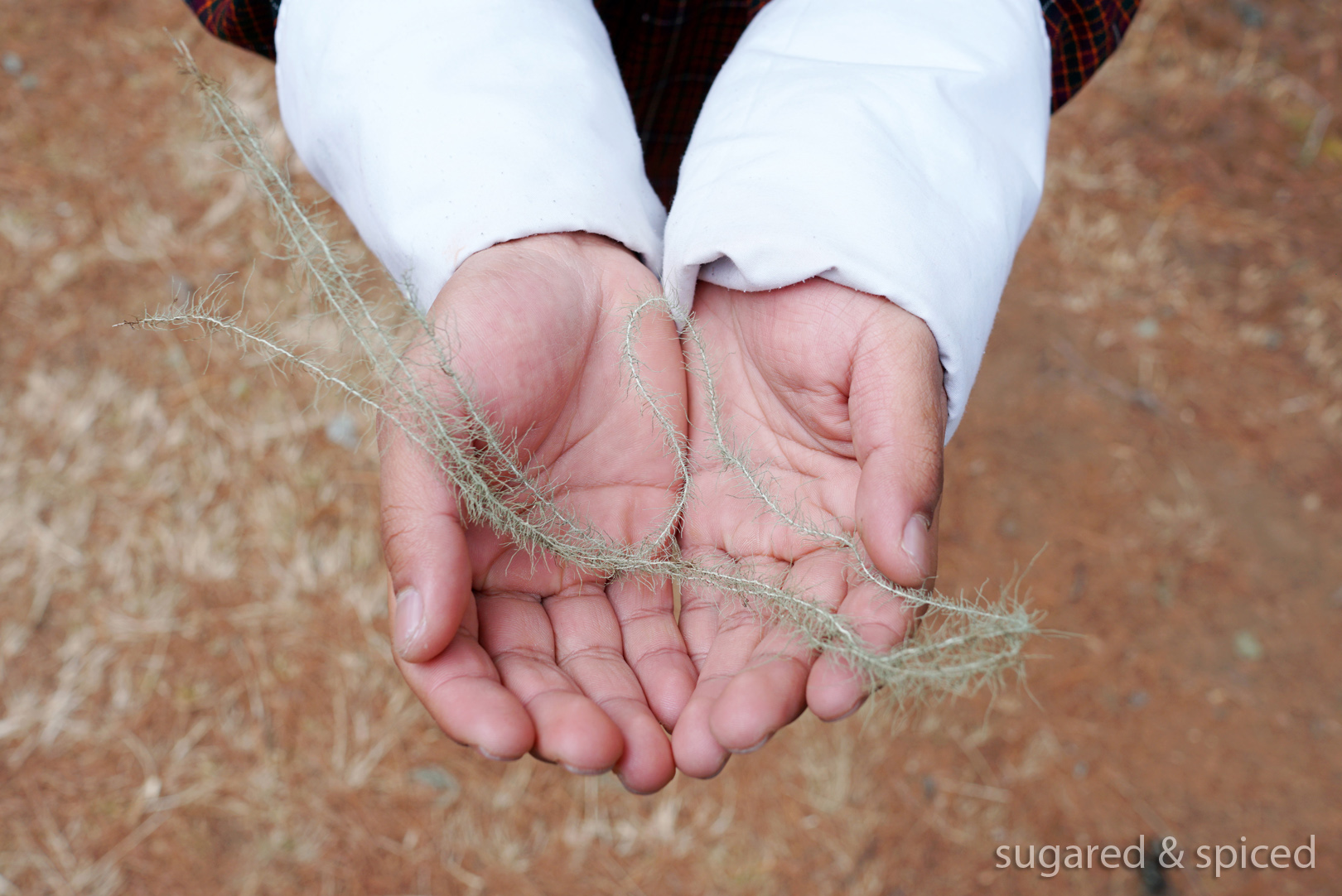
Dawa, illustrating the meaning of “old man’s beard”.
Dawa 示範 “老人鬍子” 的正確配戴方式。
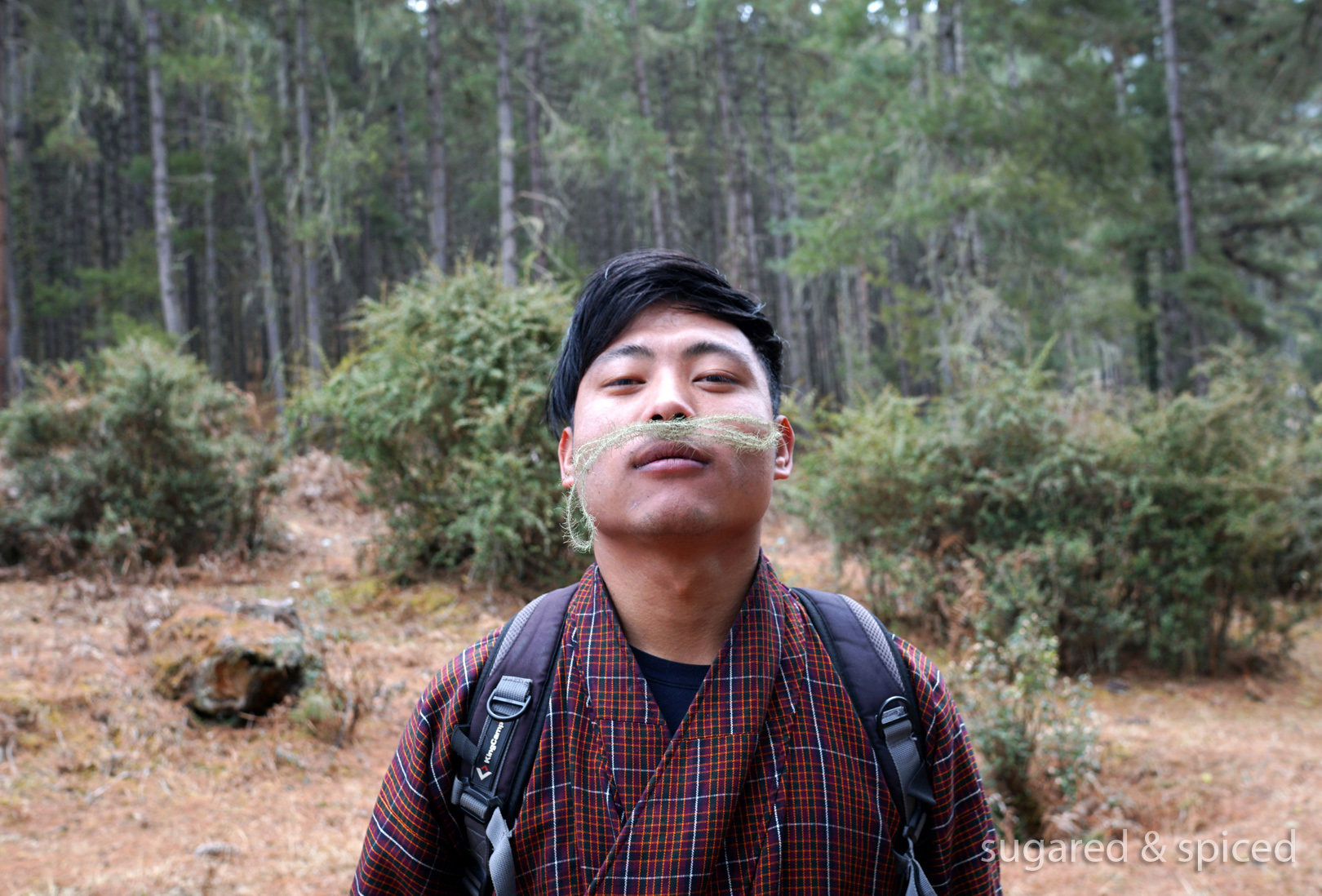
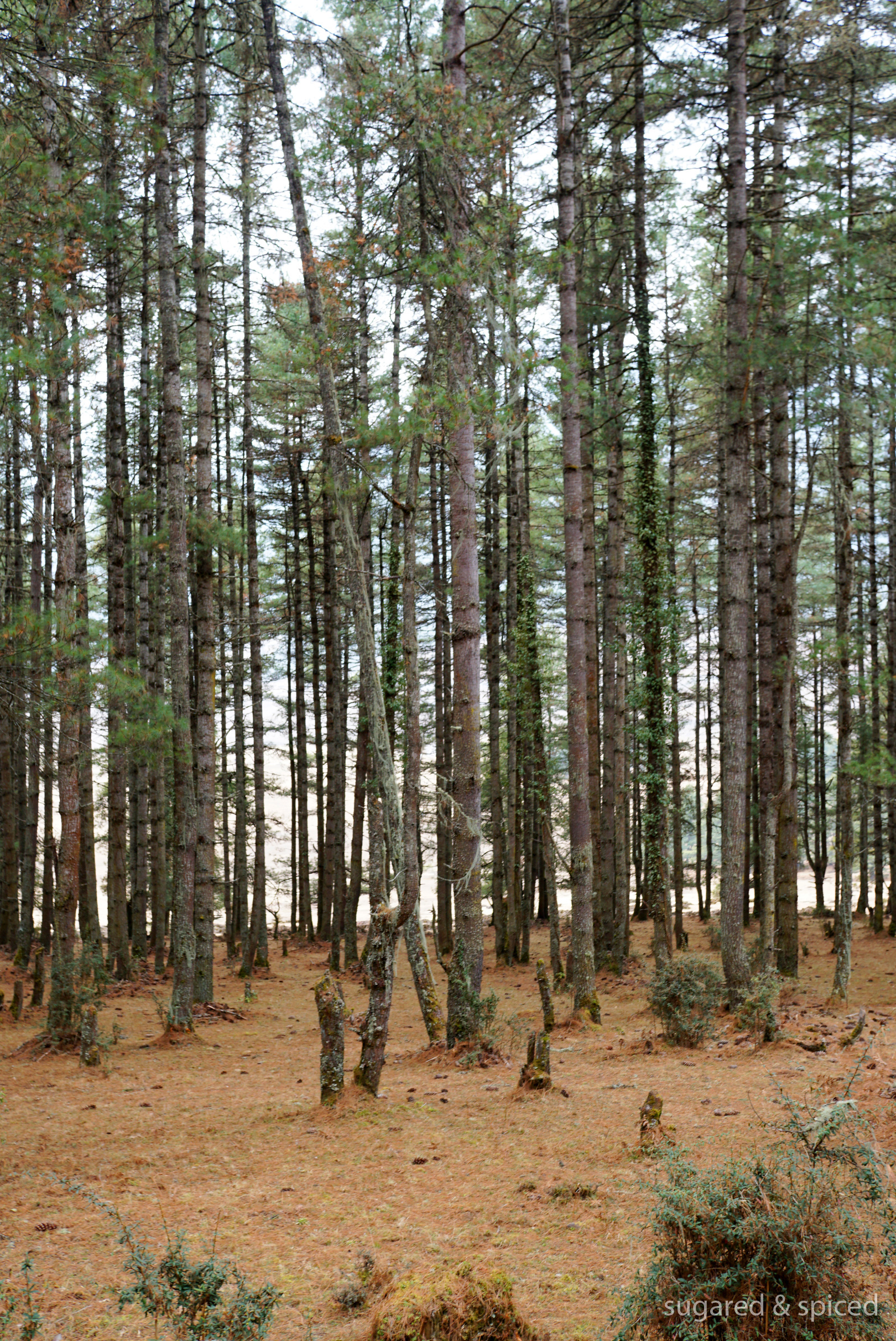
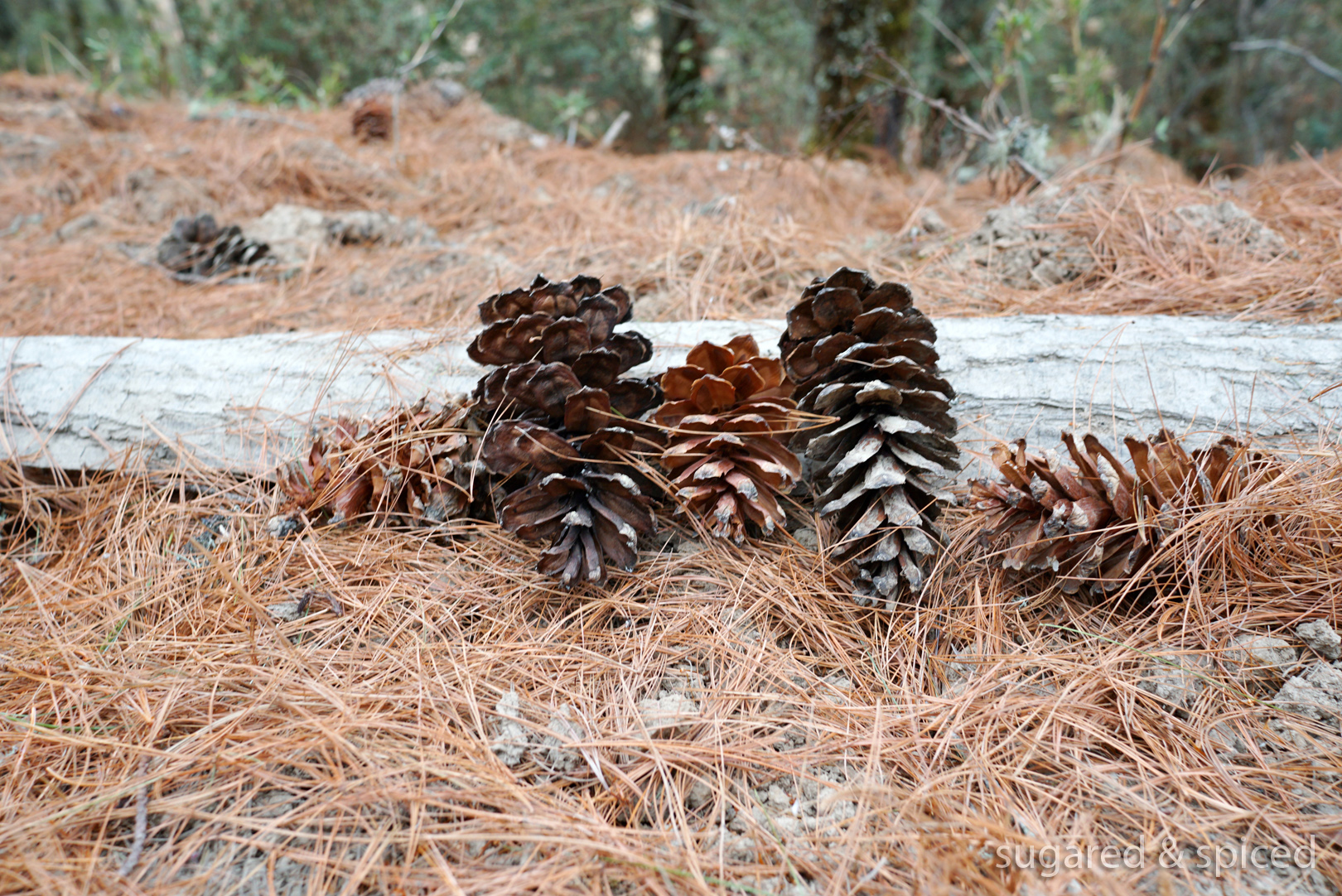
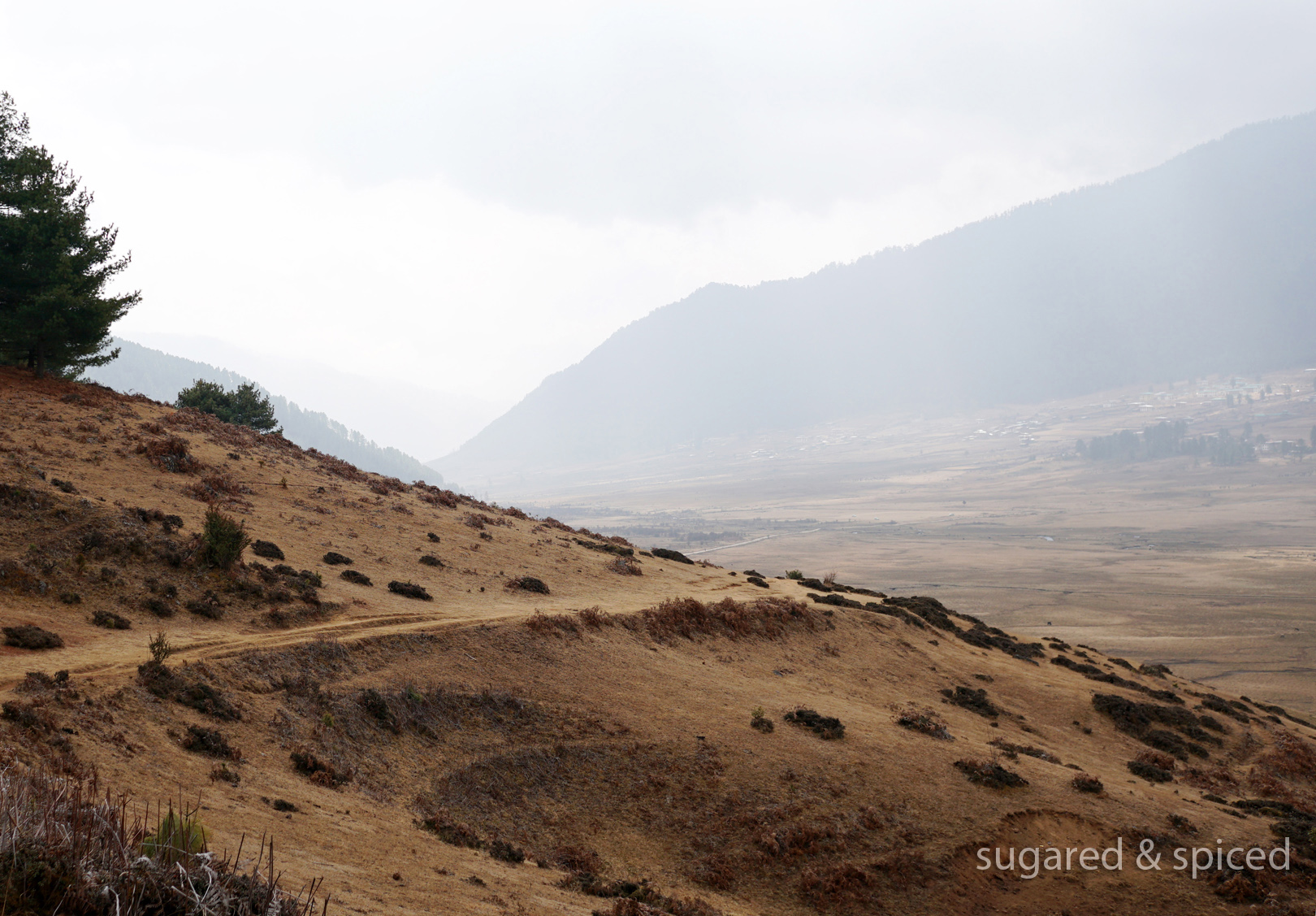
Along the trail, we descended down to the rolling plains populated by roosting black-neck cranes. These endangered birds are believed by the locals to be highly spiritual, as they are seen to circle Gangtey Monastery three times, as if practicing circumambulation, both on their arrival to Phobjikha Valley at the beginning of winter and prior to their departure for Tibet in early Spring. The cranes are of great significance to the villagers, and their arrival each year is celebrated with a major festival.
健行一個多小時,我們來到 Phobjikha Valley(富吉卡山谷)的谷底。這個美麗的山谷每年冬天都會迎來三百多隻從青藏高原南遷來避寒的黑頸鶴,據說這群鳥兒每次抵達和離開以前都會在崗提寺上方盤旋三圈,相當有靈性。當地人非常喜愛黑頸鶴,每年都要舉辦盛大的慶典來歡迎它們的到來。
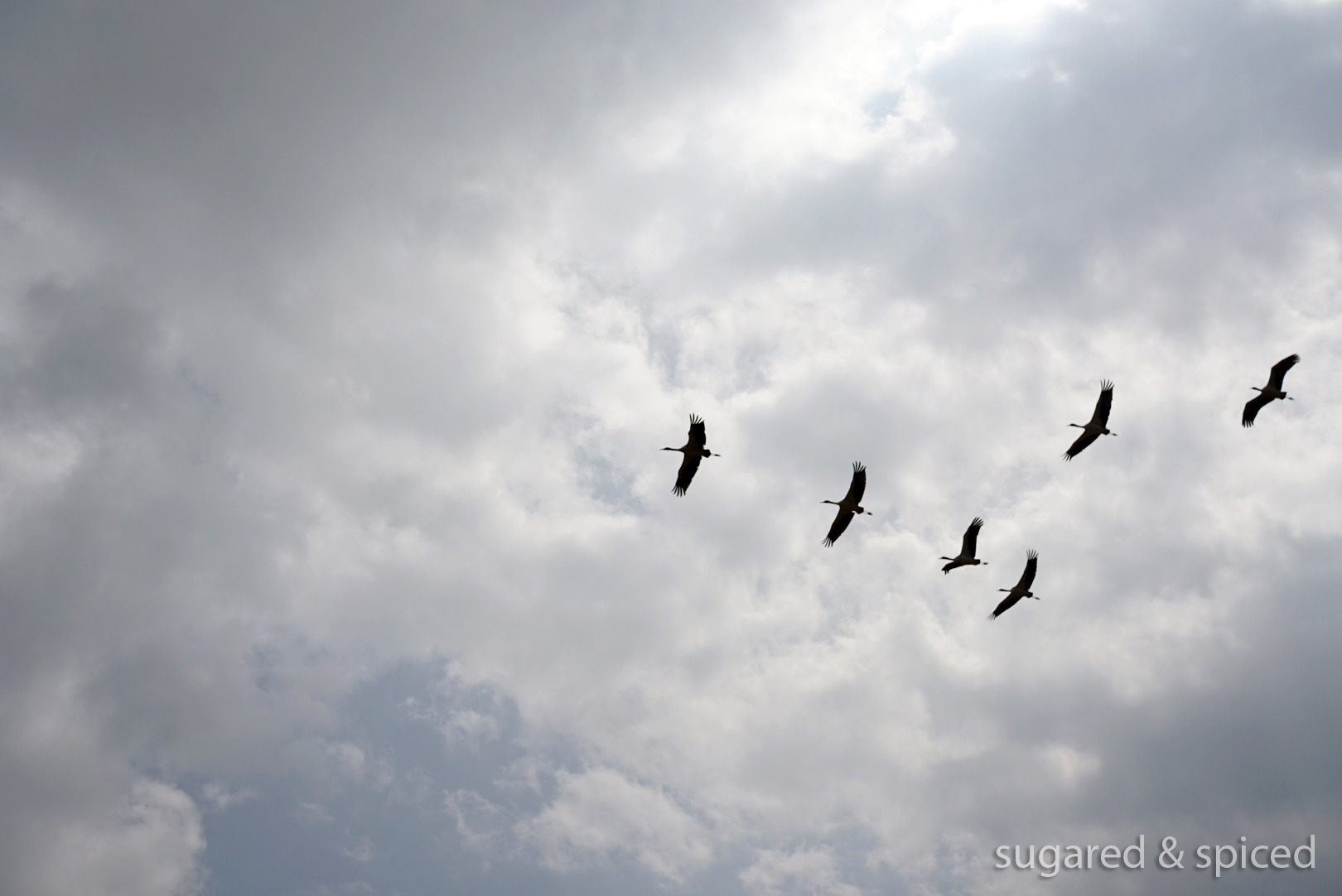
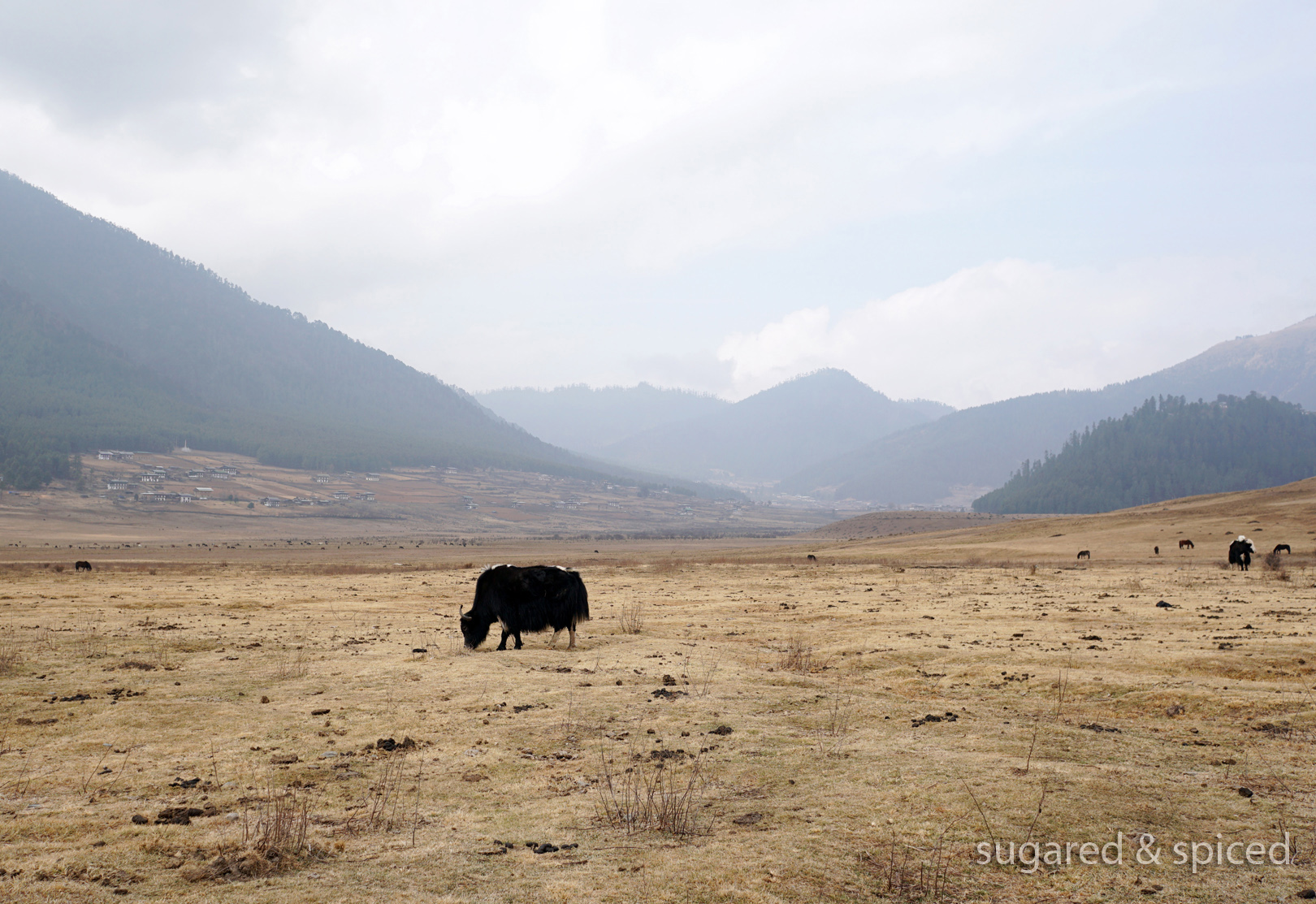
What I found truly remarkable is that, in order to provide a most natural habitat for the black-neck cranes, the villagers had chosen to live without electricity so that no overhead wire could potentially harm the birds. The government has since then supplied solar panels as well as installed power cables underground to provide electricity to the village. This cost three times more than the regular overhead wires, but is well worth it in the perspective of the Bhutanese people. We could all learn a lot from them.
令人非常感動的是,為了讓黑頸鶴能夠自由飛翔,村民集體決定不設電線桿,以免電線危害到牠們的安全。政府於是為村民提供太陽能電池板,並多花三倍的經費為村子安裝地下纜線。村民和政府對自然的尊重,太值得我們學習。
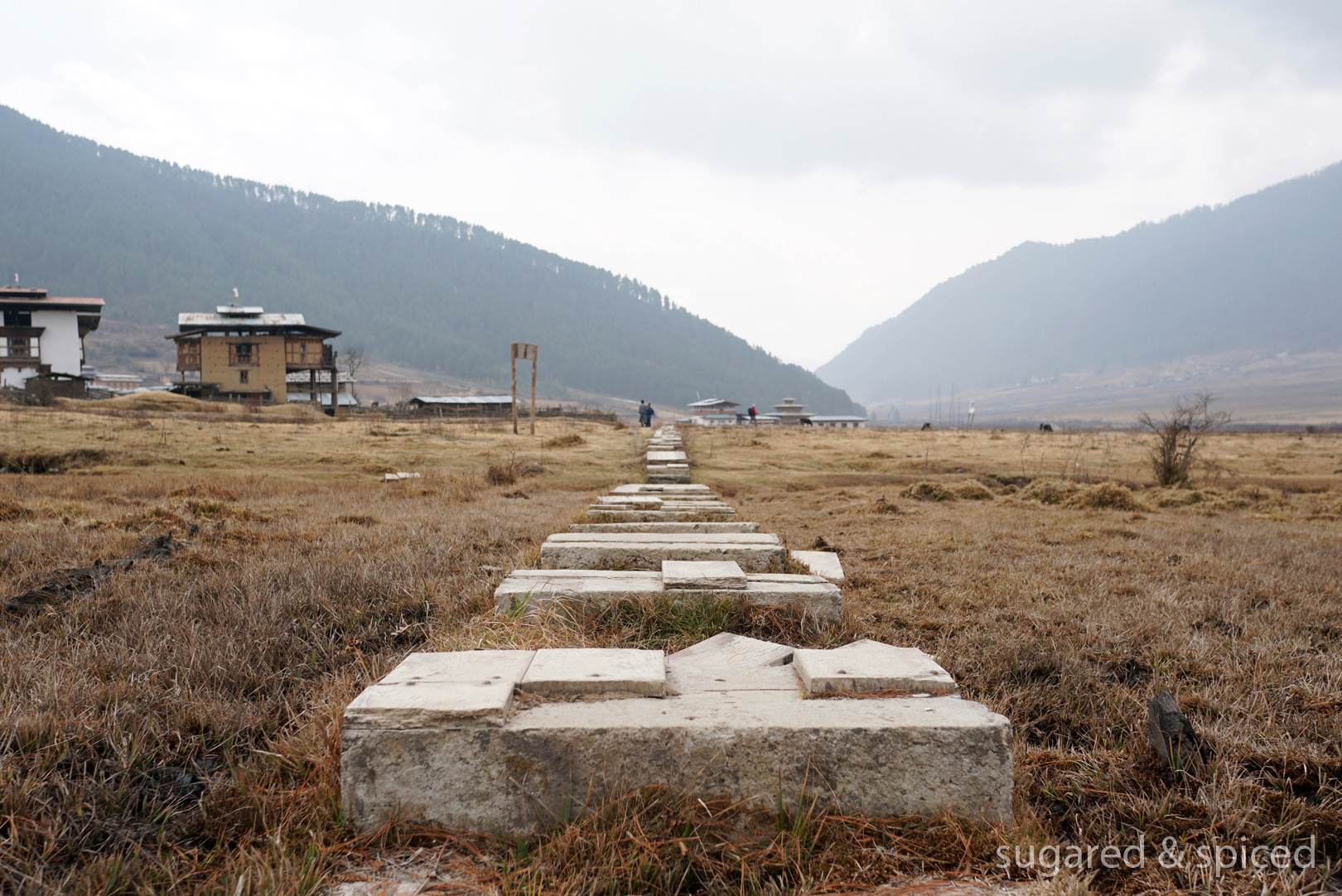
Just as my legs were starting to fail me, our ever-so-dependent driver, Kinley, appeared in sight with a set up of picnic blanket, wool towels, snacks, and warm honey ginger tea. Godsend, truly!
正開始覺得腿酸,草原上突然出現了舖好的野餐墊、毛毯、零嘴、和熱蜂蜜薑茶,原來 Kinley 早已在這里為我們佈置好歇腳處。
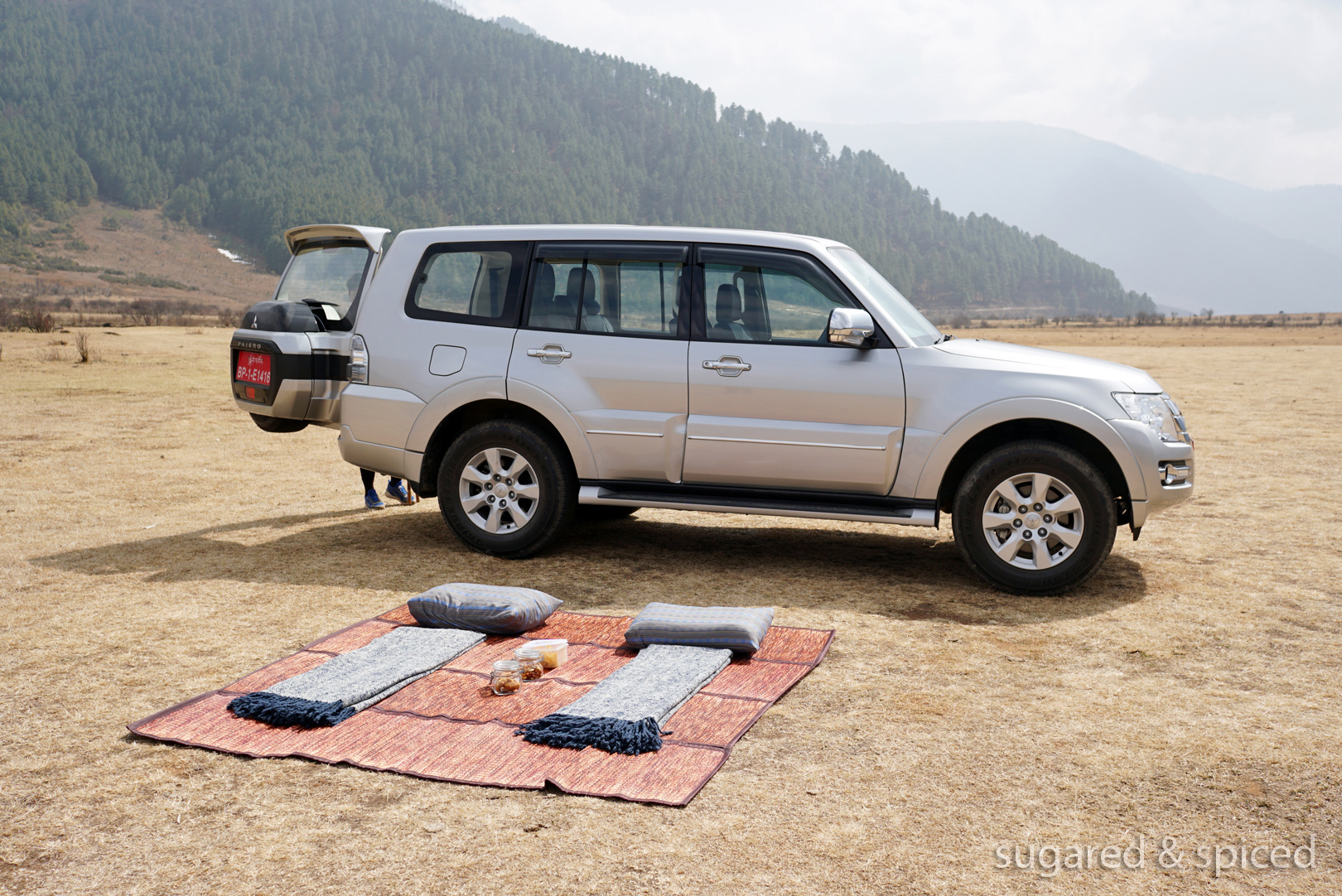
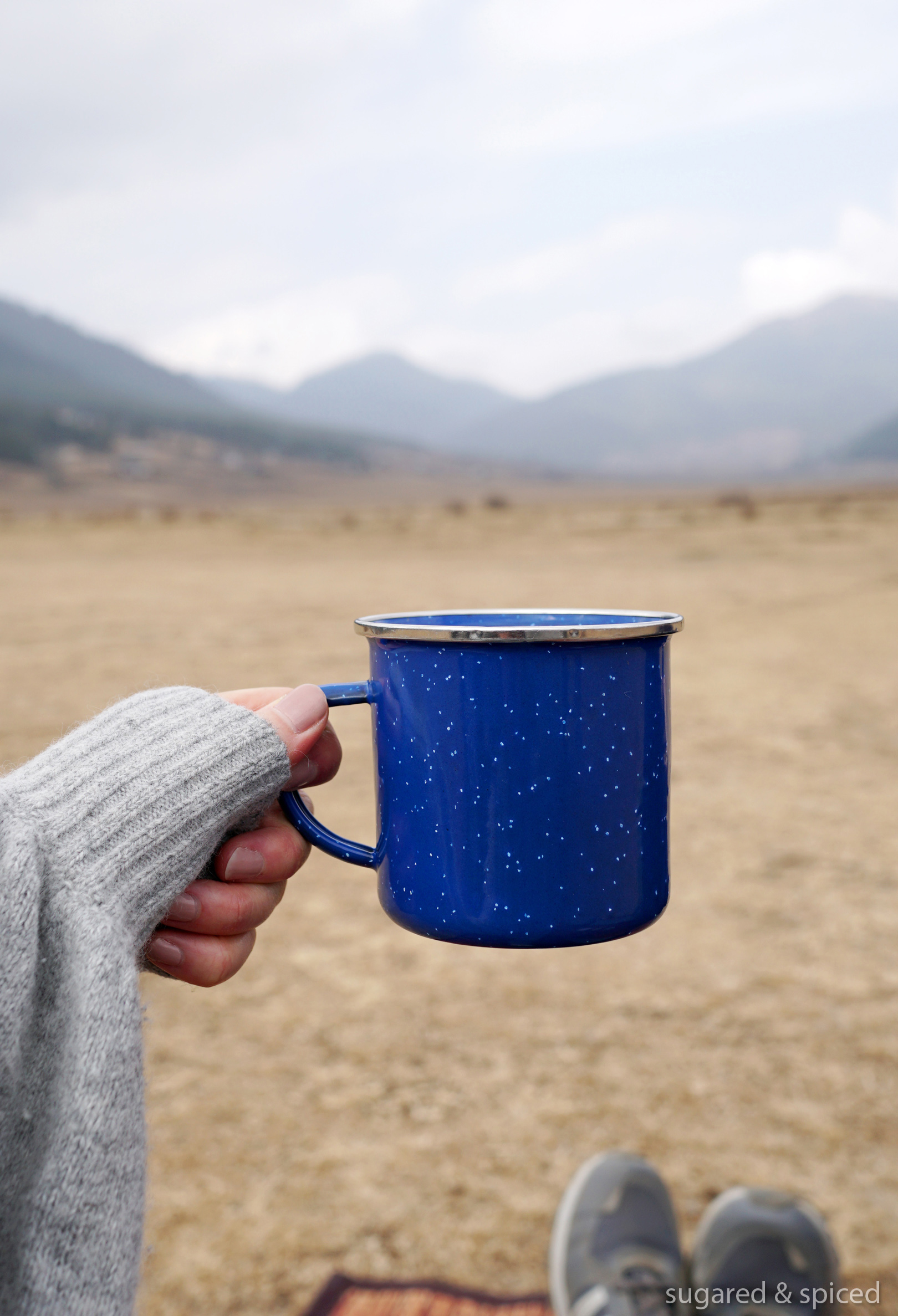
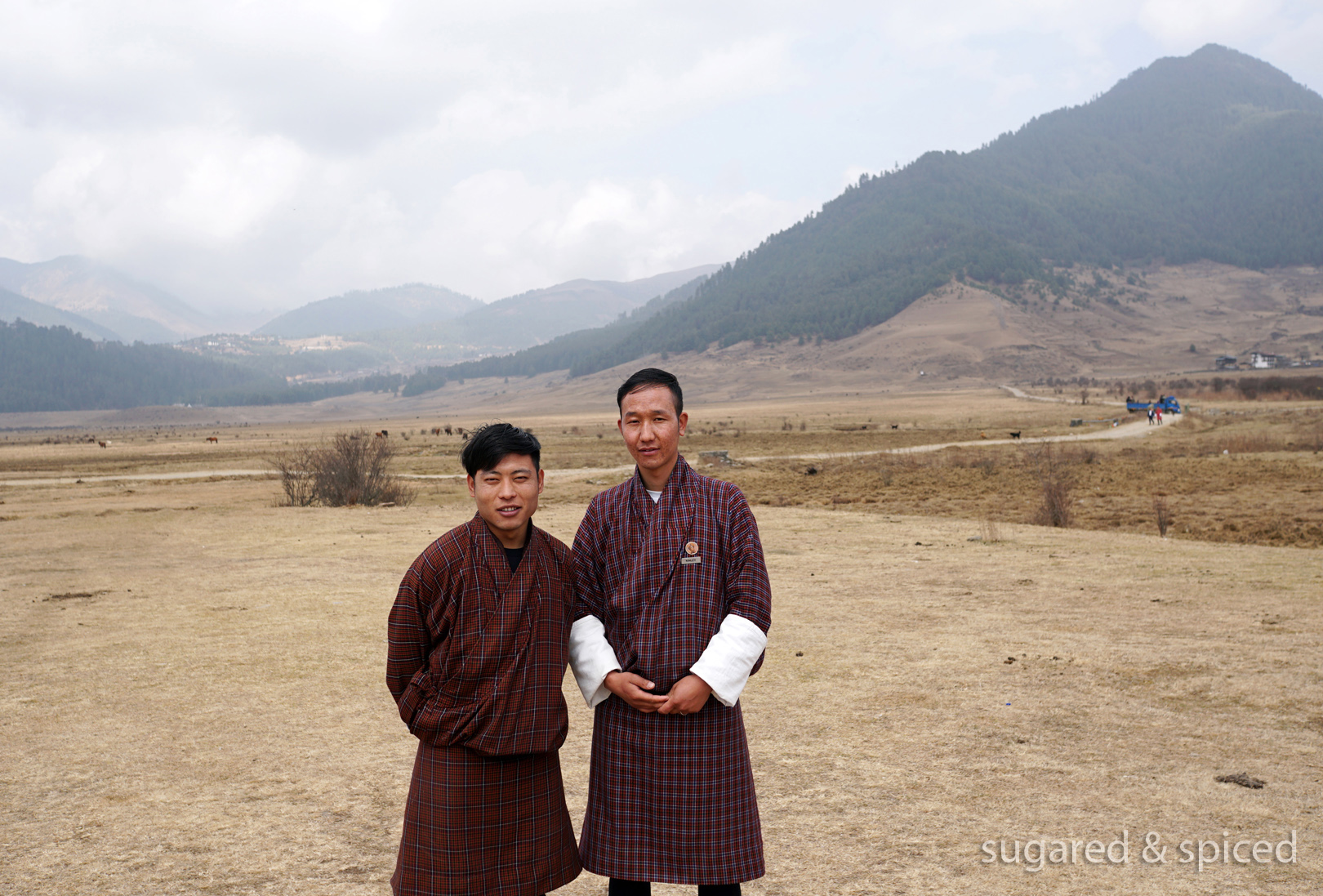
Back at the lodge, a smiling staff greeted us with hot towels fragranced with lemon grass, and a very warm “welcome home.”
回到住所時,一如既往地有服務人員拿著熱毛巾前來迎接,送上暖暖的一句 “歡迎回家”。
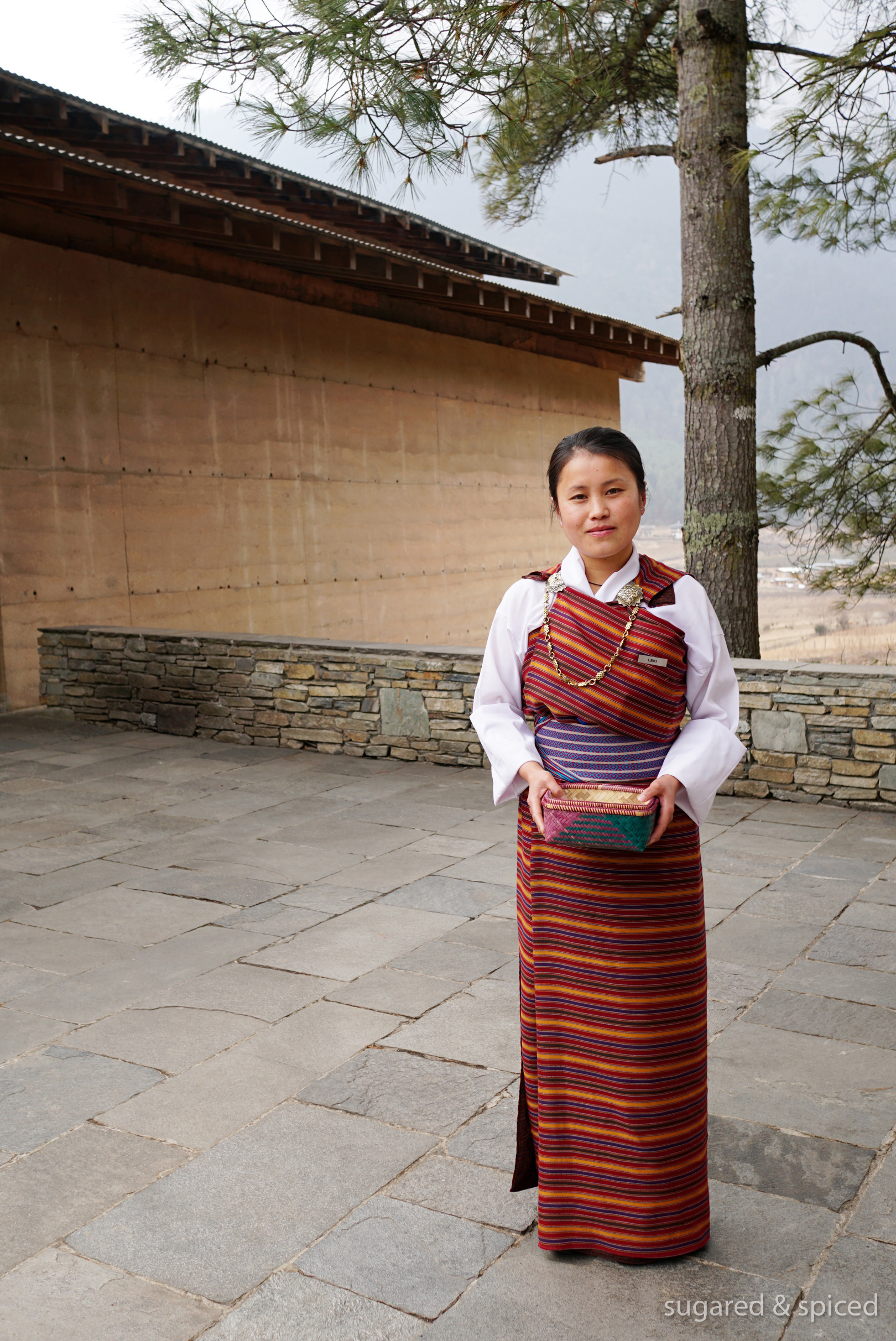
And magically, freshly baked cookies and honey ginger tea materialized in our suite.
新鮮出爐的餅乾及熱薑茶,魔法般地出現在我們房間裡。
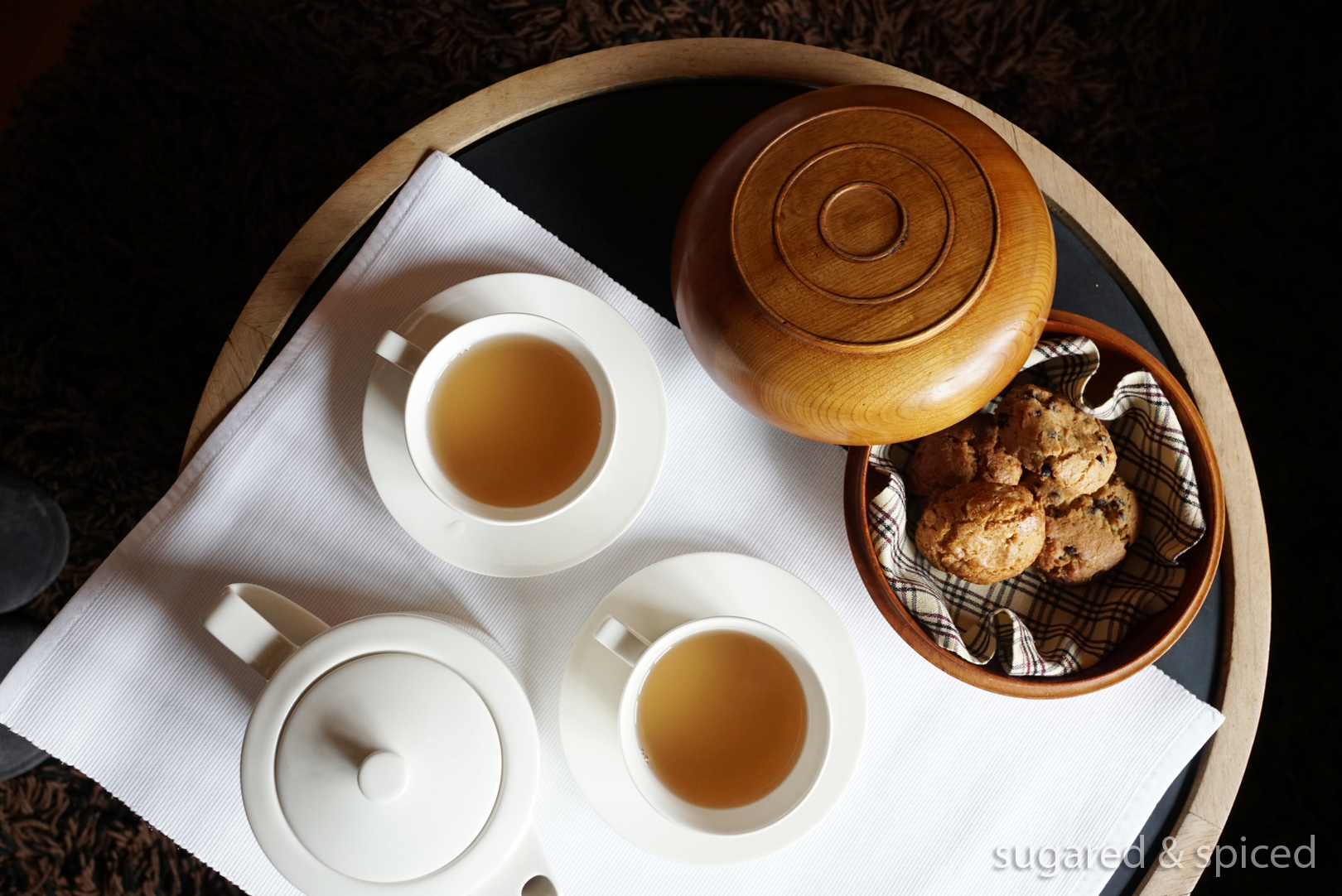
Famished from the morning hike, we dove right into lunch. First, farmer’s chicken broth with roasted chicken wings, carrot, cabbage, potato, spinach, coriander and spring onions. Basically, it’s chicken soup for the soul.
一放鬆下來才發現自己餓扁了,馬上進入午餐時間。先來一碗熱騰騰的雞湯,裡面除了有紅蘿蔔、高麗菜、馬鈴薯之外,居然還有兩隻烤雞翅,第一次看到這樣的擺盤手法。
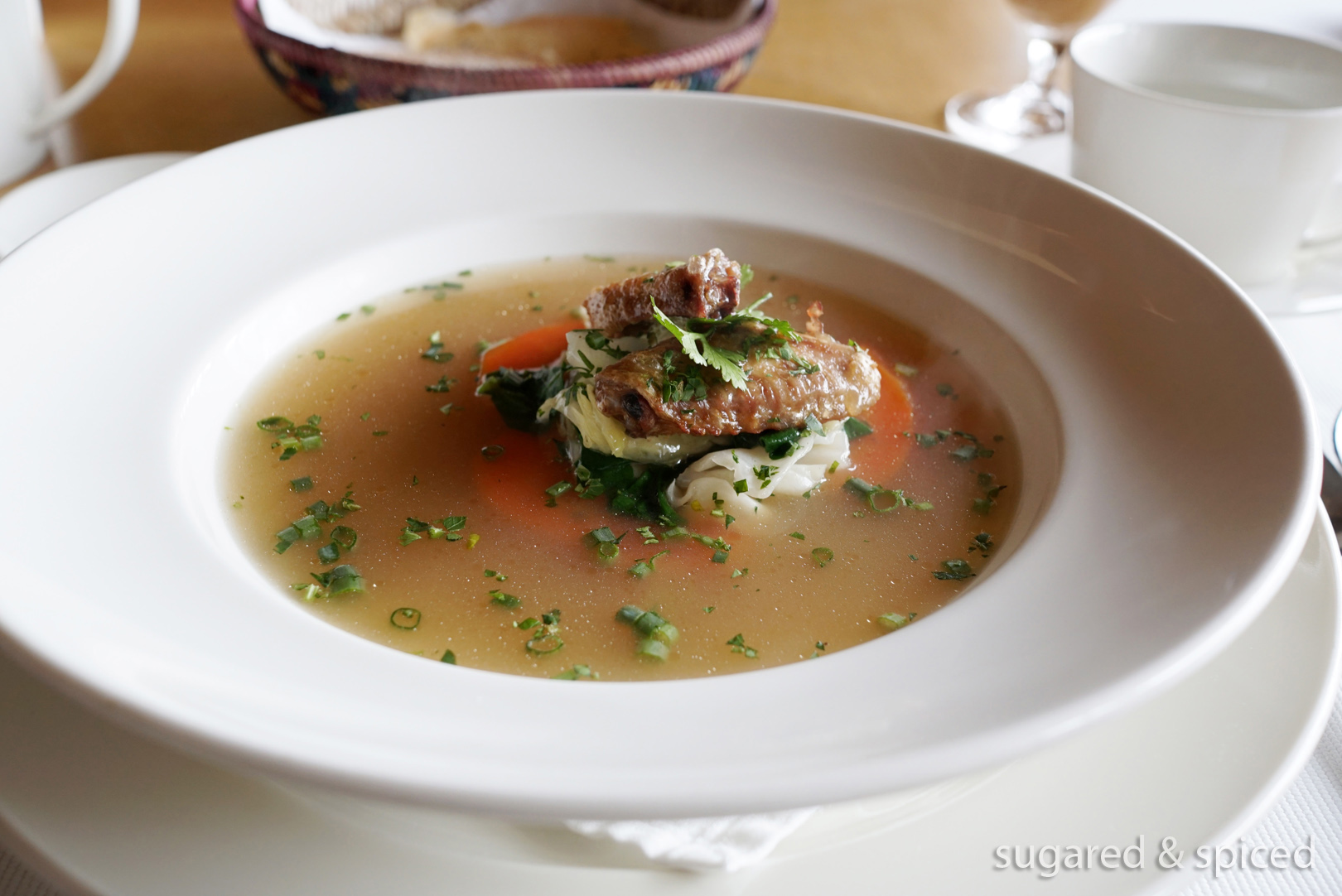
Then, a hearty serving of yak chili con carne with stewed yak, tomatoes, kidney beans, sour cream, coriander, Emmental cheese, and the best chili corn bread. Remarkably satisfying!
接著,是用氂牛肉做成的 chili con carne,鑄鐵鍋裡面盛著豐盛的燉煮氂牛、腰豆、番茄、艾曼塔起司…旁邊還附了一塊烤得酥脆的玉米麵包。一碗下肚,大滿足!
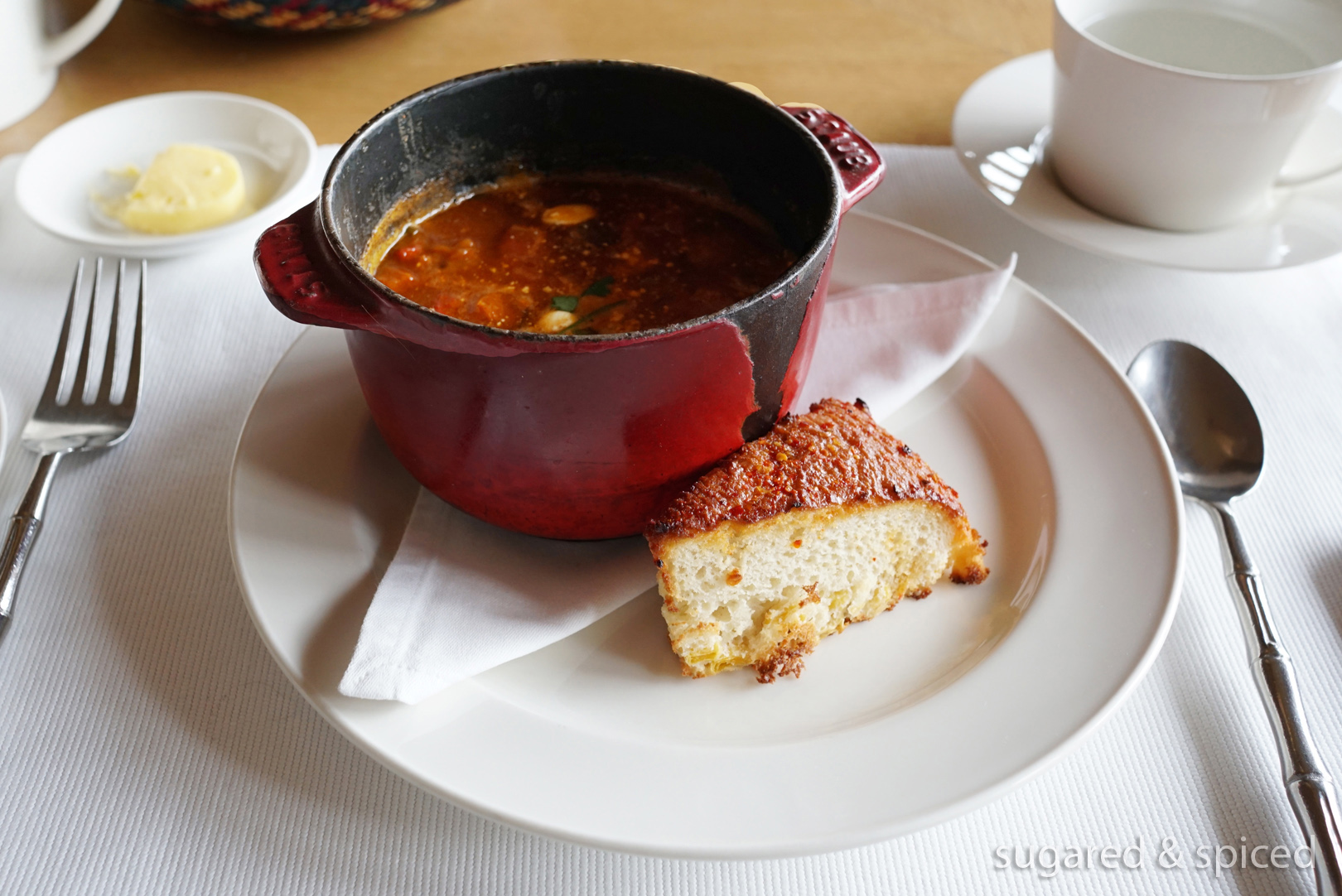
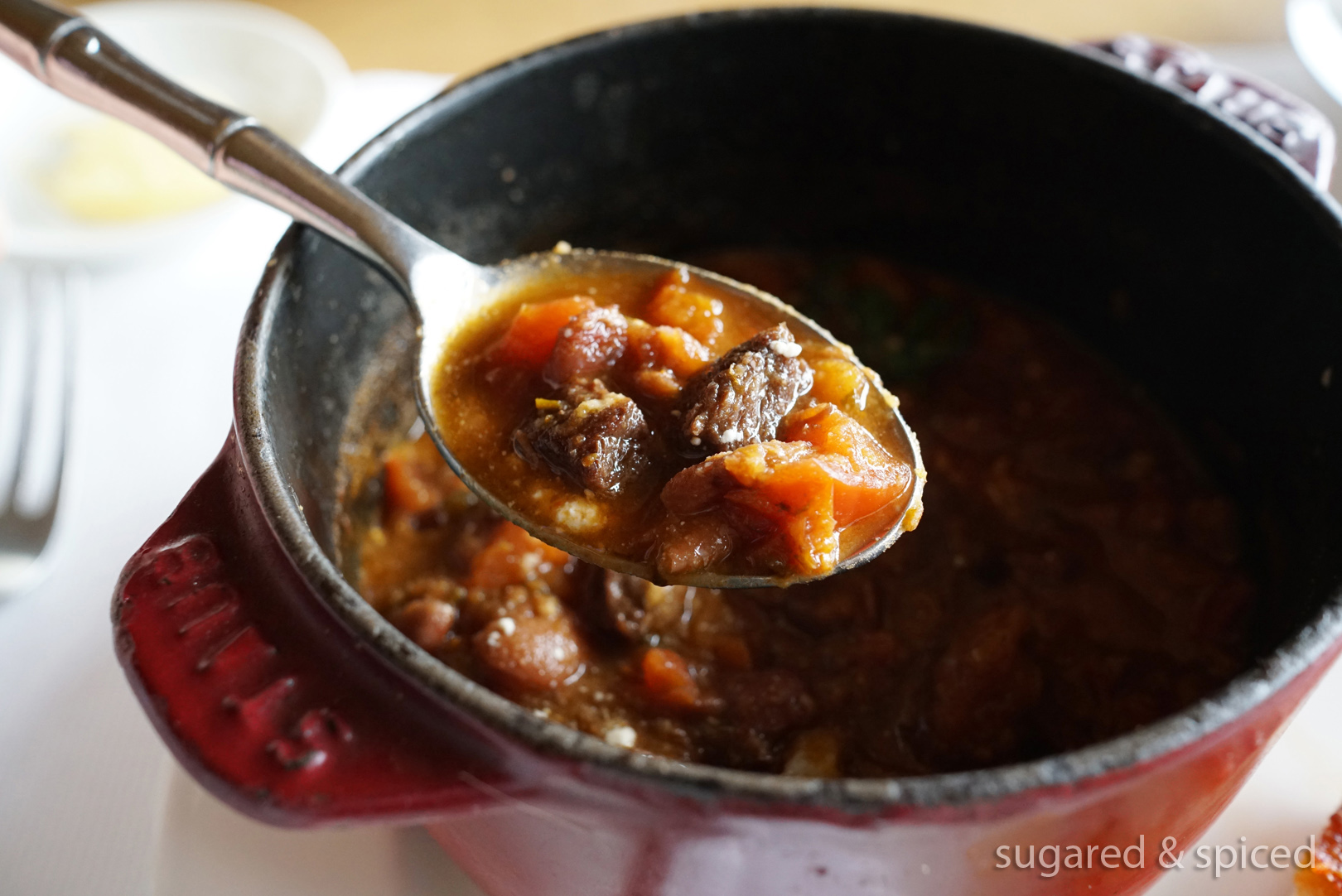
After lunch, we burnt off some calories playing archery (more on this later), then it was time for the much anticipated traditional hot stone bath. This is a form of traditional Bhutanese medicine where fresh river water is mixed with local Artemisia leaves and heated with fire-roasted river stones. It is believed that the heat of the water, the minerals released from the rock, and the local herbs all combine to produce medicinal benefits for joint pains, hypertension, stomach disorders and arthritis. Well, I didn’t have any of the above troubles, but I wouldn’t say no to a good soak in the hot tub…
午餐之後我們玩了射箭(不丹的國民運動,稍後再細述),接著就是令我百般期待的 “傳統熱石浴”。不丹人的泡澡方式非常特別,會將用火燒得紅彤彤的大石頭放入泡有藥草的泉水中,用石頭釋放出的礦物質和藥草的功效緩解關節炎、高血壓、腸胃不適等。嗯,雖然我沒有上述這些毛病,但倒是不介意泡個舒服的熱水澡…
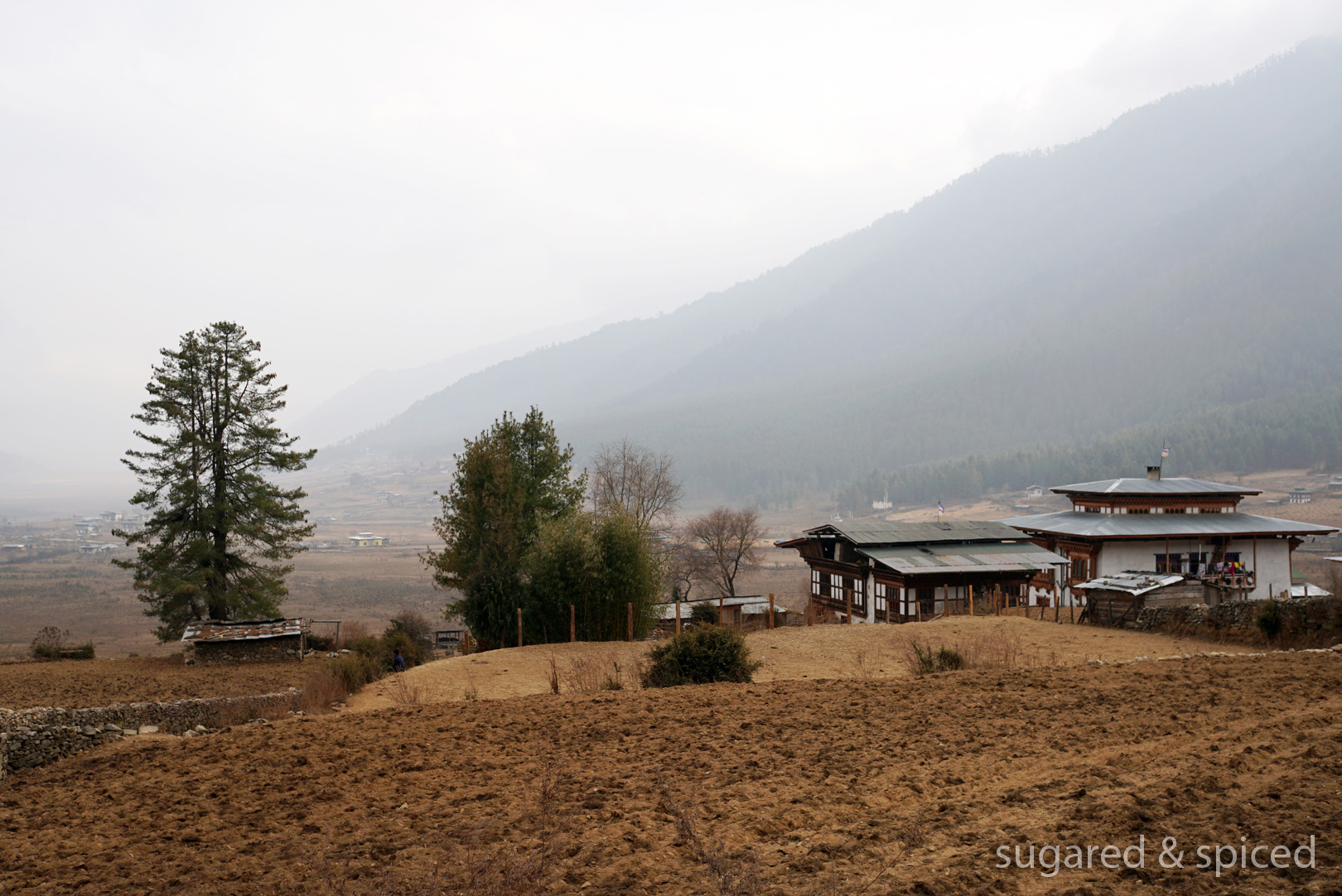
We were led through potato fields, passing by the shed where we had the candle-lit dinner last night.
在前往熱石浴的路上,經過了昨天吃燭光晚餐的馬鈴薯農舍。
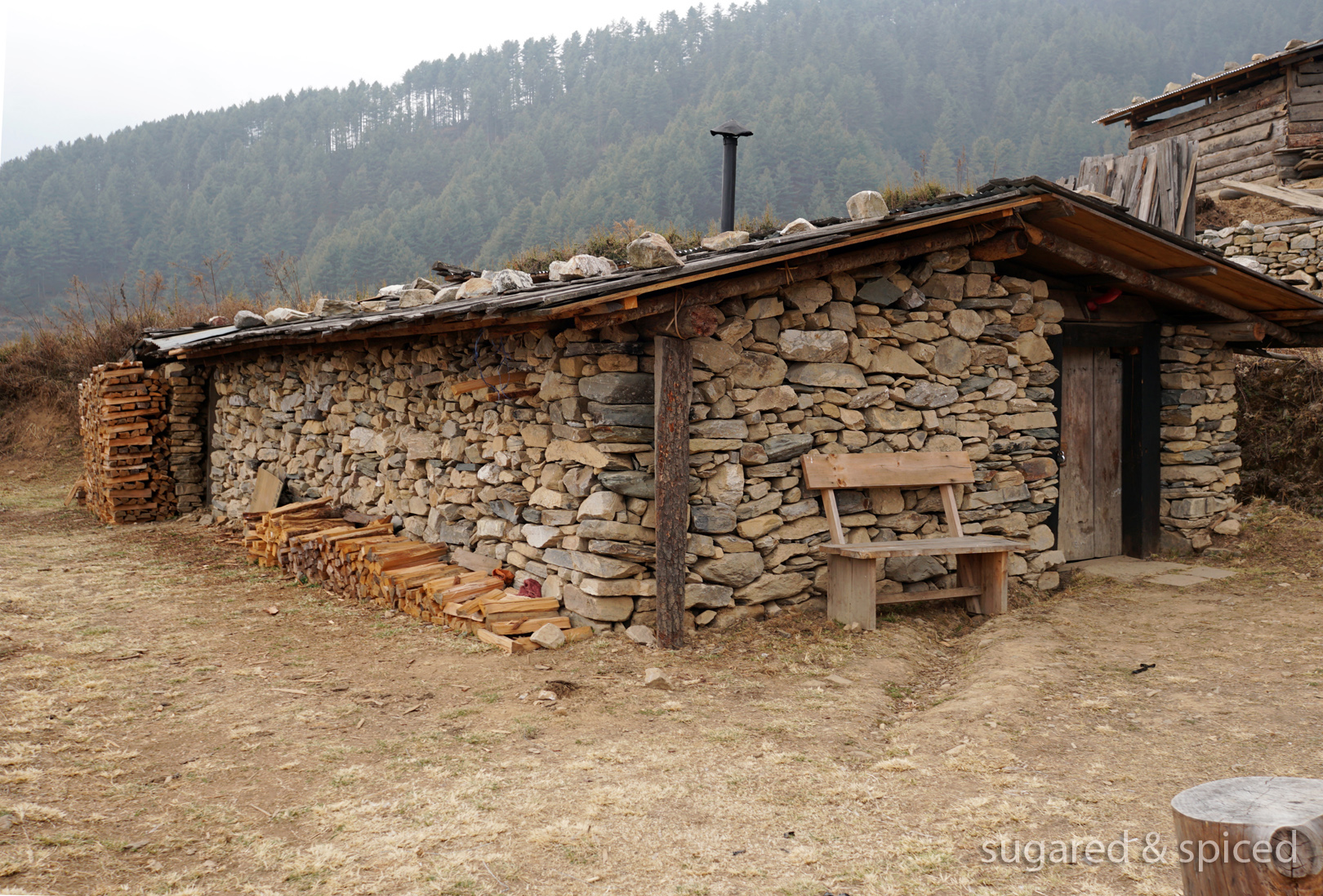
After a 10-minute walk, we reached the shed of interest for this afternoon.
約十分鐘後,來到另一間小屋 – 熱石浴的場所。
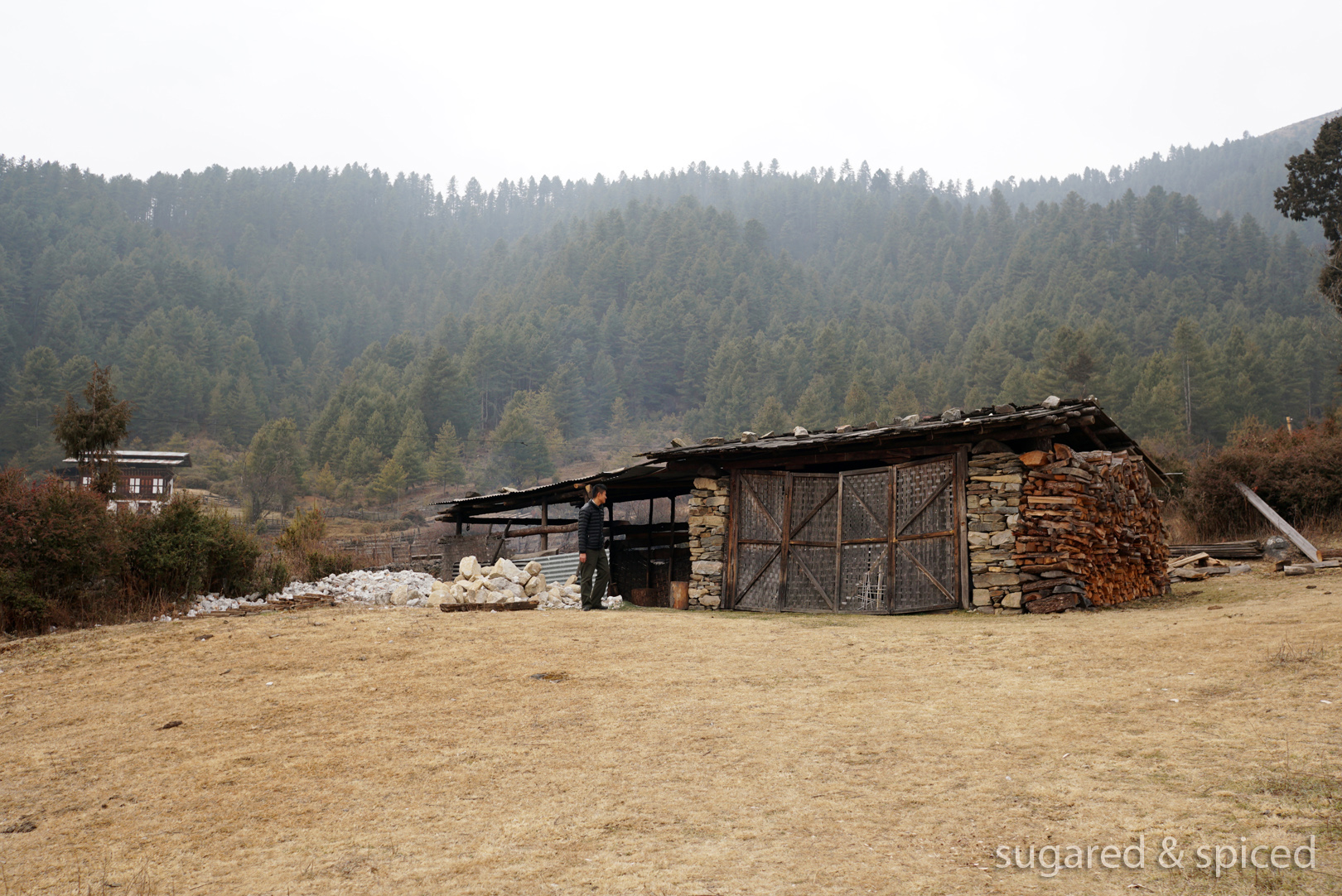
We were greeted by this adorable local farmer, the owner of the hot stone bath who has been working with Amankora Gangtey since it first opened in 2005.
這位可愛的老人家是當地農夫,也是這間熱石浴的主人,笑容滿面地和我們打招呼。
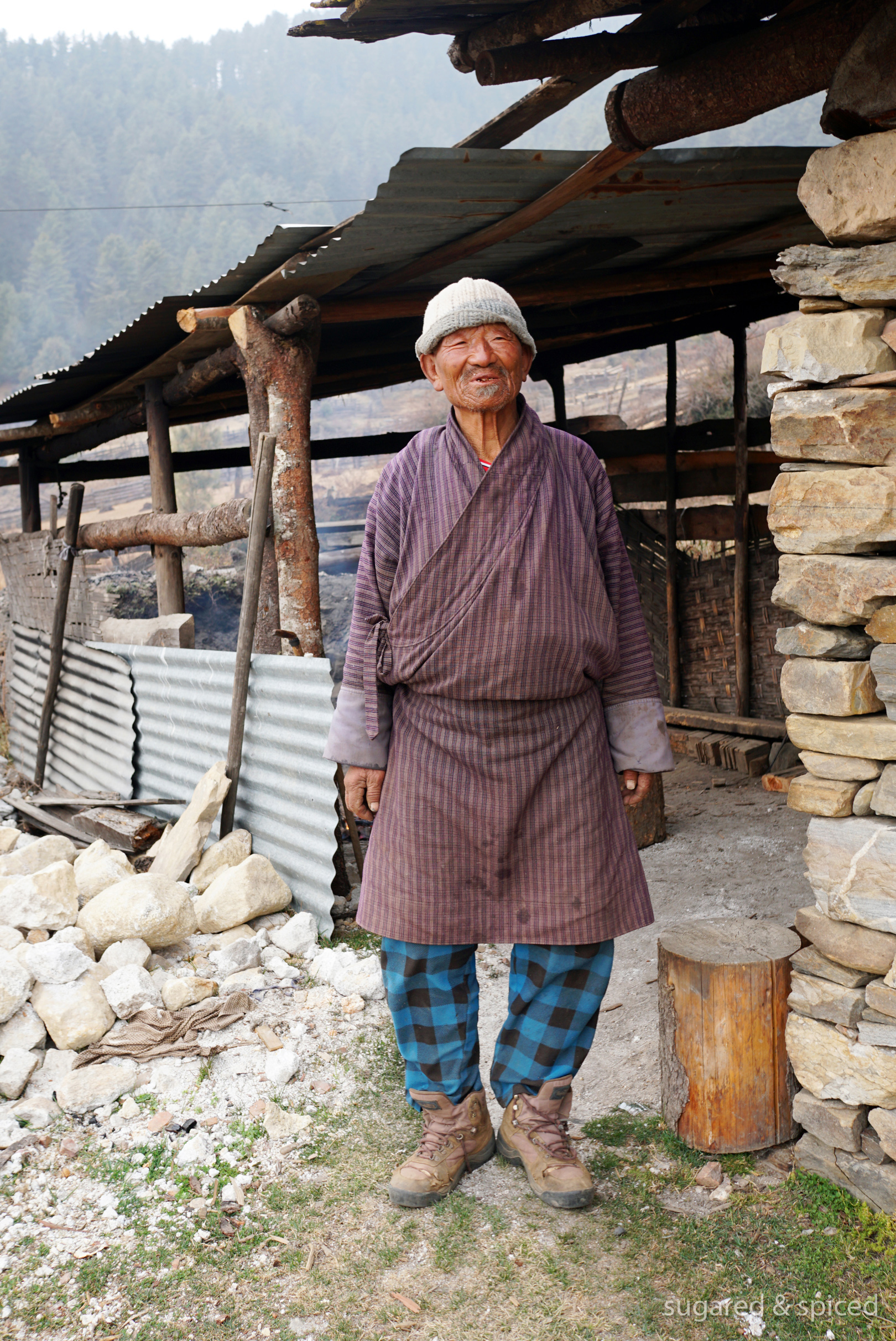
Here, he and the Amankora staff had been putting together a truly unique experience for us. The preparation started with heating large river stones on fire until they are glowing red, then gradually dropping them into a wooden tub filled with water and Artemisia leaves.
(The section with hot stones is separated by a wooden bar so there is no danger of getting burnt by stones.)
踏入小屋一看,牆上已點著浪漫的蠟燭,木桶里放好泉水、藥草、和熱石,空氣中漂浮著黃花蒿的舒緩香氣…
註:浴盆分為兩個部分,放置熱石和泡湯的部分用柵欄隔開,水流能互相導熱,但不用擔心會被石頭燙到。
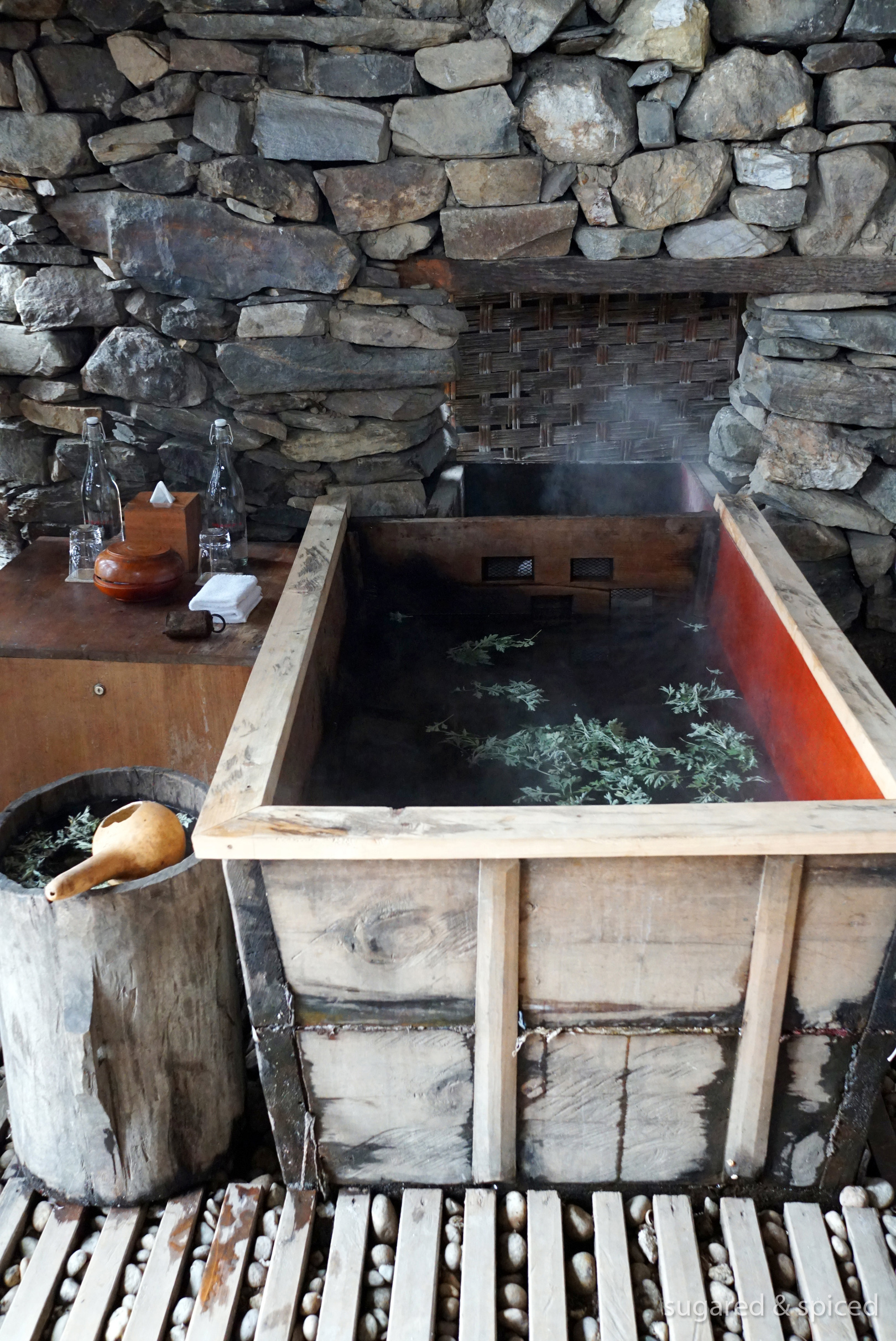
Artemisia leaves, also known as wormwood, give off a soothing, almost sage-like fragrance.
這就是黃花蒿,香氣類似鼠尾草。
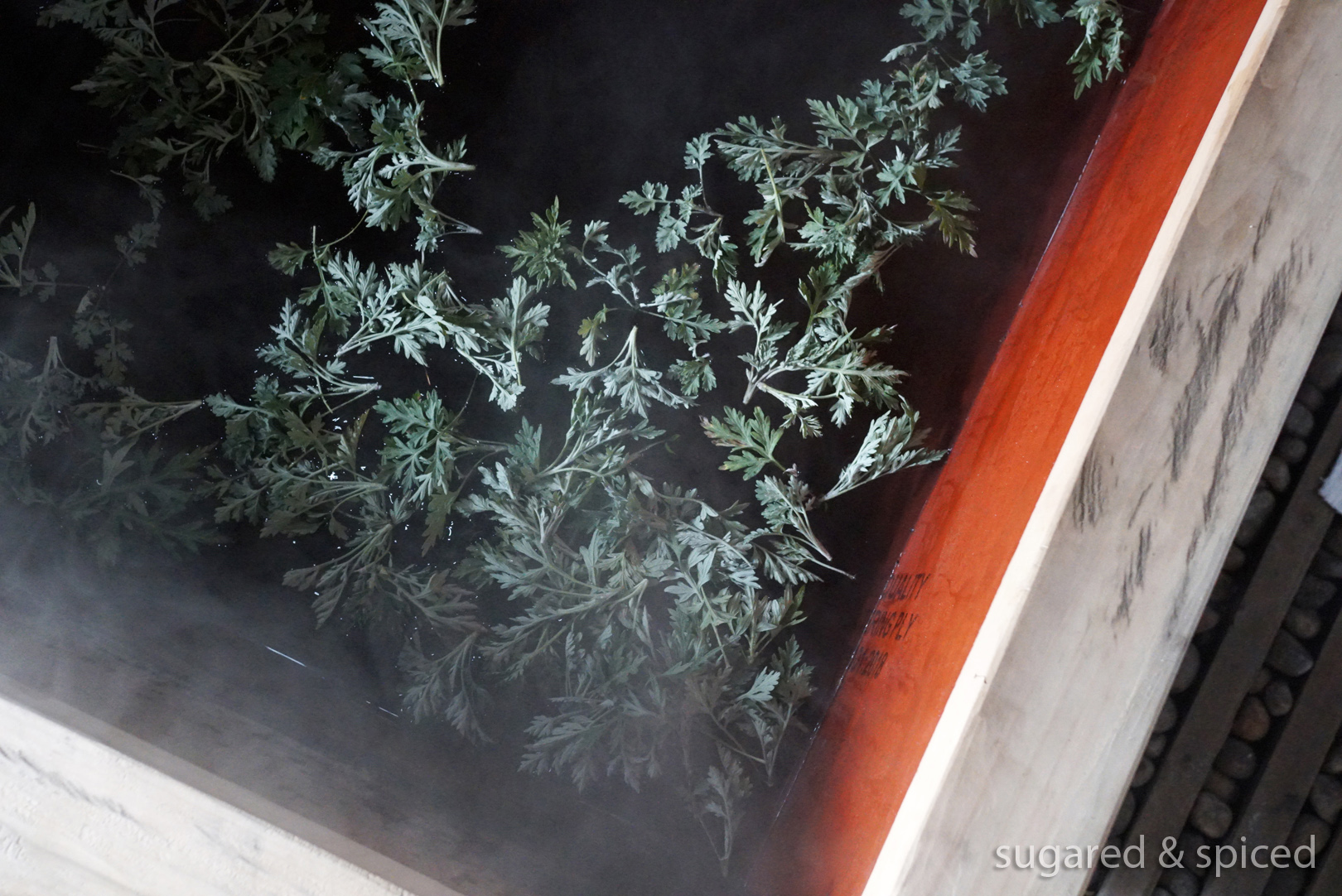
On a side table, there were water to keep us hydrated, and chips made from potatoes harvested in this very field. Next to it, a small ornate bell cast which we were to ring once we got settled in the hot water. With the ring, two Amankora staff theatrically flung open the bamboo sliding door to reveal the Phobjikha Valley and the mist-strewn Gangtey Monastery perched on the opposite hill, where we were standing earlier this morning.
It’s one of those moments that took my breaths away.
在浴盆旁邊的桌上,有甘甜的礦泉水、當地馬鈴薯製成的薯片、以及一個精緻的鈴鐺。當我們全身浸泡在熱水中之後,輕輕搖了鈴鐺,兩位工作人員便從農舍外將竹門 “唰!” 地拉開。豁然呈現在眼前的是煙霧繚繞中的山谷,以及對面山頭上崗提寺那讓人安心的存在。
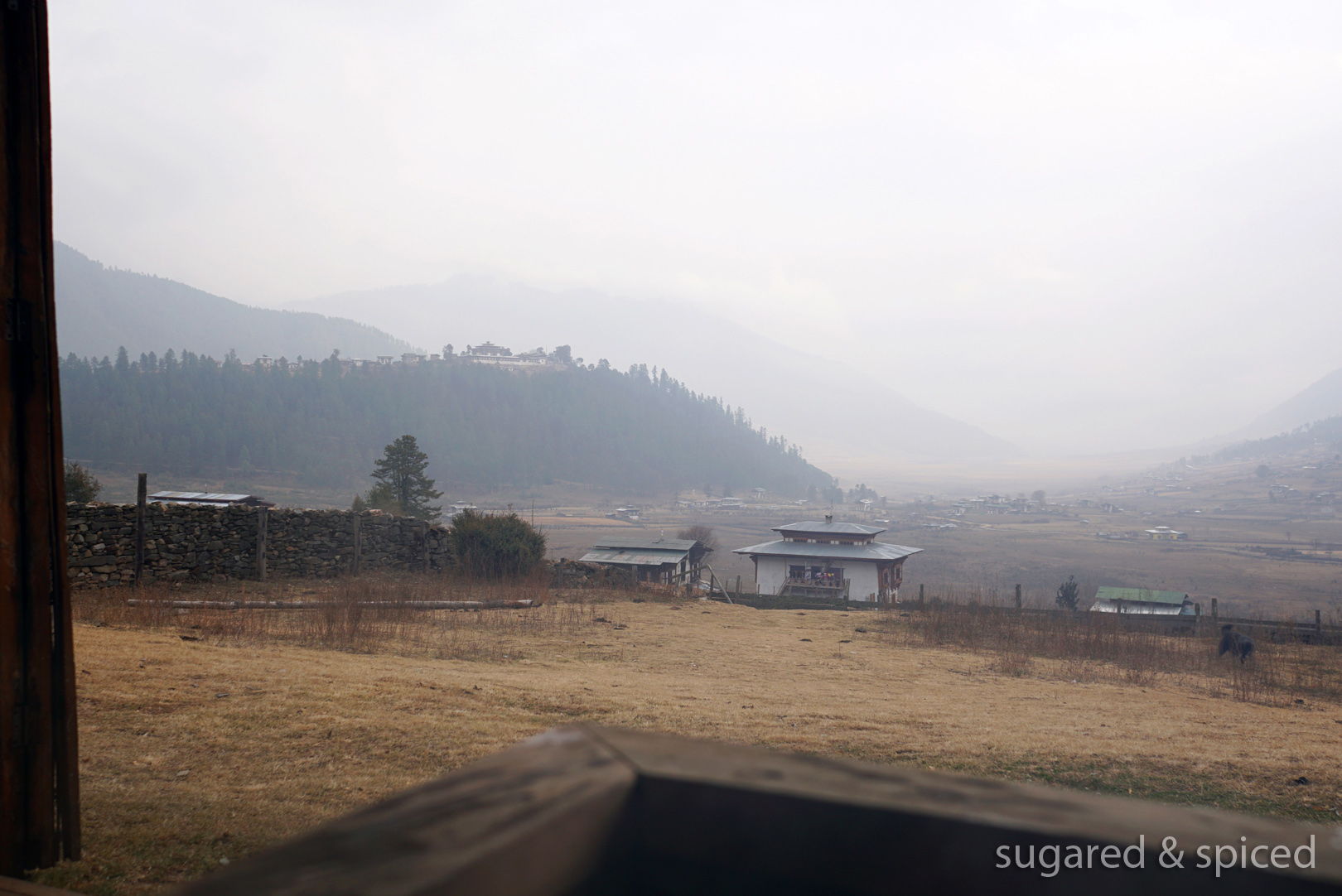
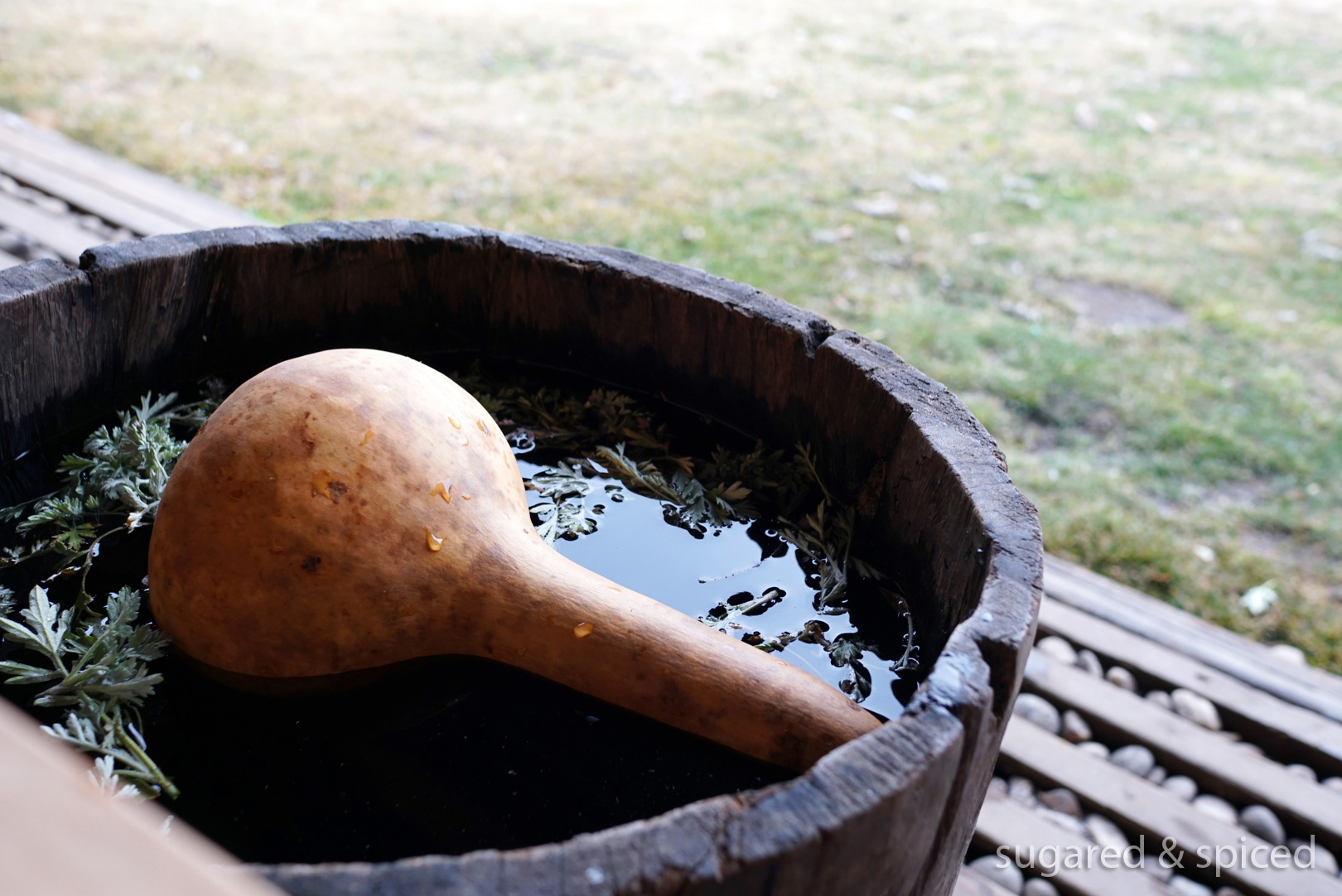
We must have stayed there for over an hour, until our skins became pale and wrinkly, before we reluctantly lifted ourselves from the tub. Out of all my hot spring experiences, from luxurious onsens in Japan to the Blue Lagoon in Iceland, this, was perhaps the most memorable. The setting in the wilderness of a remote village, shrouded in a dreamy mist and accompanied by trumpeting calls of black-necked cranes in the afar…it was out of this world.
身體感受著泉水的療癒溫度,眼裡看著偏遠村落的飄渺美景,鼻子聞著藥草的芳香氣息,耳里傳來黑頸鶴在遠方的高昂鳴叫,以及熱石放入水中時的嘶嘶聲…一切都美得虛幻,像小說里的場景。可能泡了一個小時吧,直到手腳都起了皺折,才依依不捨地起身。在目前所有的泡湯體驗里 – 不論是日本的高級溫泉,還是冰島的私人藍湖 – 這場熱石浴可能是讓我印象最深刻的。

Then, a dinner of momo, ezay, and Bhutanese curries back in the dining room. The communal table set-up at Amankora Gangtey is conducive to friendly conversations, and we had the pleasure of meeting and exchanging travel stories with a lovely couple from Chicago who just checked-in that day.
晚餐時刻,仍然選擇不丹料理,是我們已熟悉的 momo(蒸餃)、ezay(辣椒醬)、咖哩等等,完全吃不膩。Amankora Gangtey 的方桌設計很適合讓客人們聊天,當晚有一對從芝加哥來的夫婦剛入住,我們雖然是第一次見面,但對不丹滿滿的感動讓我們有聊不完的話題。
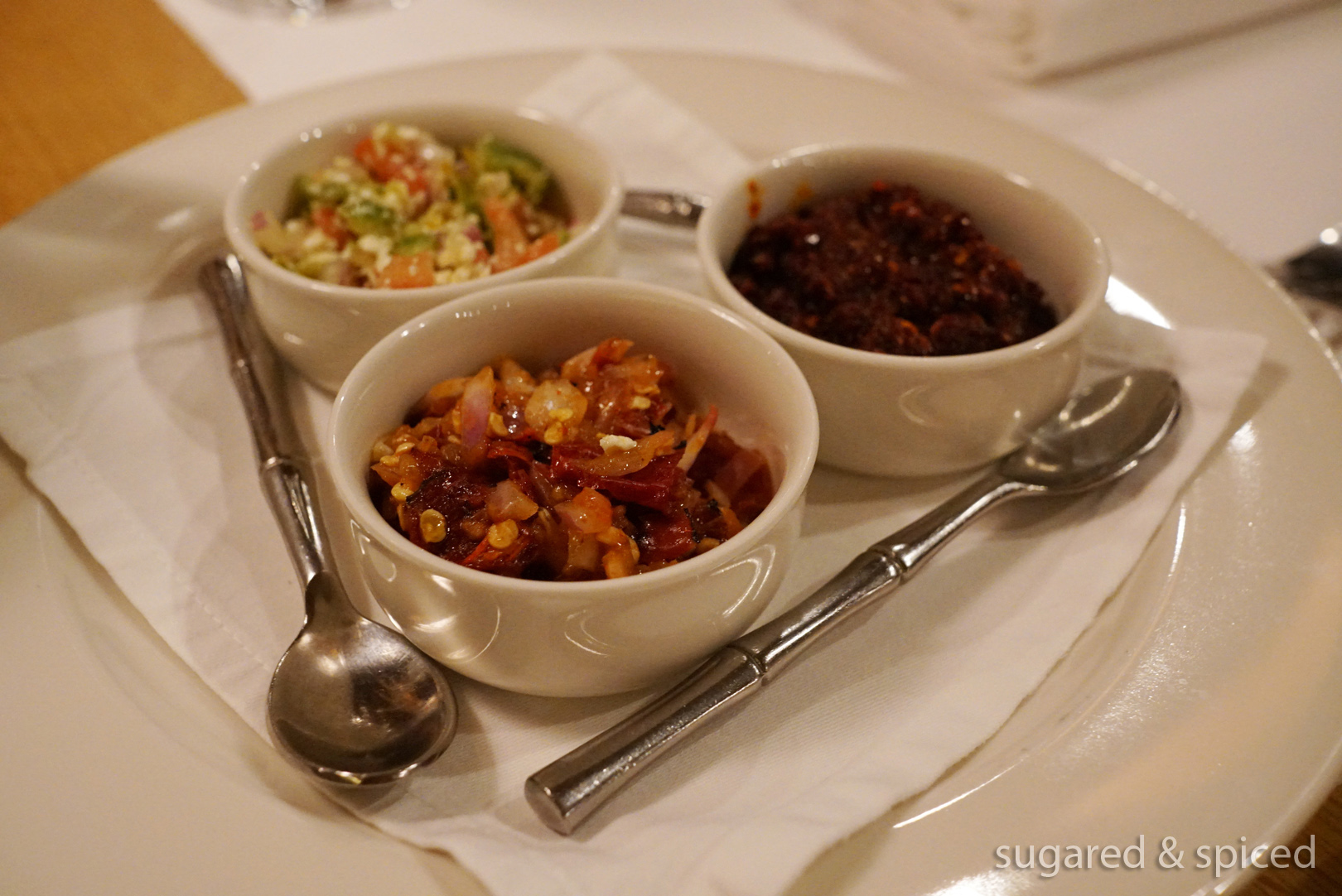
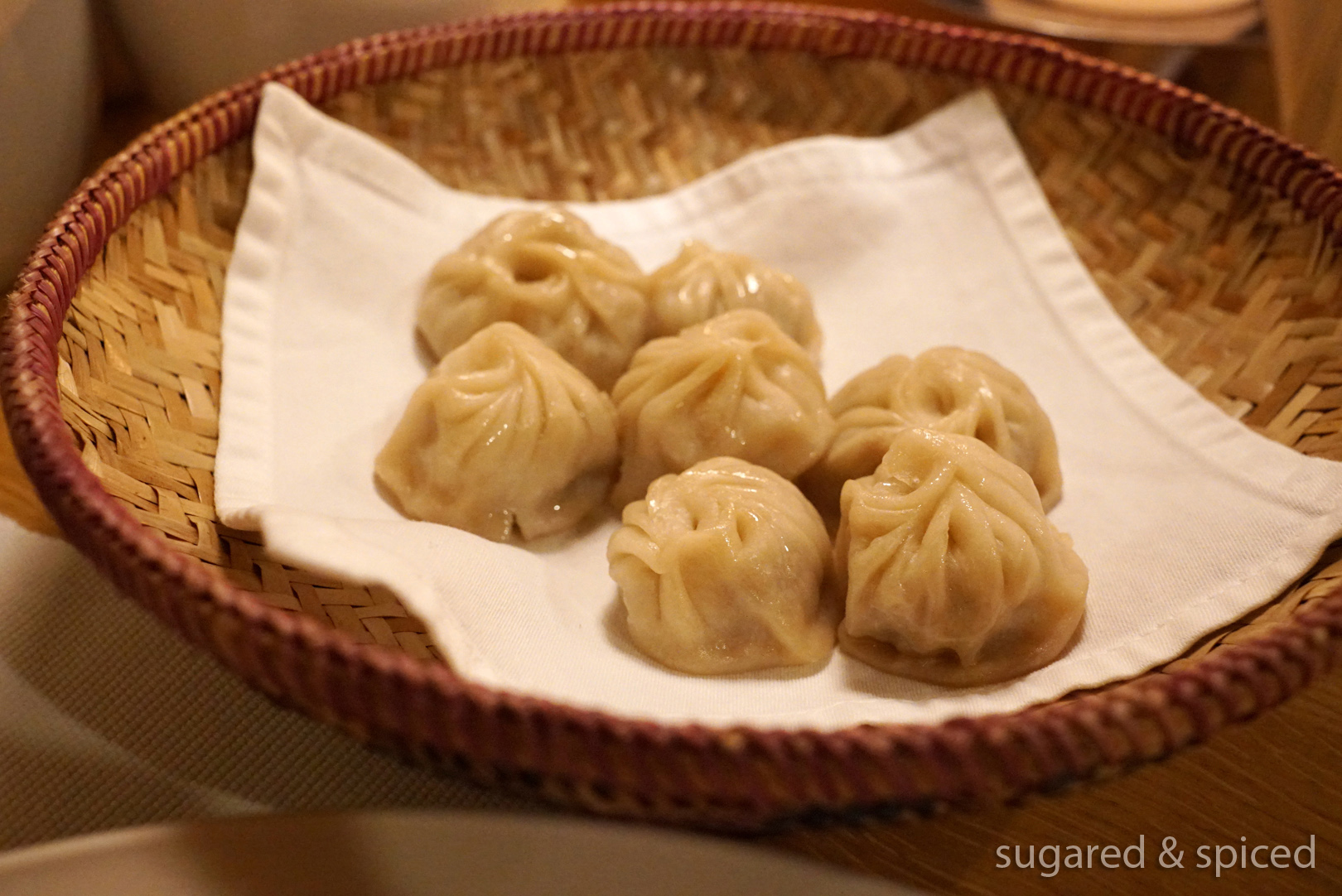
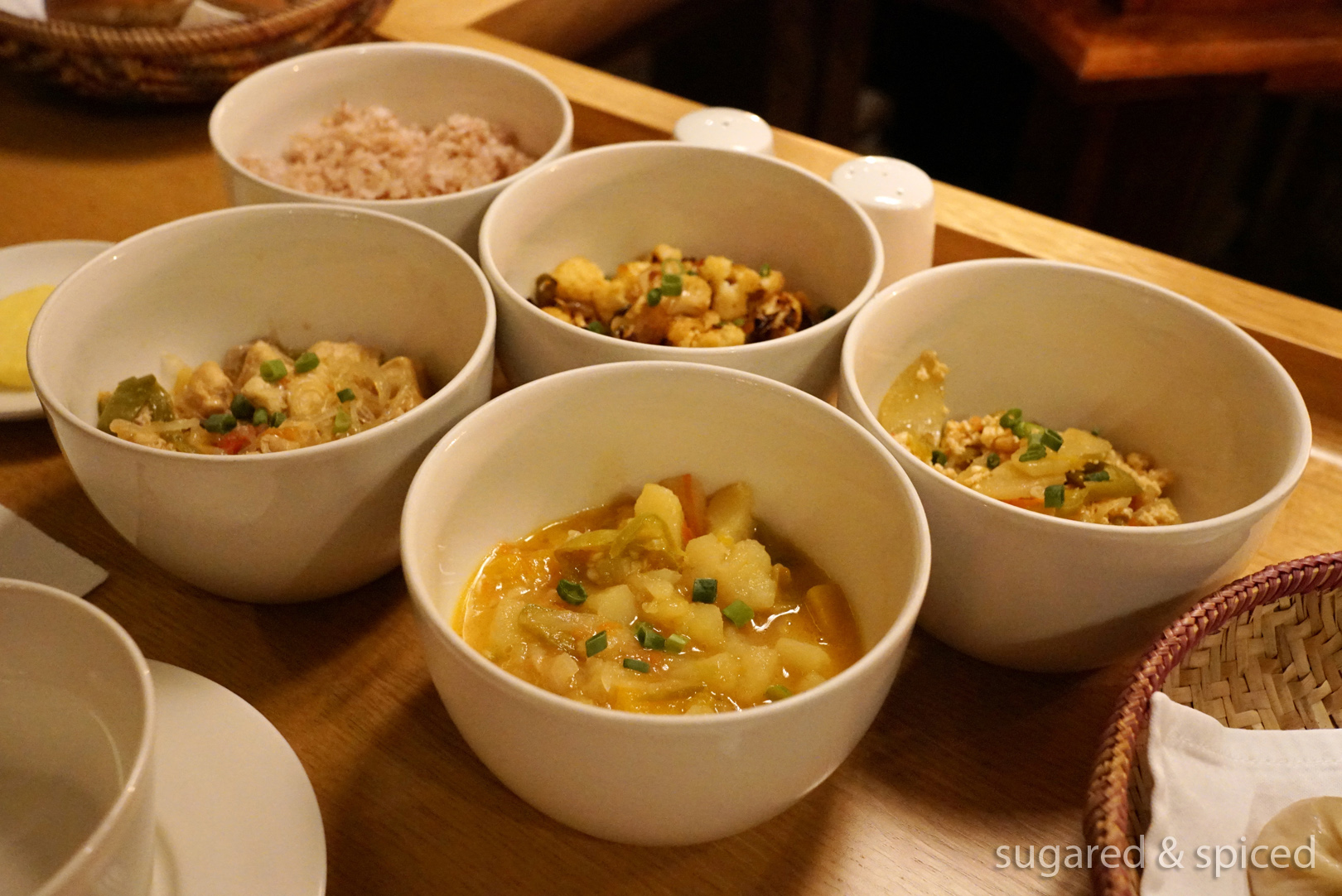
To end the evening, a steamed butter pudding with toasted almond ice cream, toffee sauce, and honey twist. It’s worth noting that the western menu at Amankora is also meticulously curated, never failing to satisfy us when we needed a small pause from local food.
甜點是蒸麵包布丁佐杏仁冰淇淋、太妃醬、和蜂蜜脆餅。這裡不僅不丹菜色做得美味,西式料理也令人滿意。
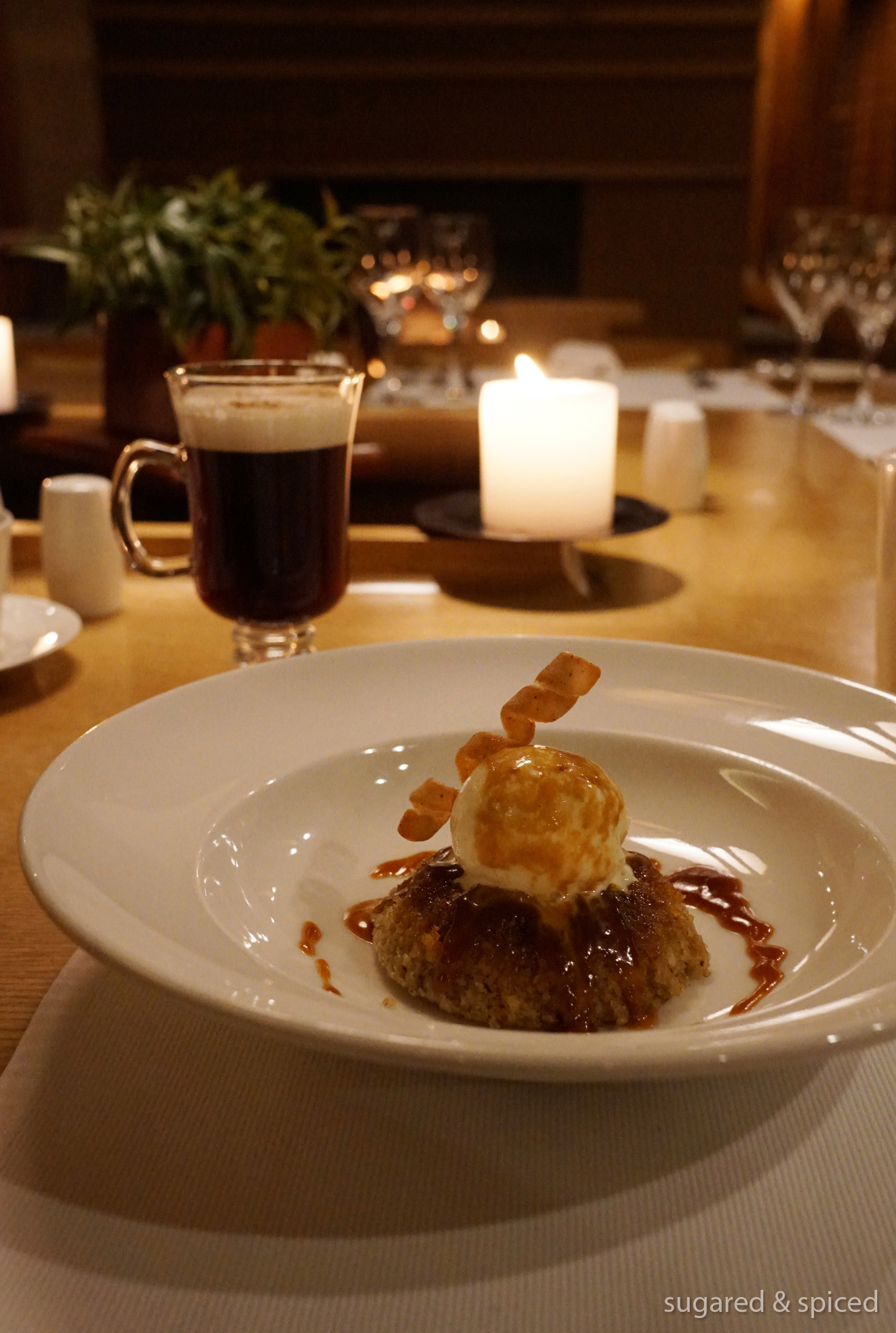
I also noticed that there were no speakers in the lodges, and that the only music to be heard, other than natural melodies from the birds and the cows and the wind, were played live. Here, the same musician from the evening before was playing drangyen, the Bhutanese lute.
在 Amankora 的第三晚,我發現這裡不但沒有電視,也沒有音響系統。在 lodge 裡能聽到的音樂,除了大自然的聲音之外,都是樂手的現場演奏(昨晚和今晚,都由這位先生為我們演奏不丹琵琶)。
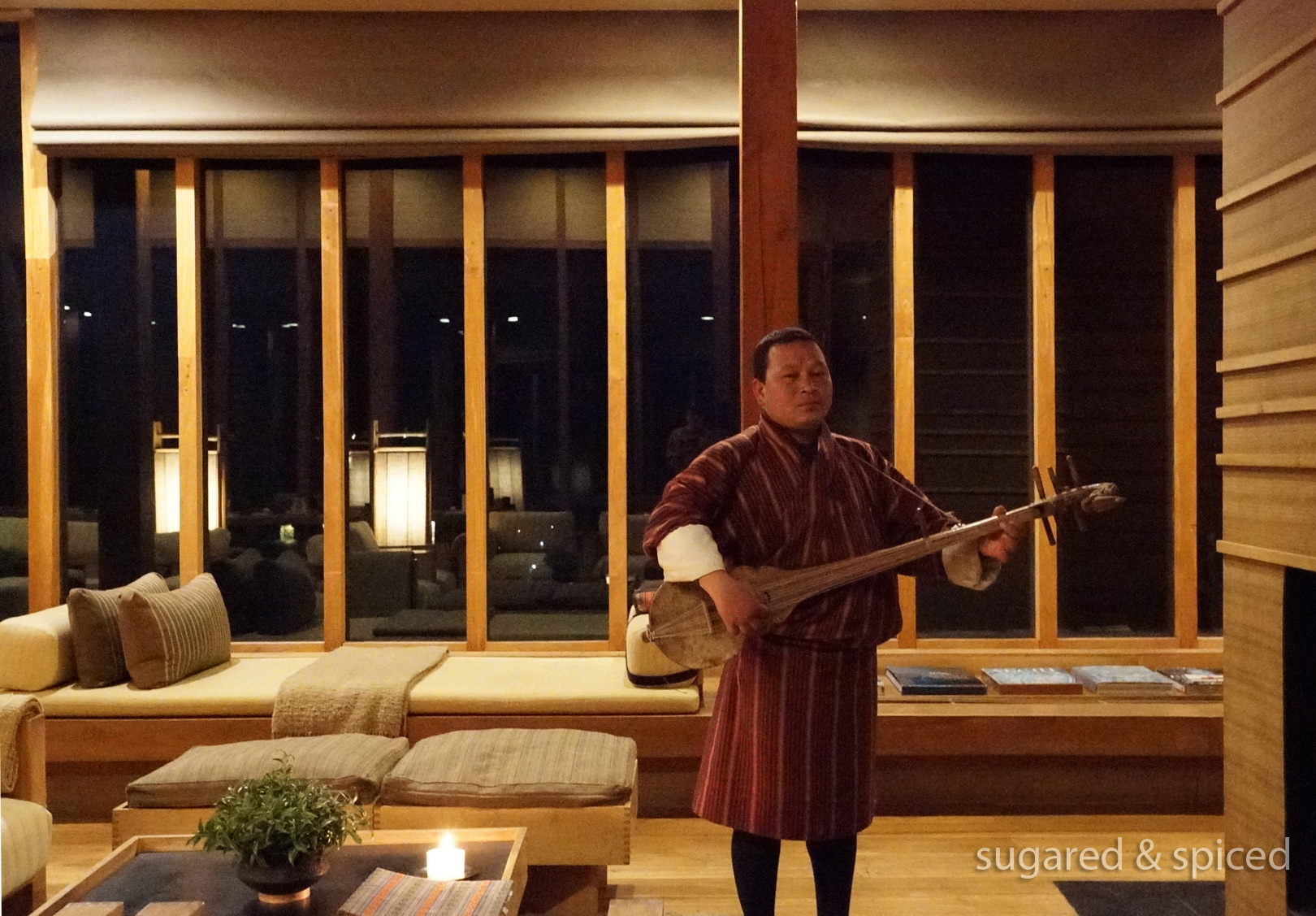
The evening gift of this day was a pair of “chugo”, also known as Bhutanese chewing gum made out of dried yak cheese, a wildly popular snack amongst the locals (I gave them a try…they are really, really hard to chew on). The other two items in the photo are what I’ve already mentioned before, the book on Dawa the stray dog, and river stones painted with black-neck cranes.
床上照慣例放著 Amankora 送來的禮物,今晚是用氂牛牛奶做成的乾起司 “chugo”,一種不丹人非常喜歡的零食(試吃了看看…真的非常硬!) 。照片中另外兩樣是之前提到過的流浪狗 Dawa 書、以及畫有黑頸鶴的石頭。
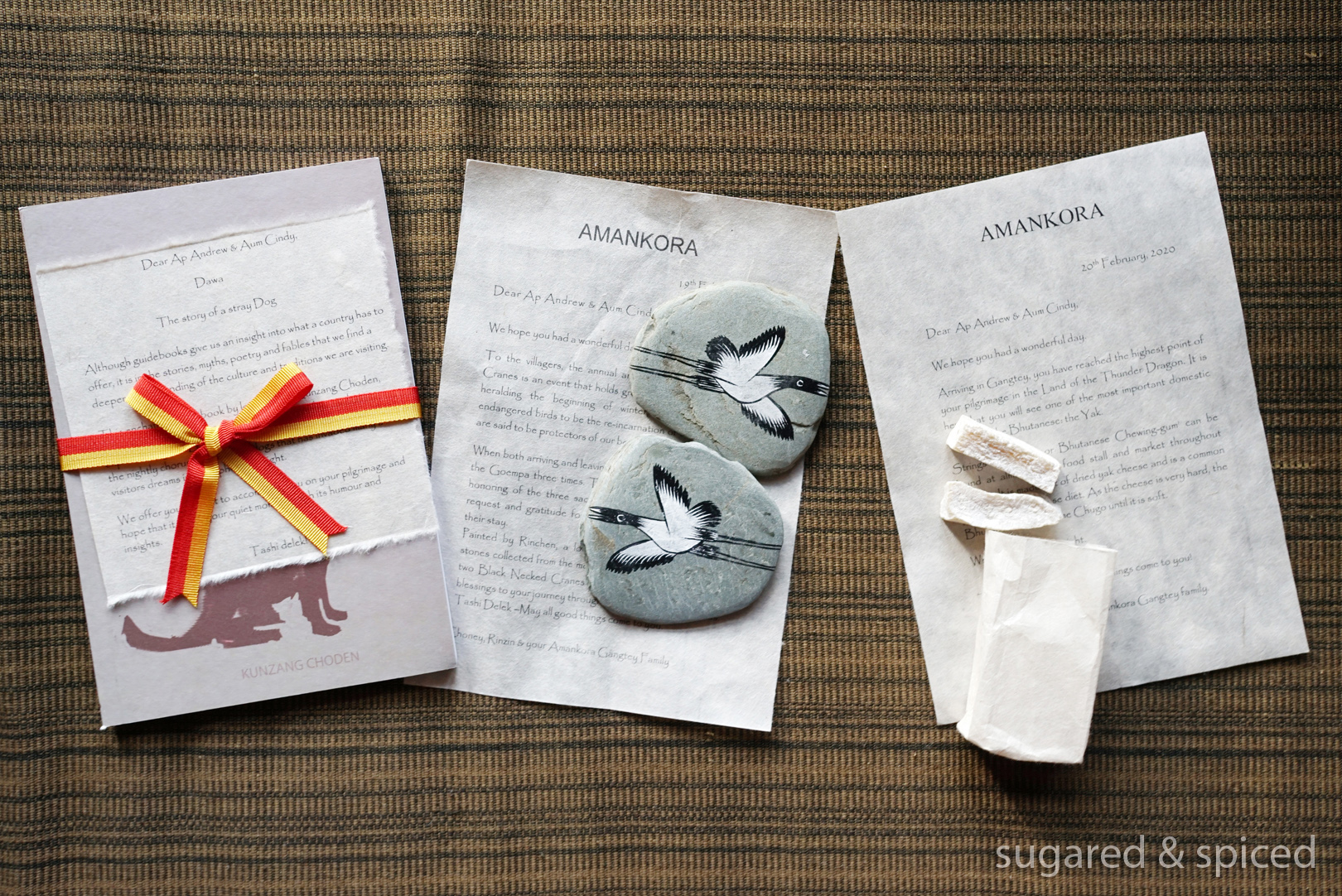
To be continued…未完,待續。
Note: If you would like to see some videos from the trip, please visit my instagram account “sugarednspiced” for Bhutan story highlights.
注:歡迎來 Instagram 帳號 “sugarednspiced” 看看我的不丹精選限時動態
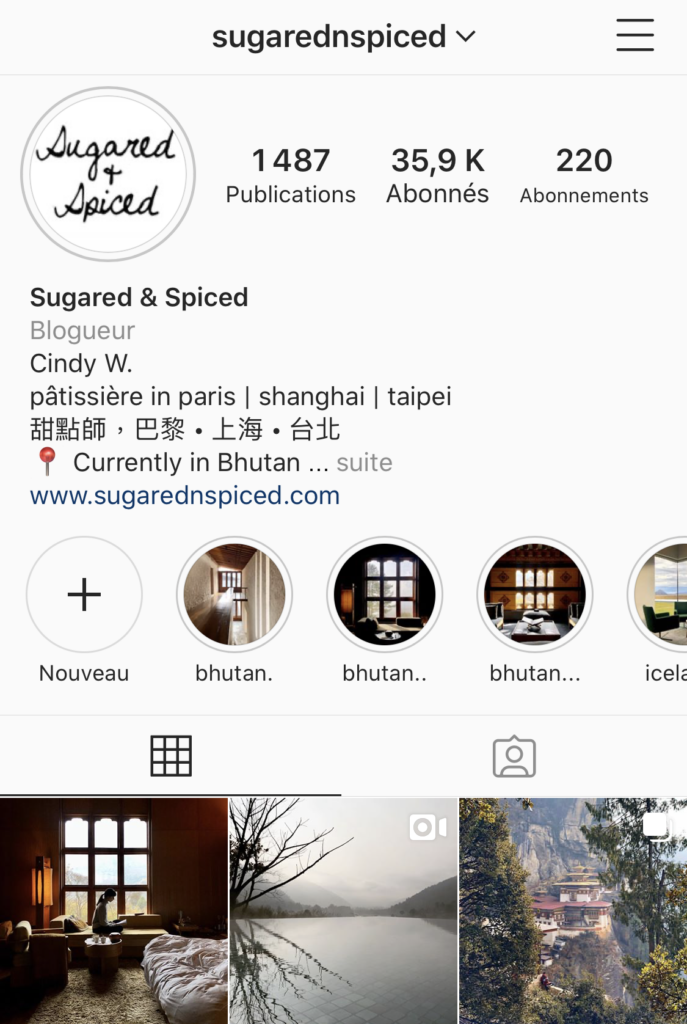
thanks for sharing your journey. There are lots of takeaways. Now I am willing to travel Bhutan in upcoming summer vacations.
You are welcome :) Bhutan is definitely worth the visit.